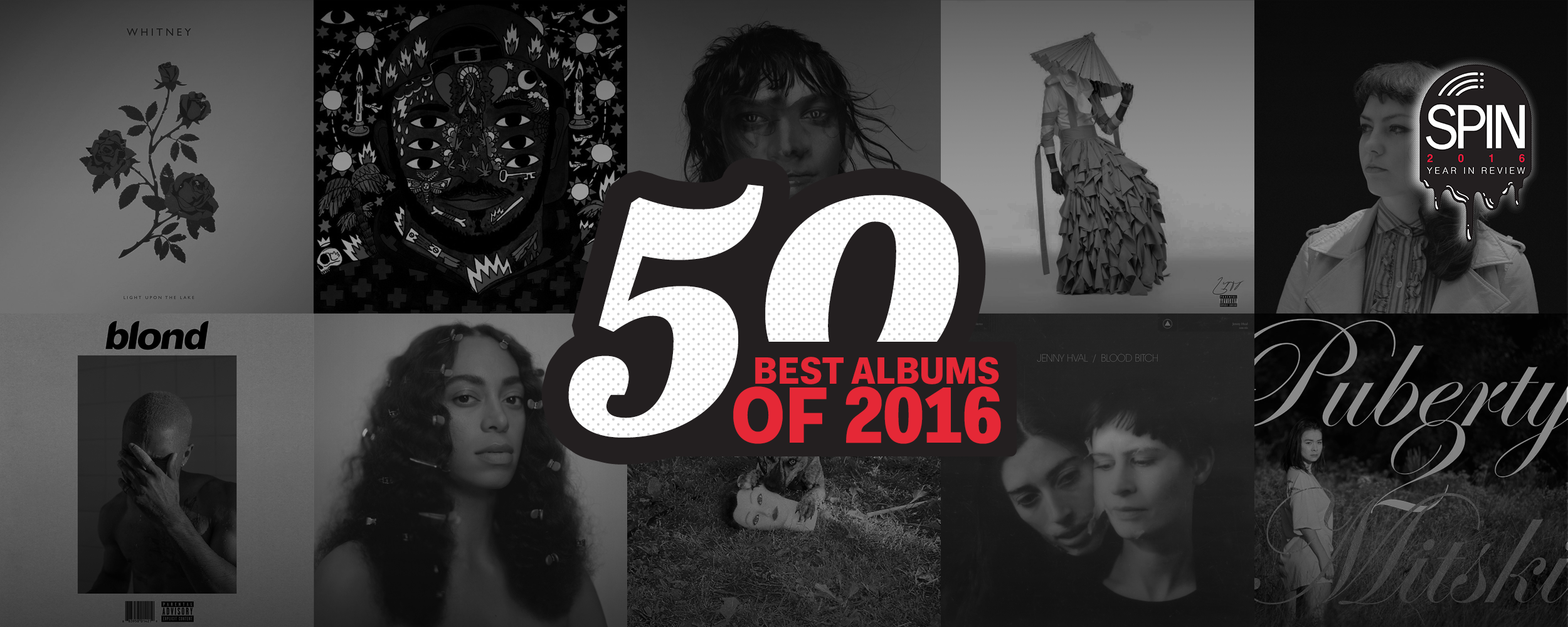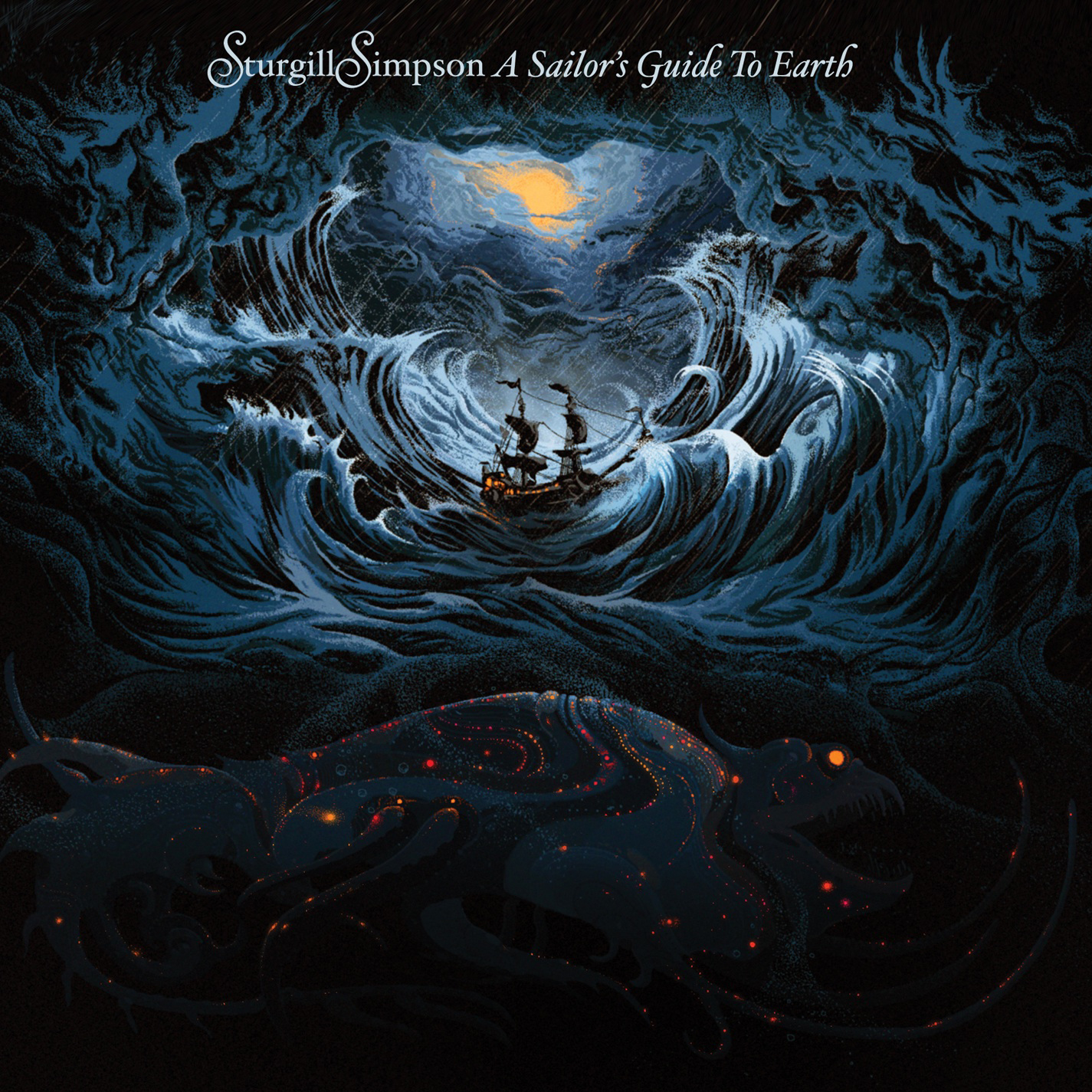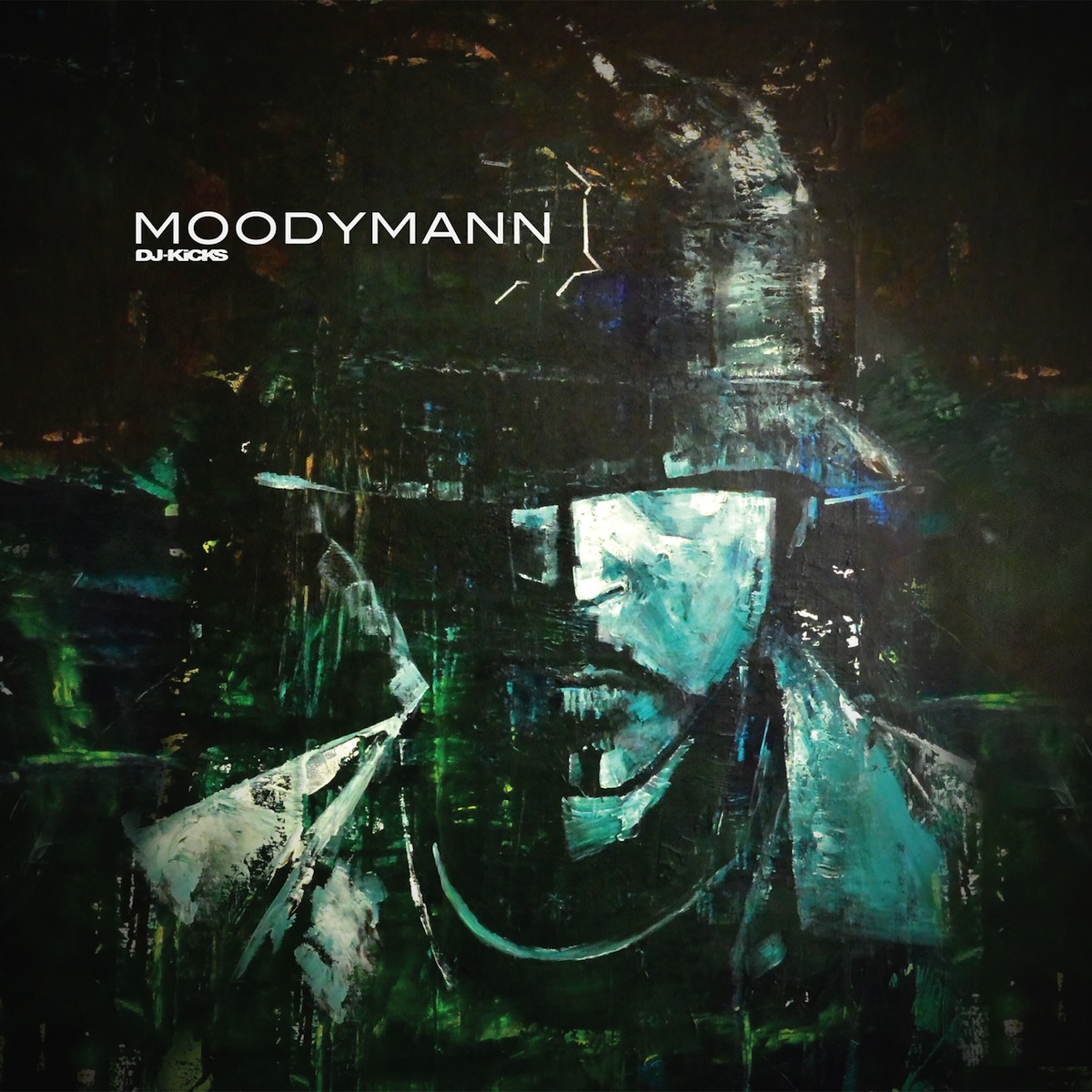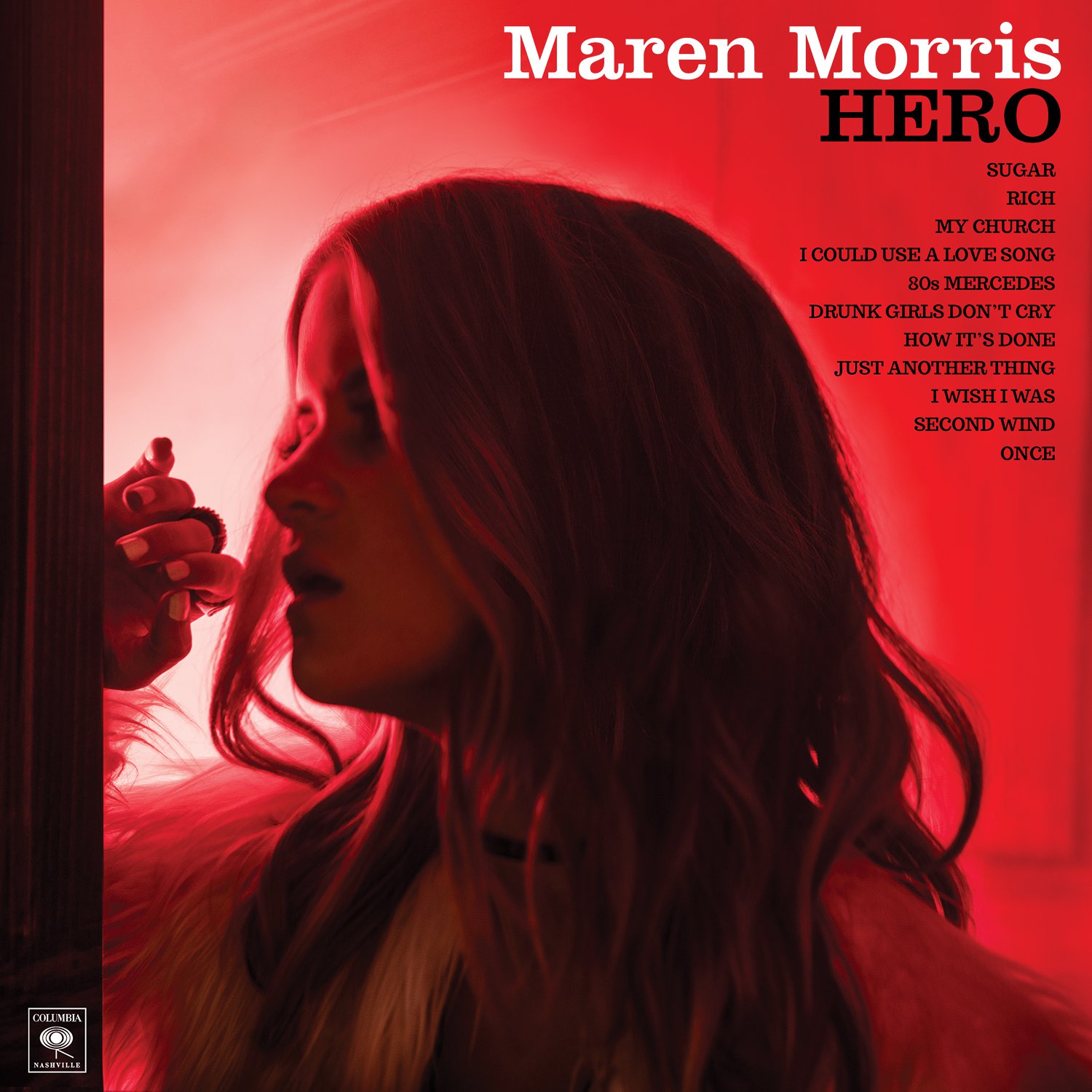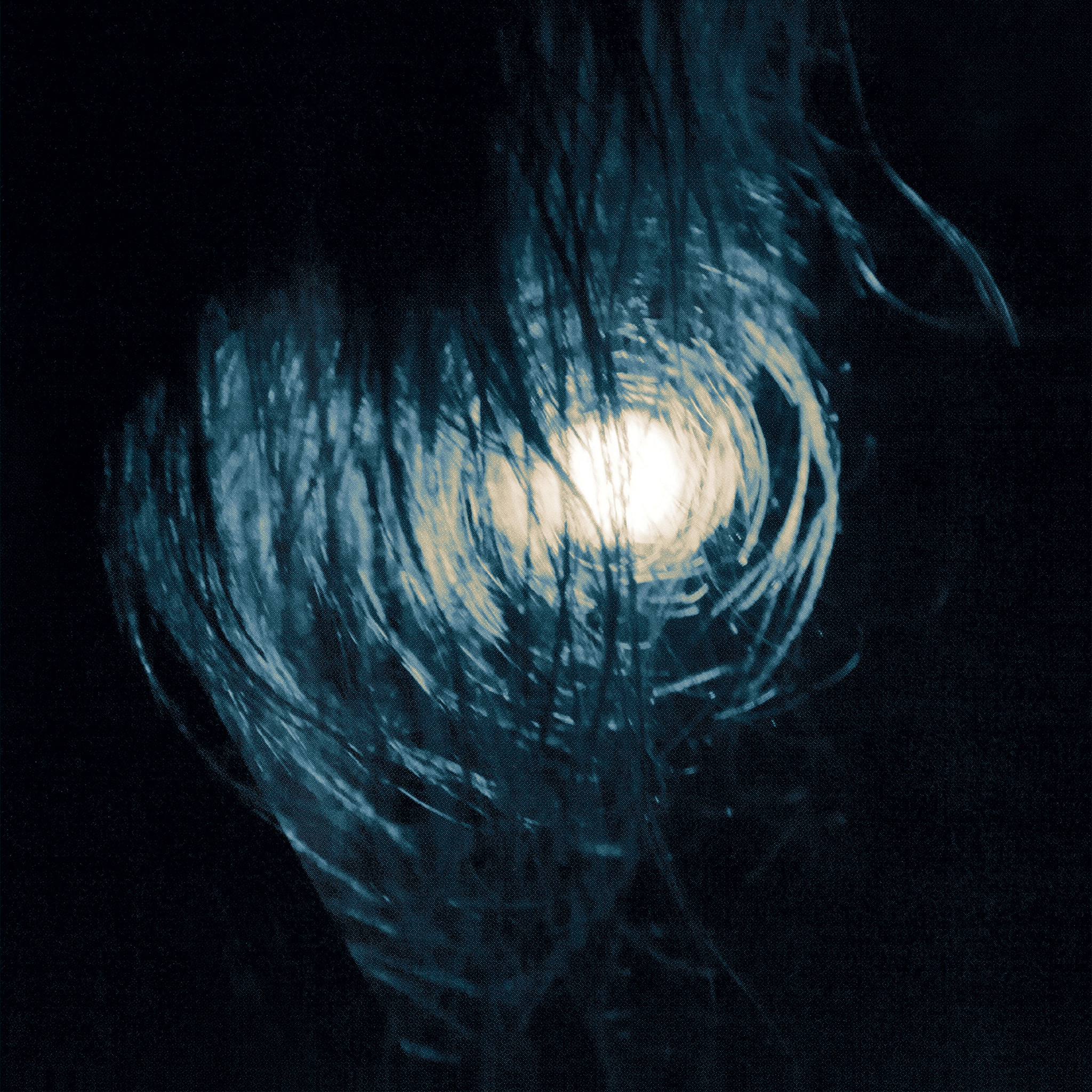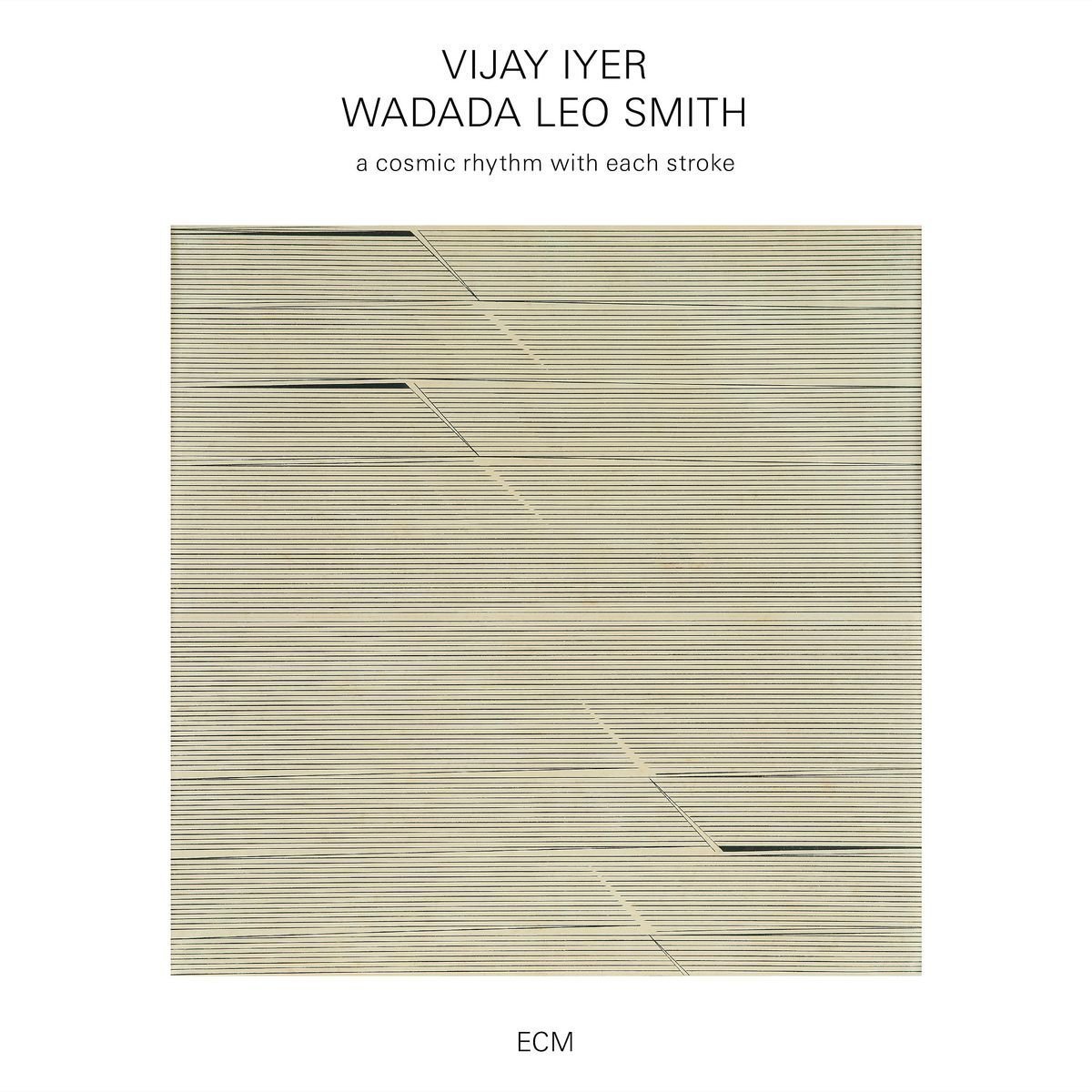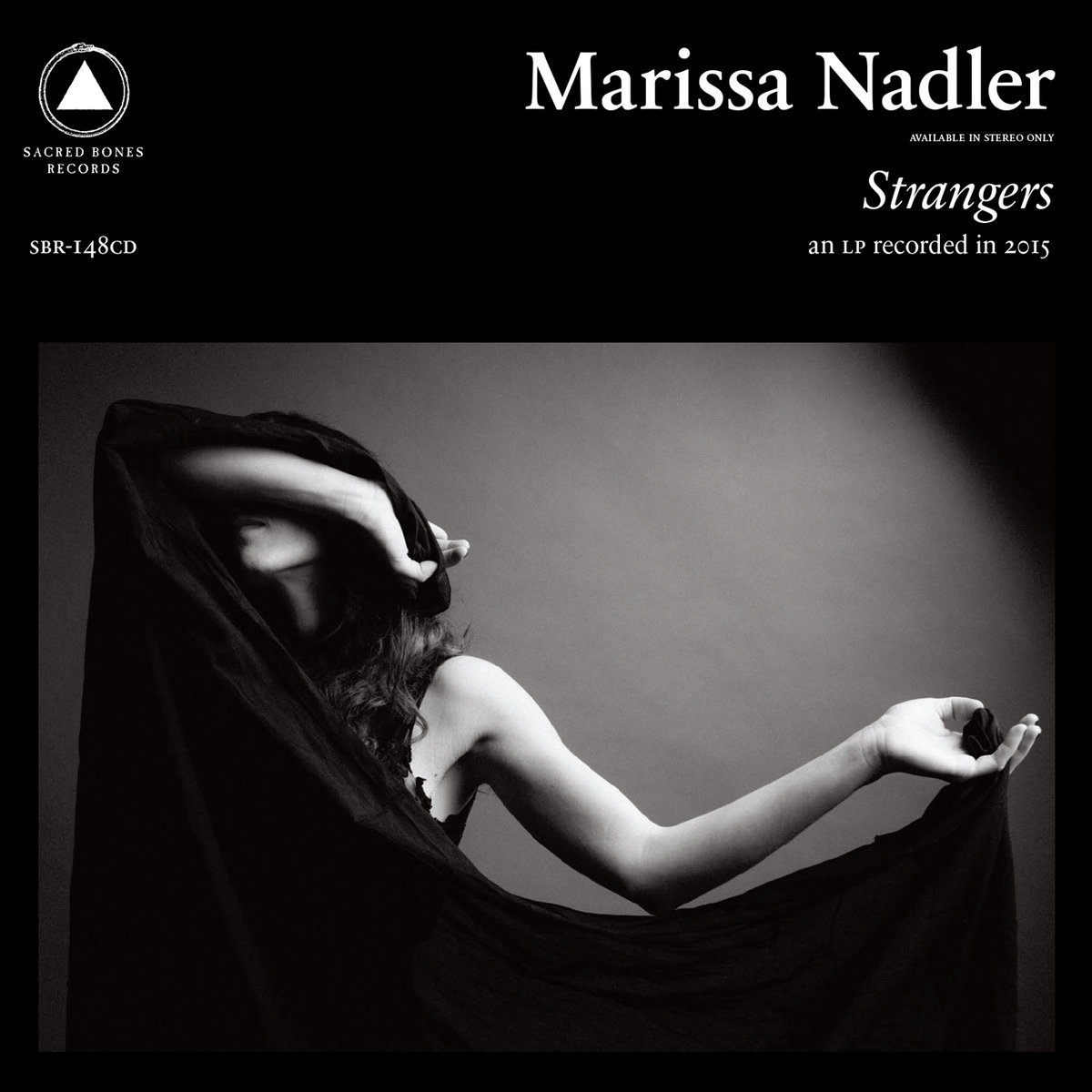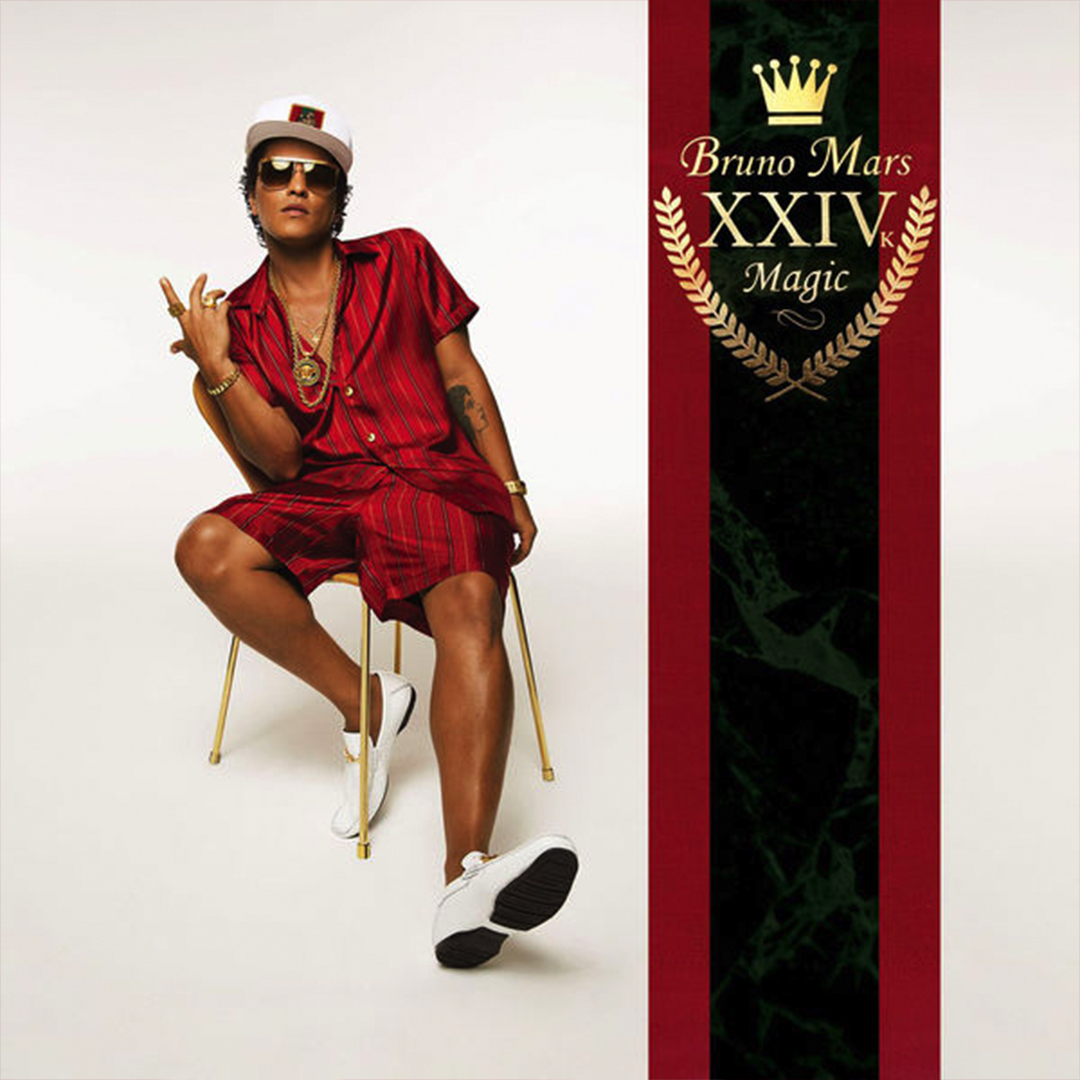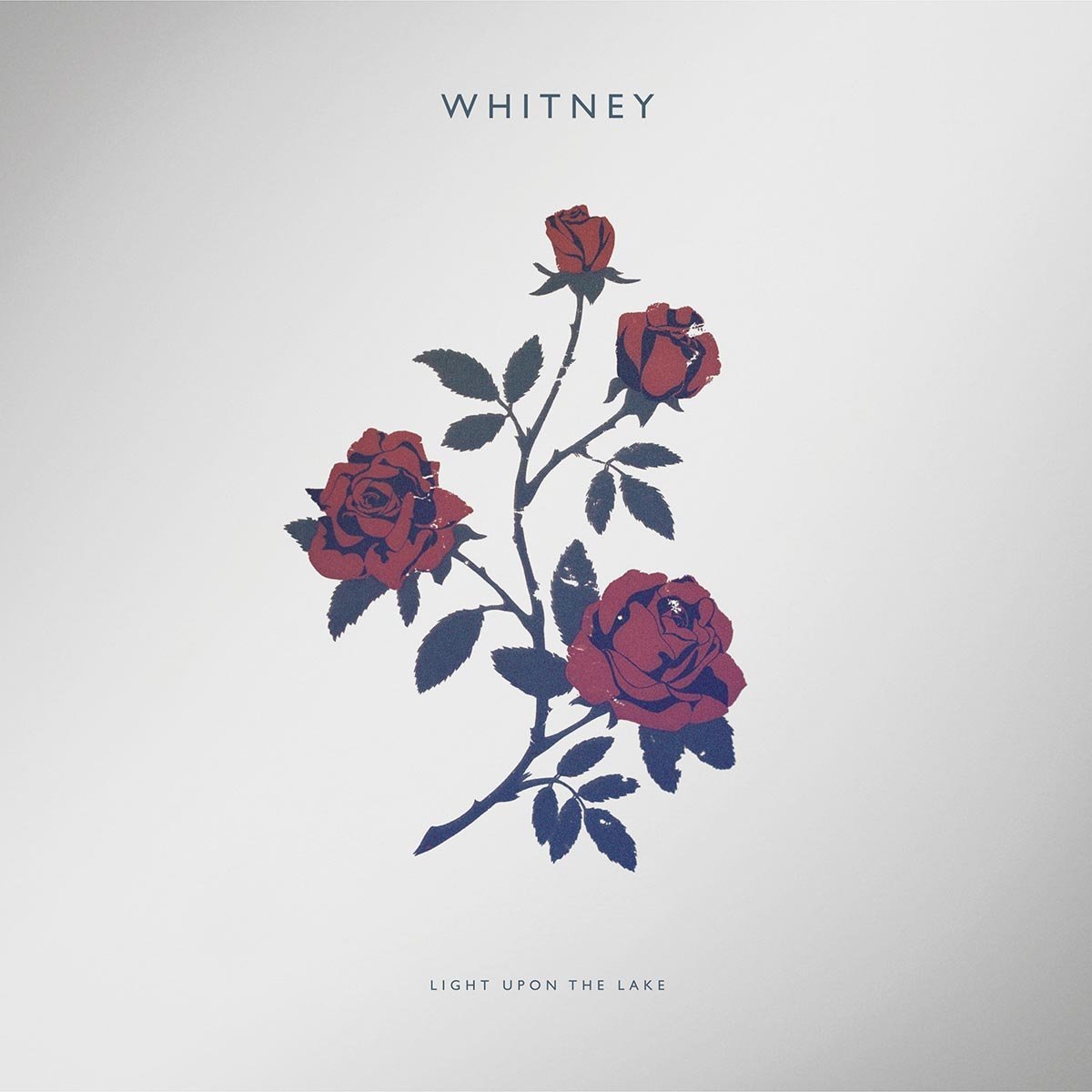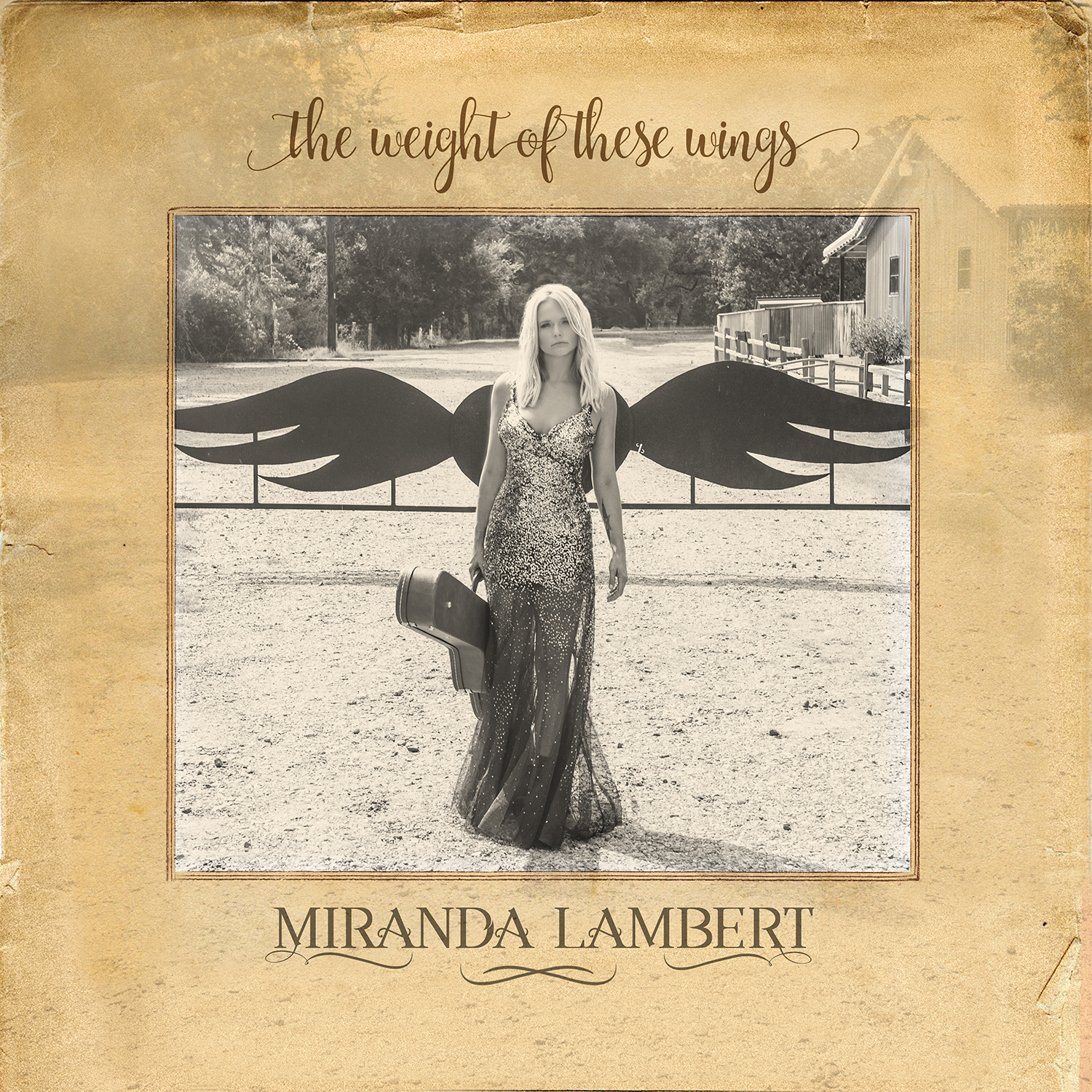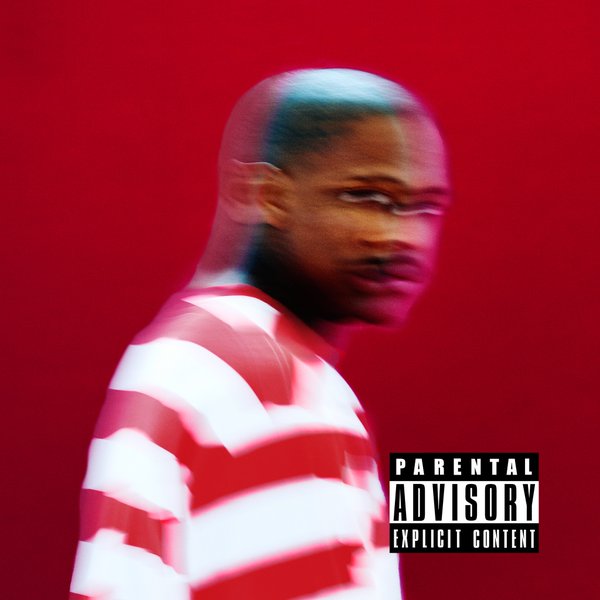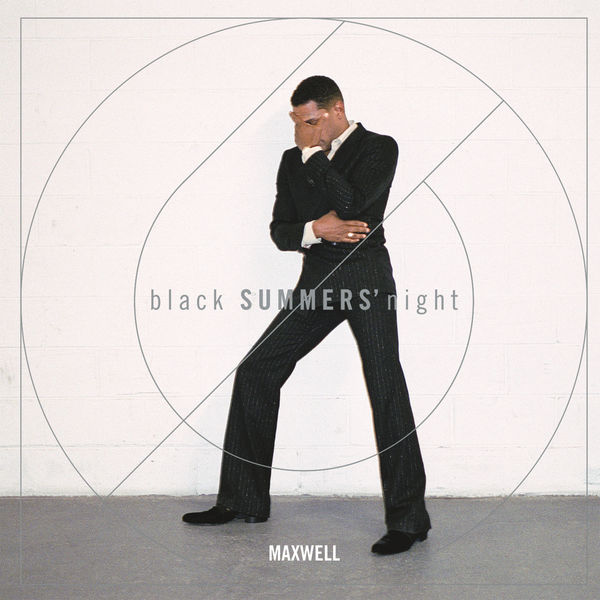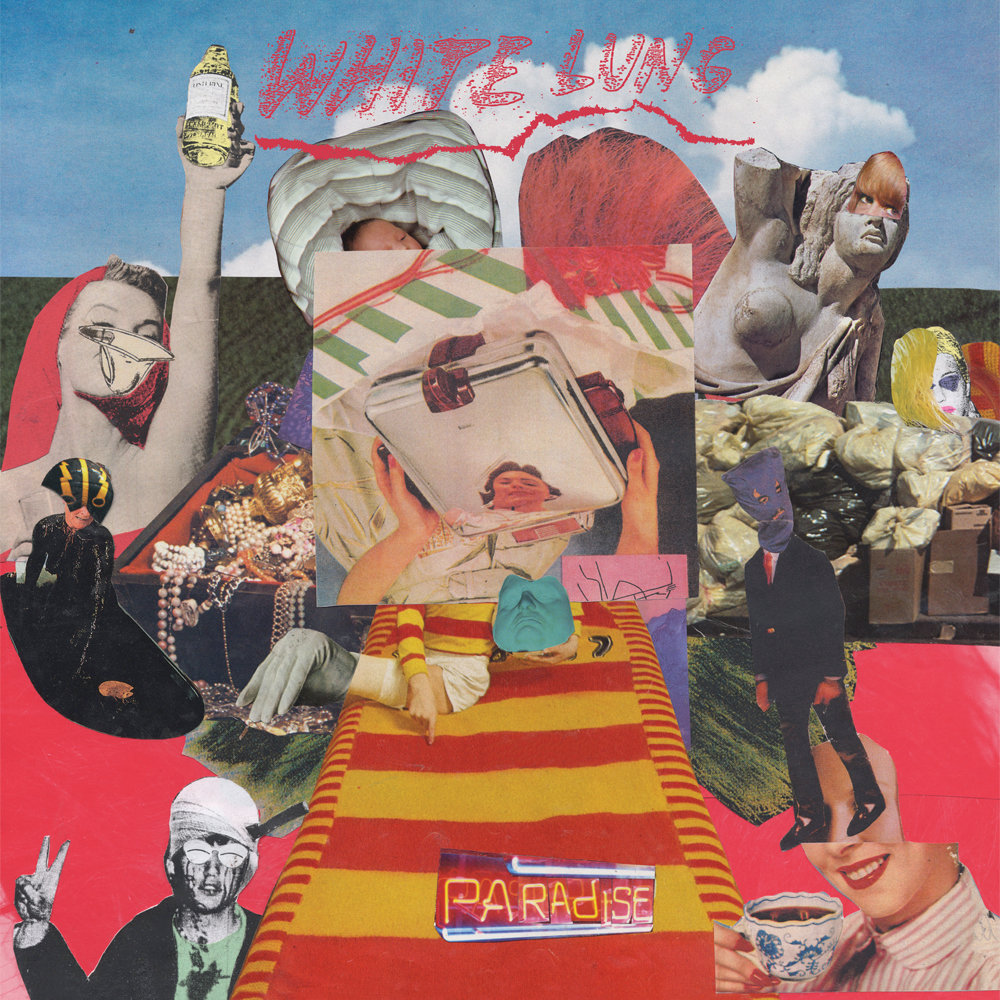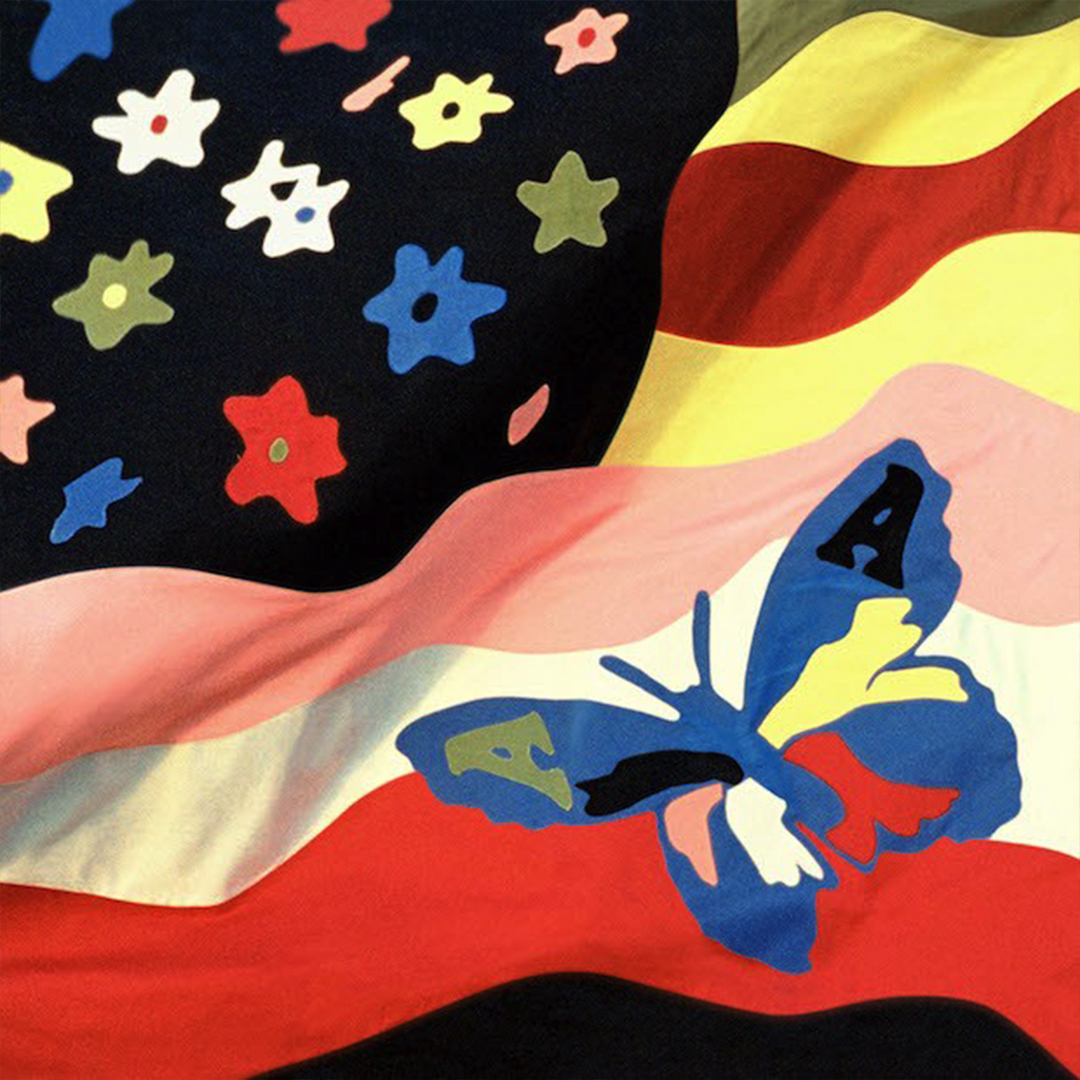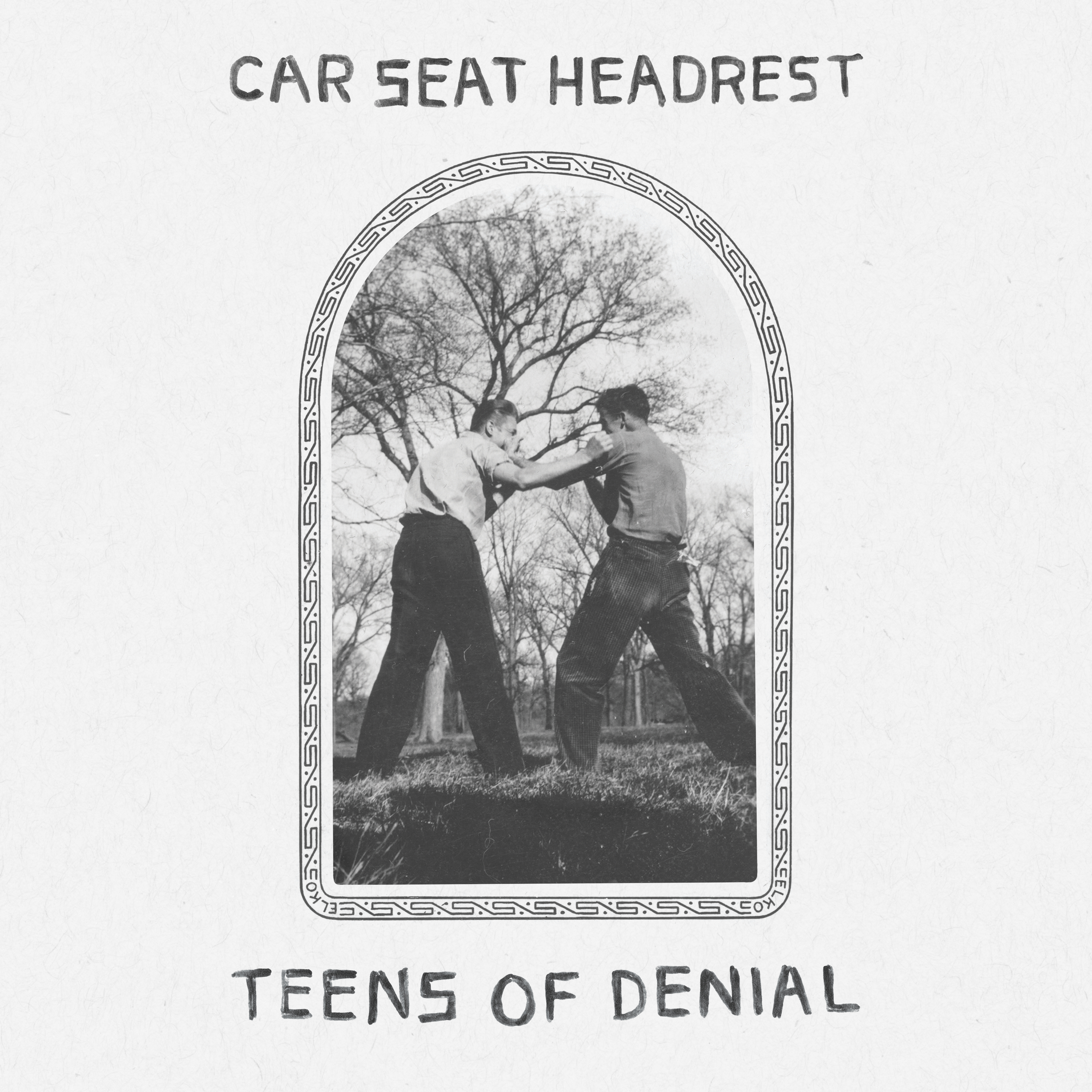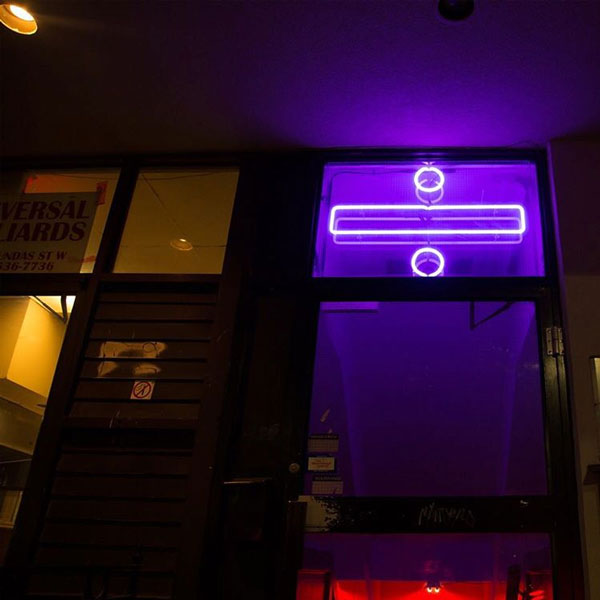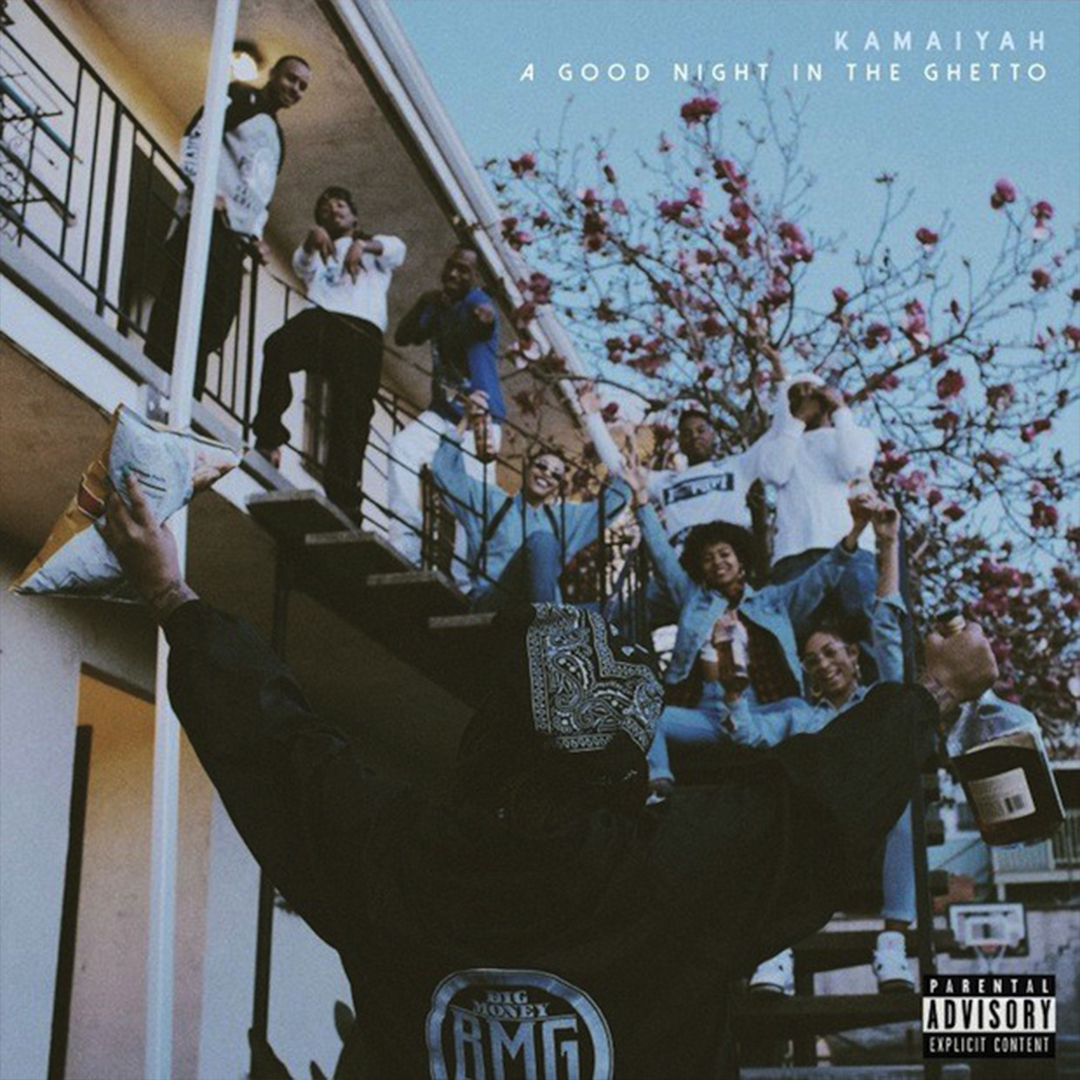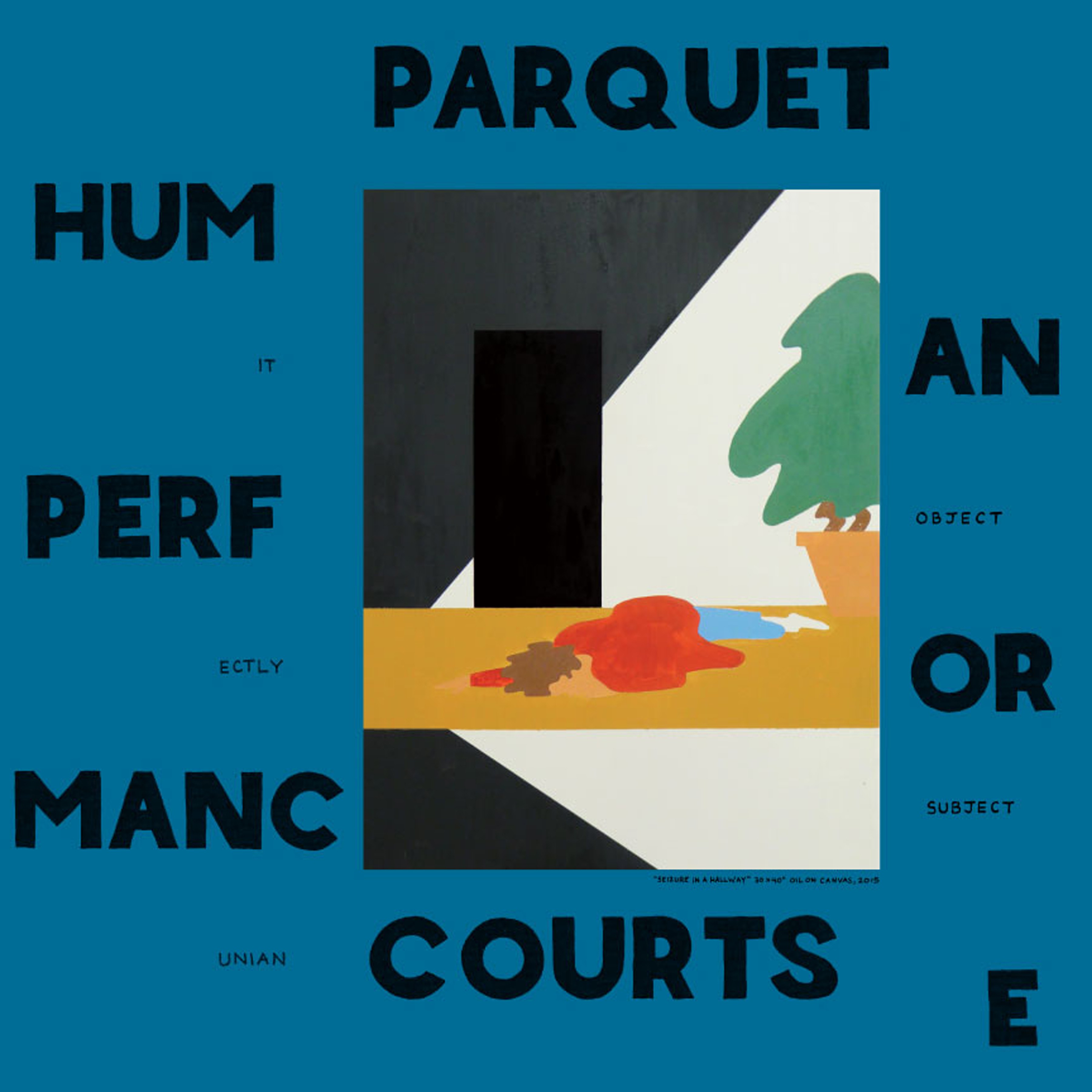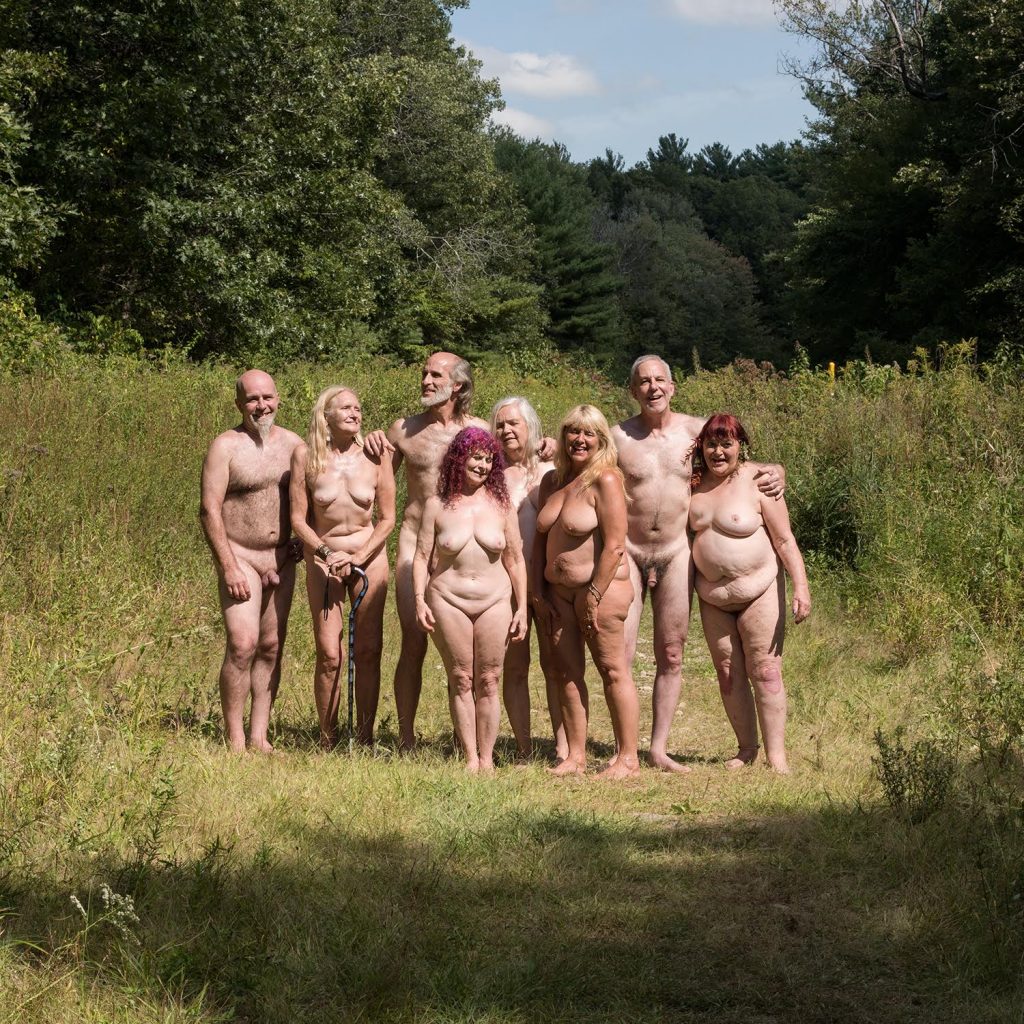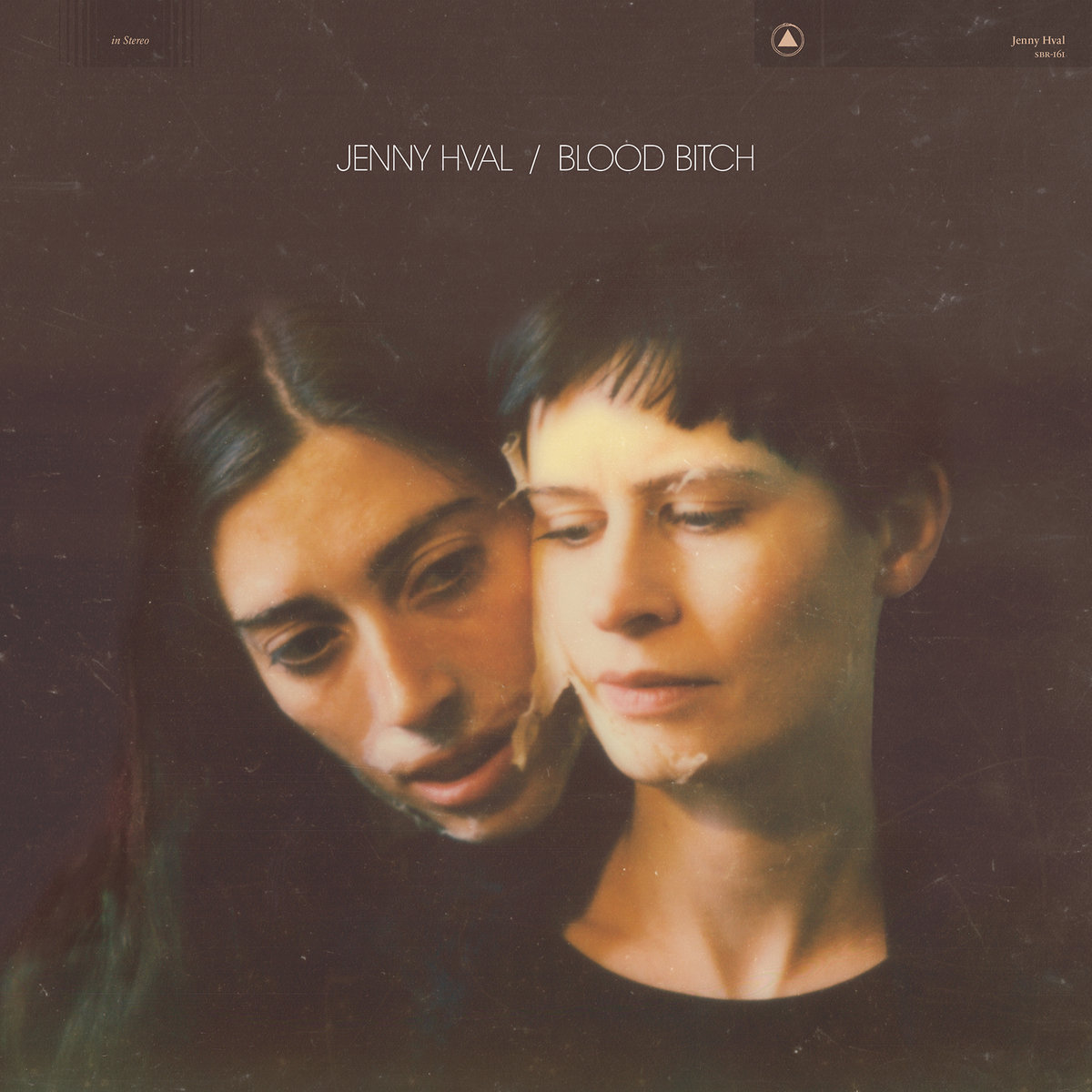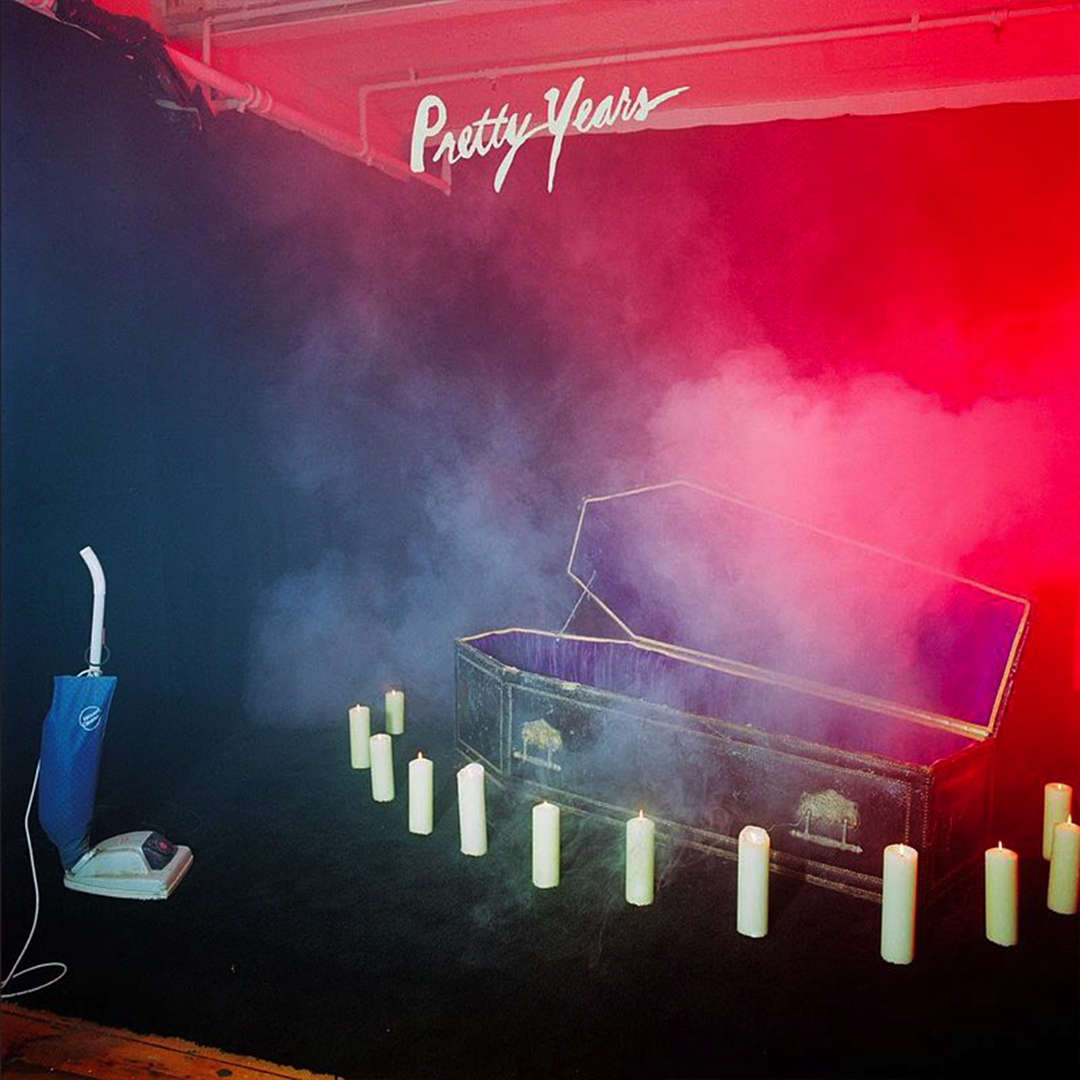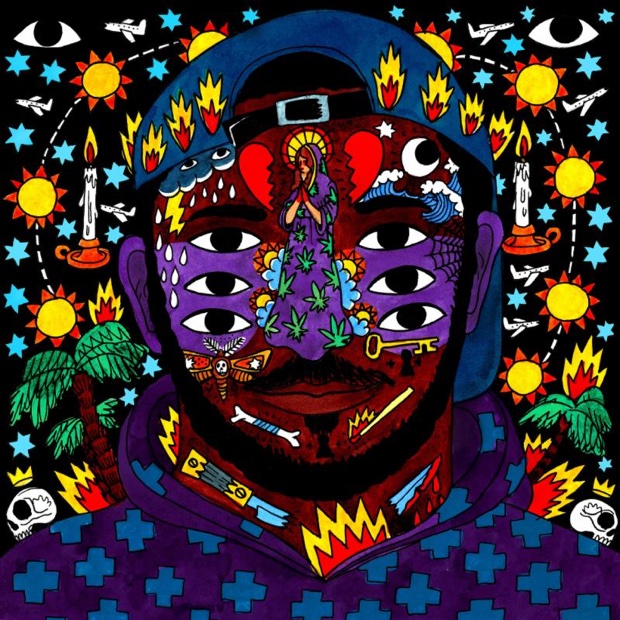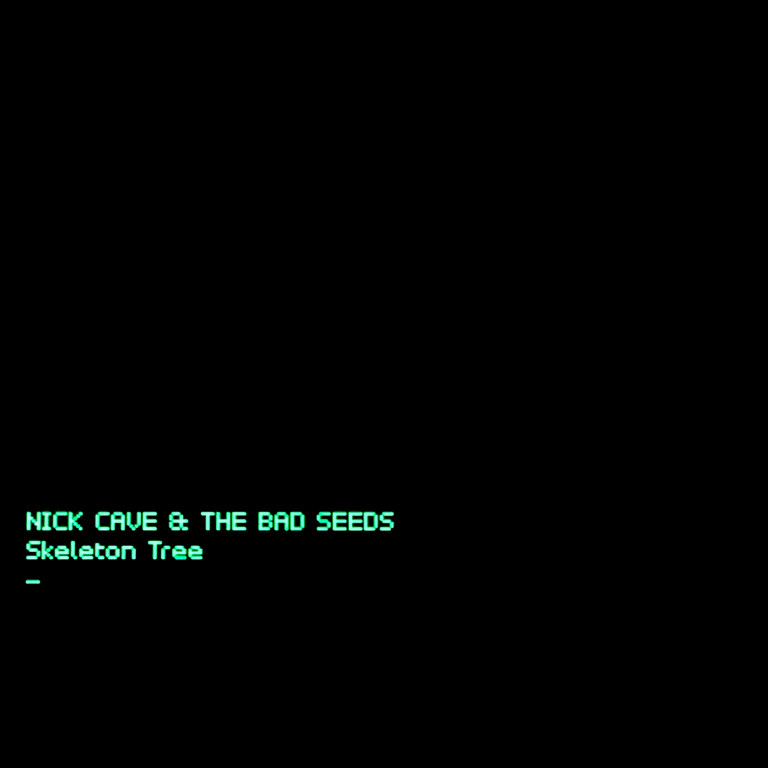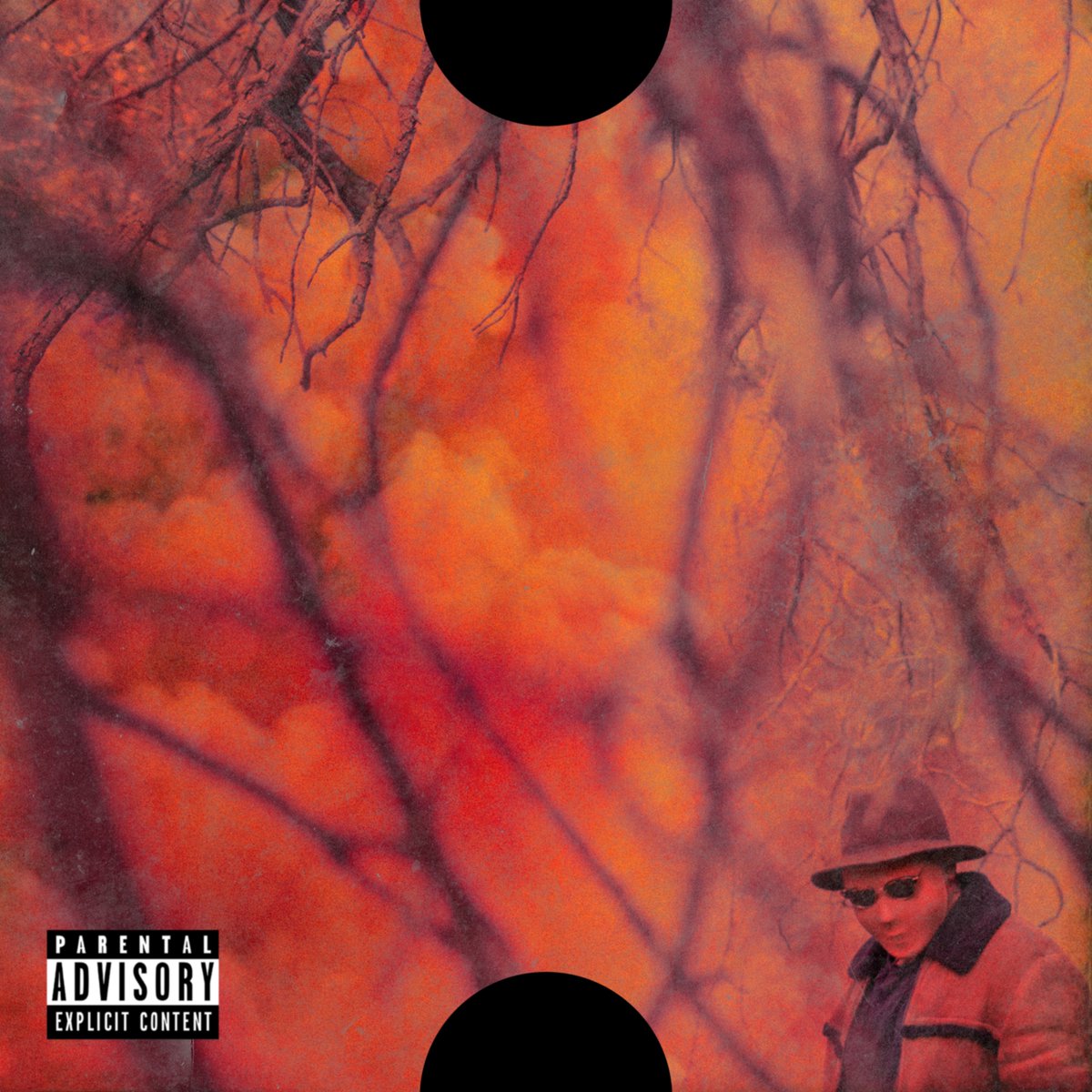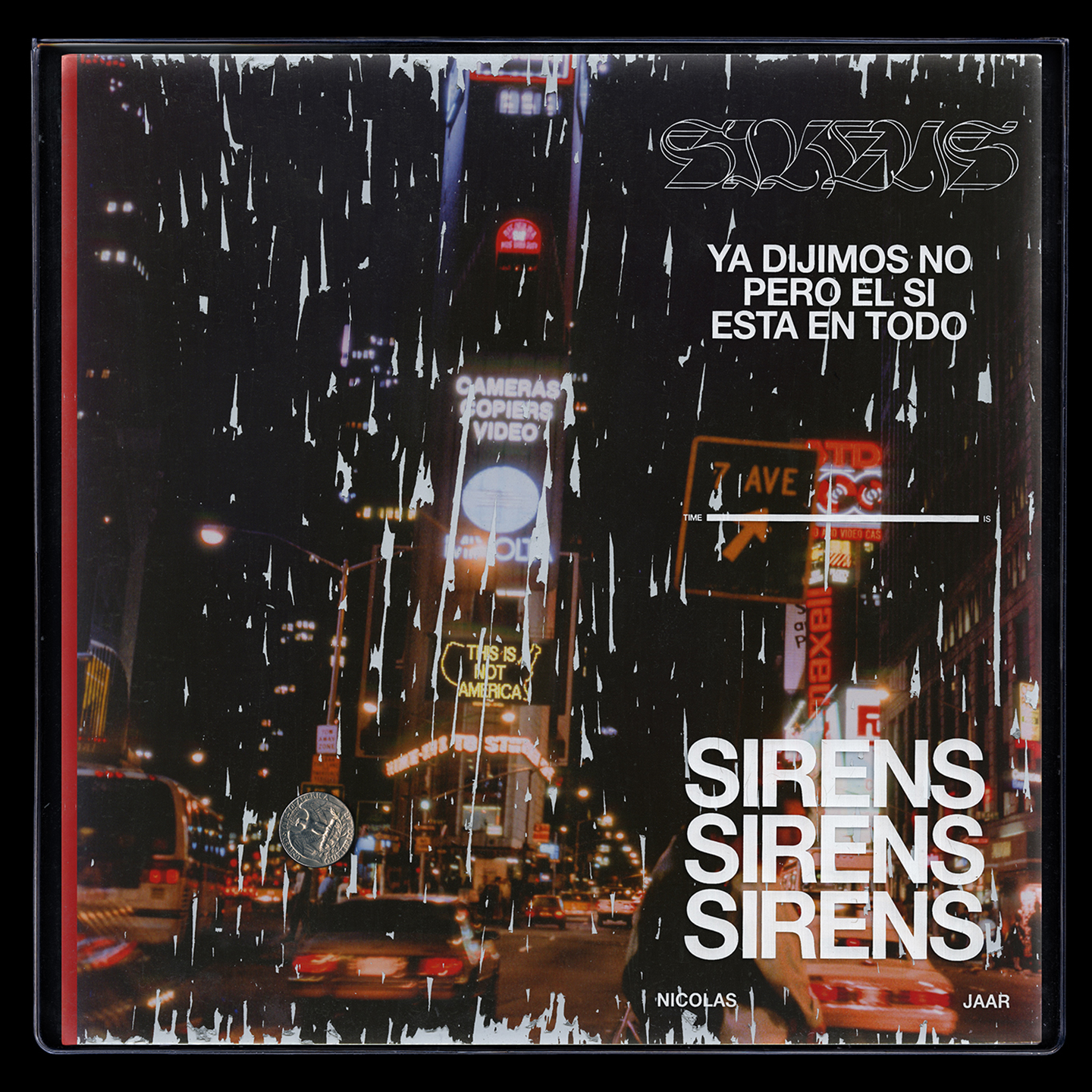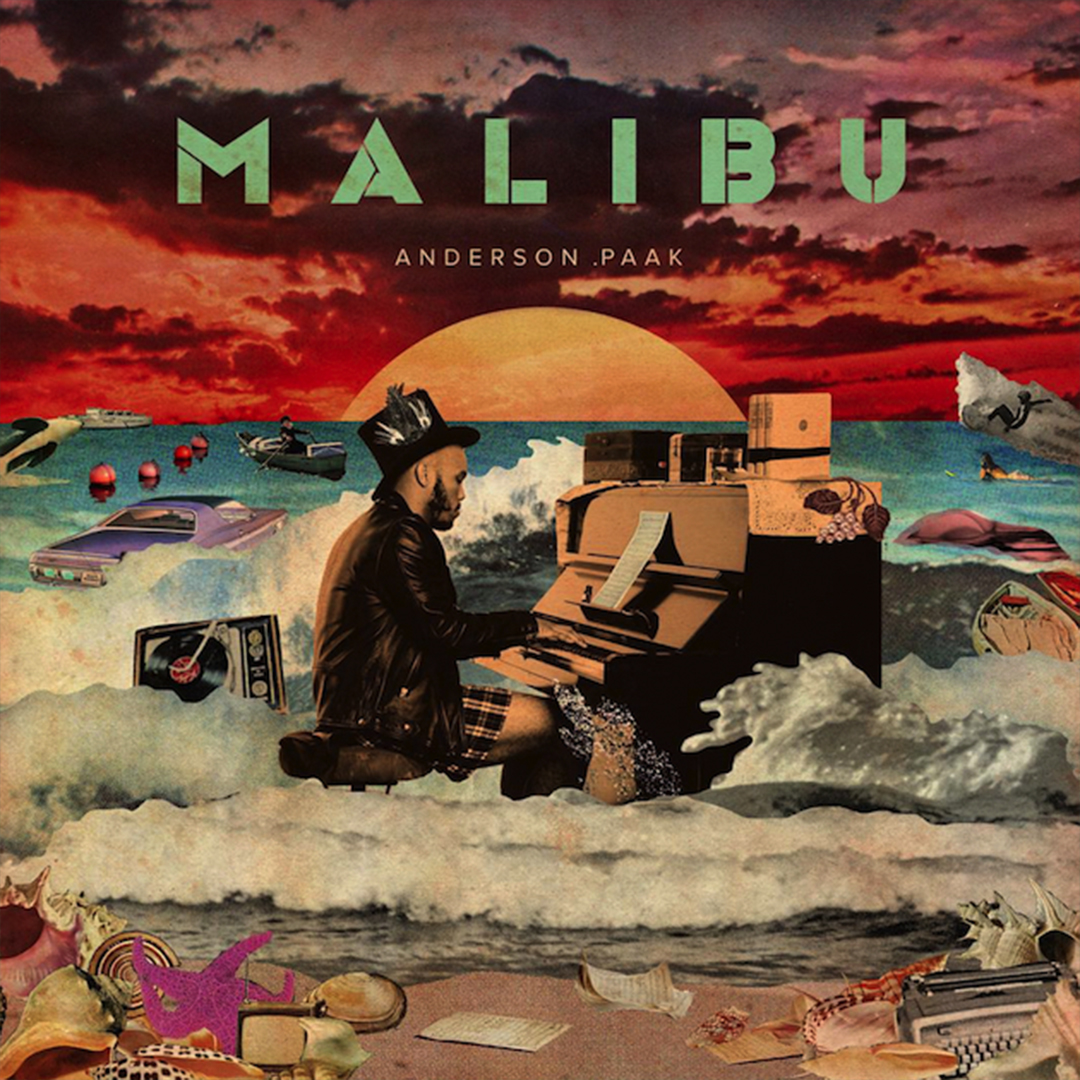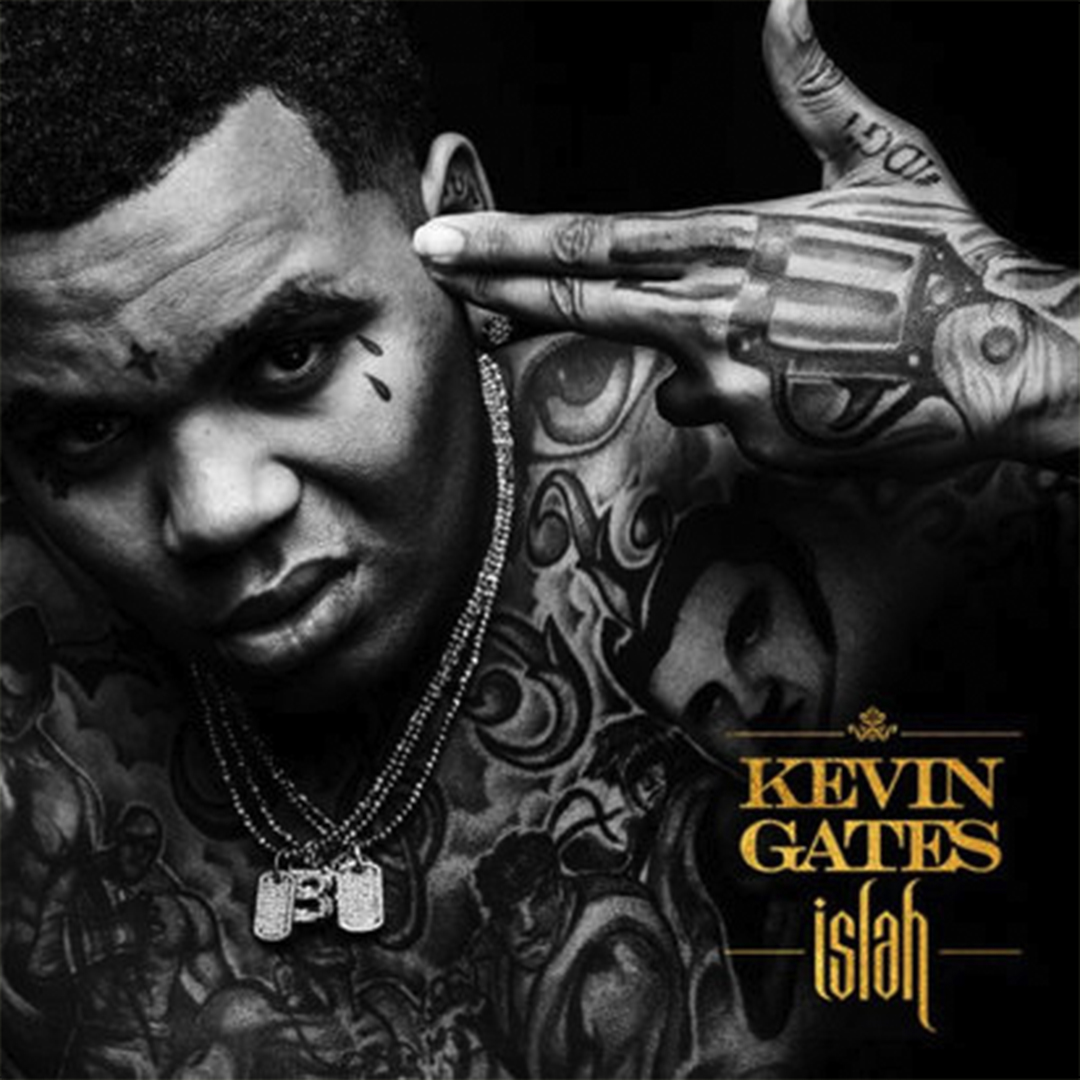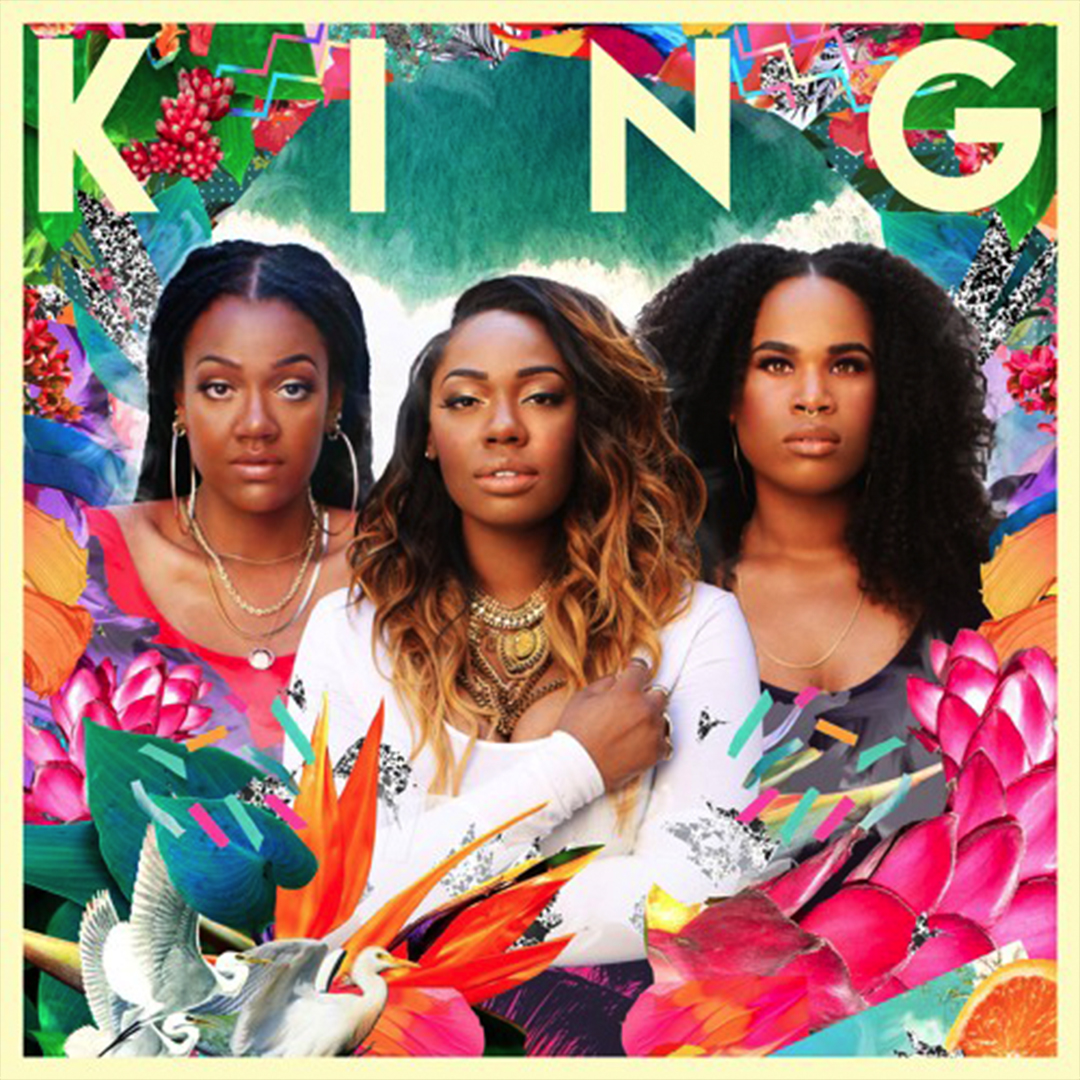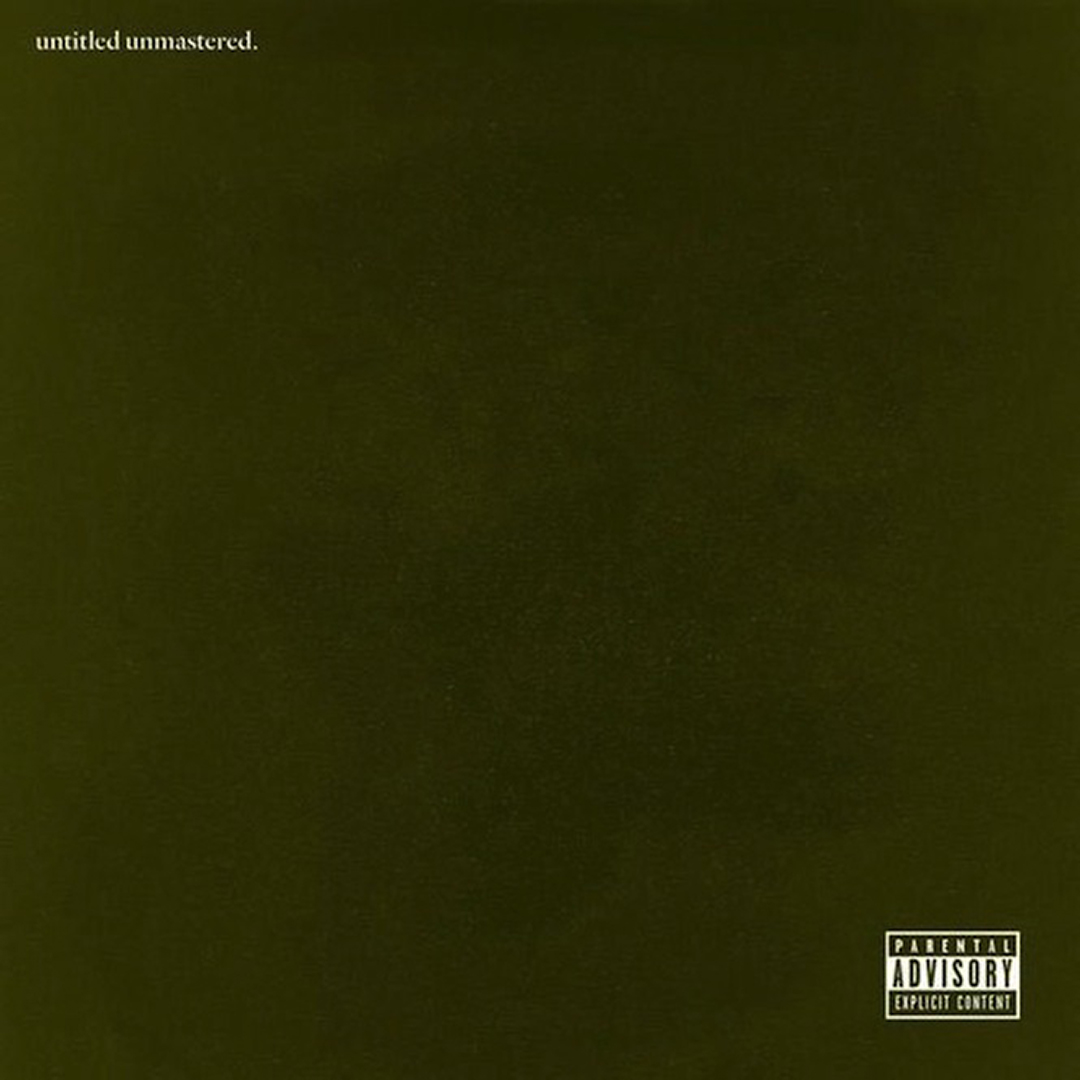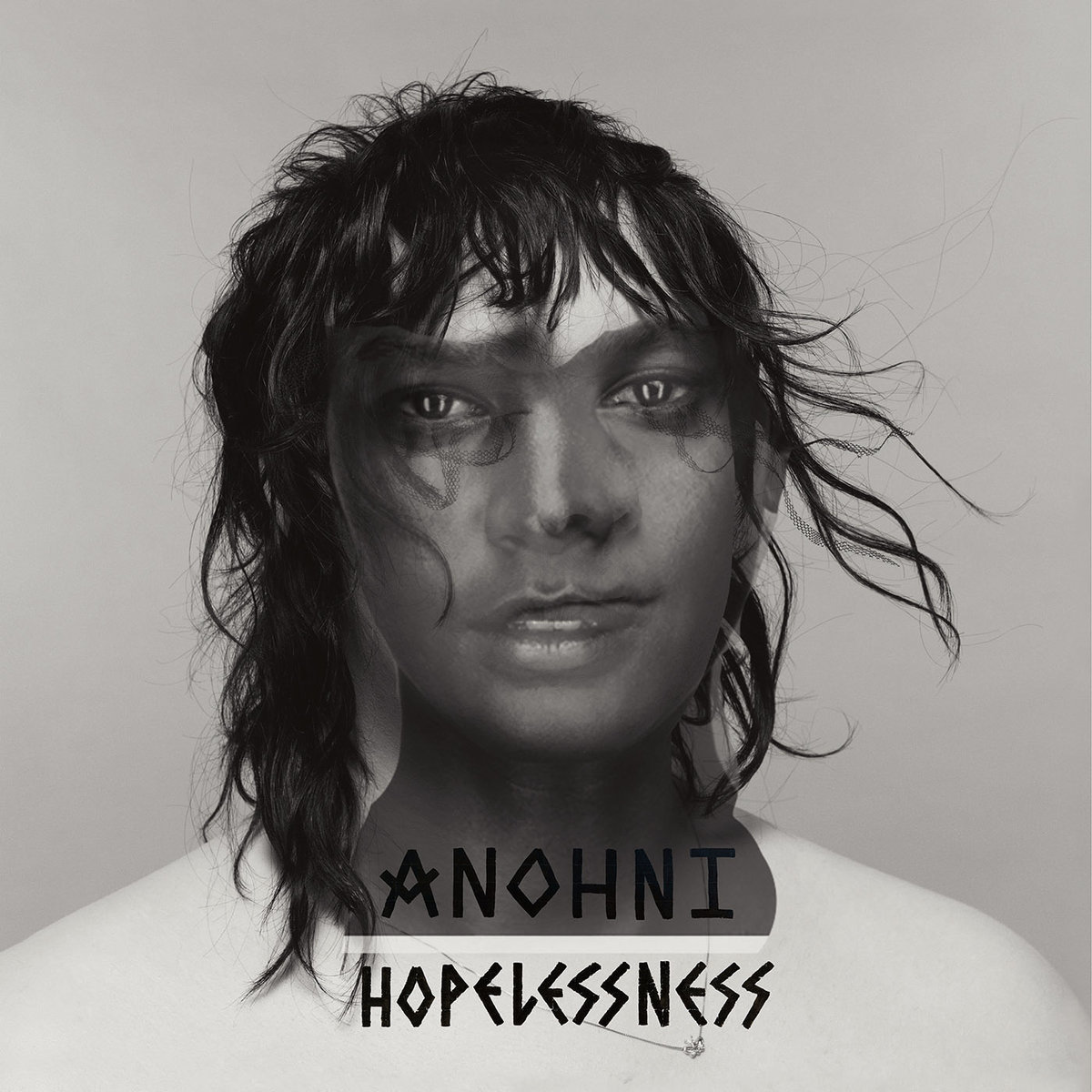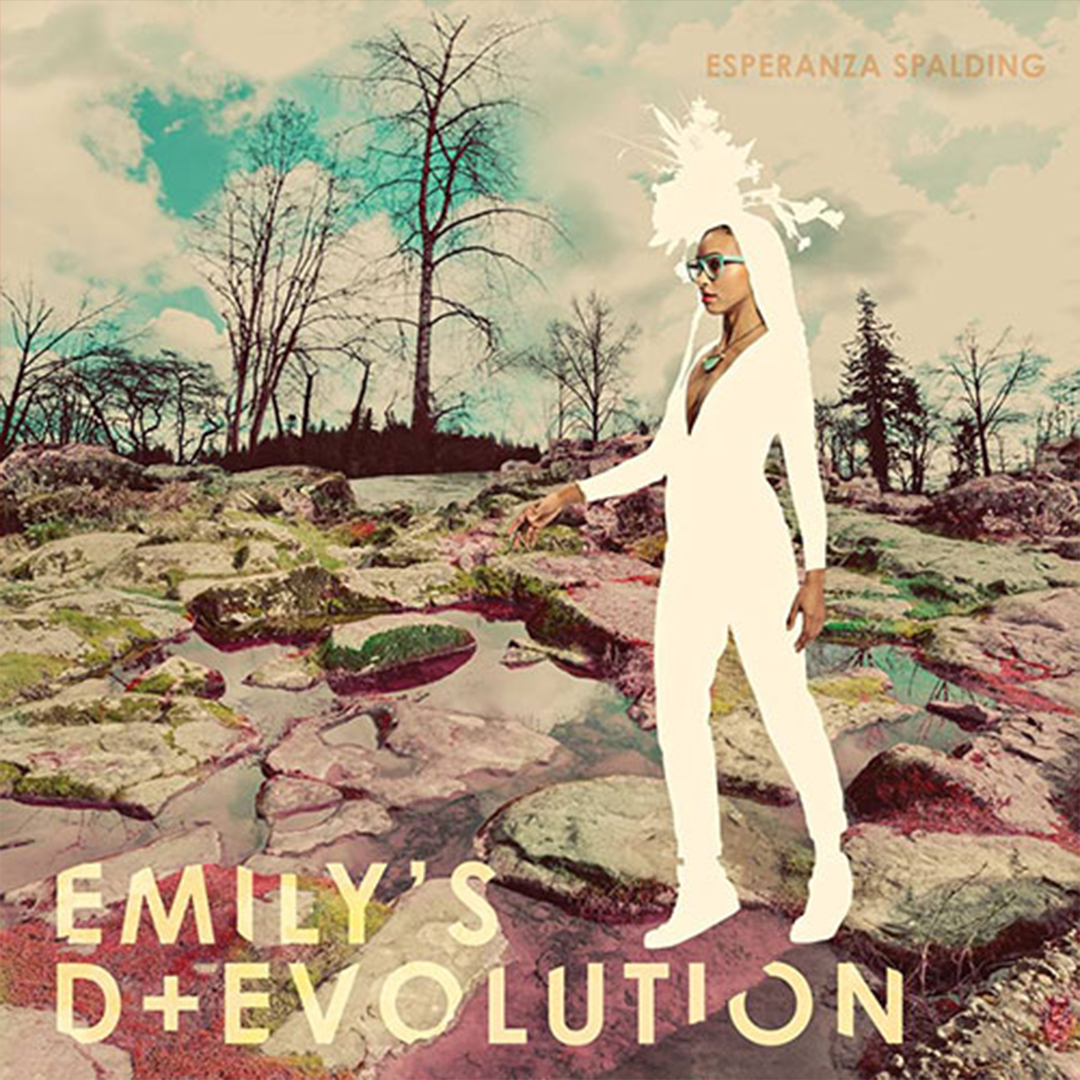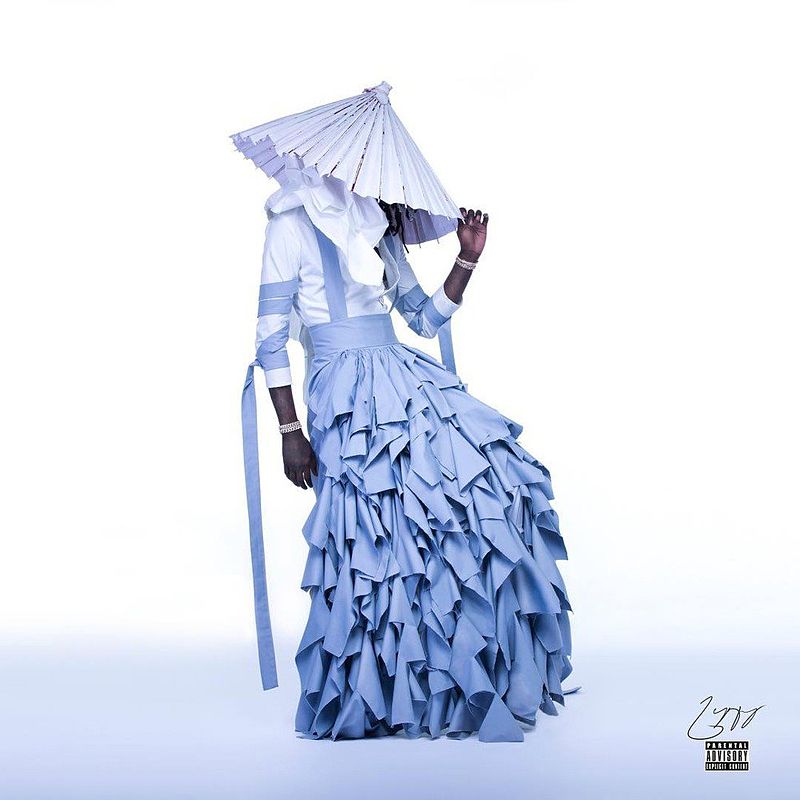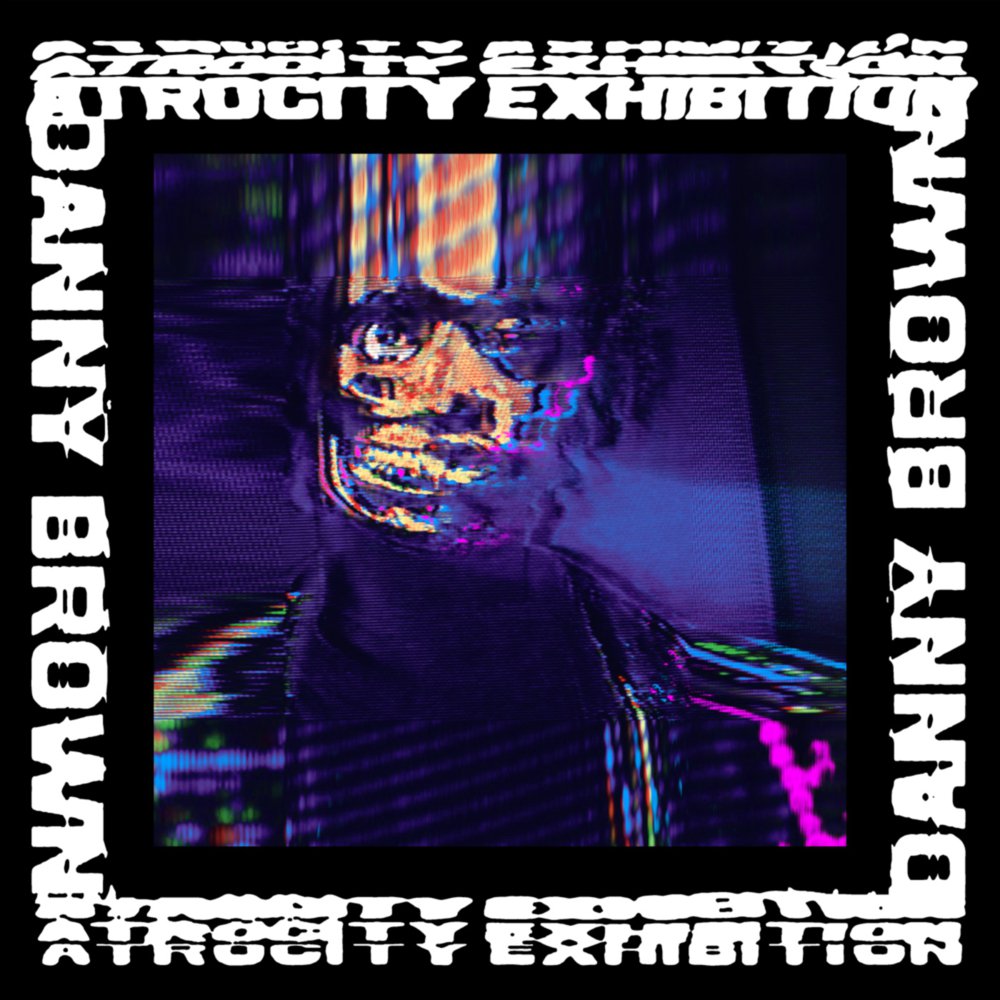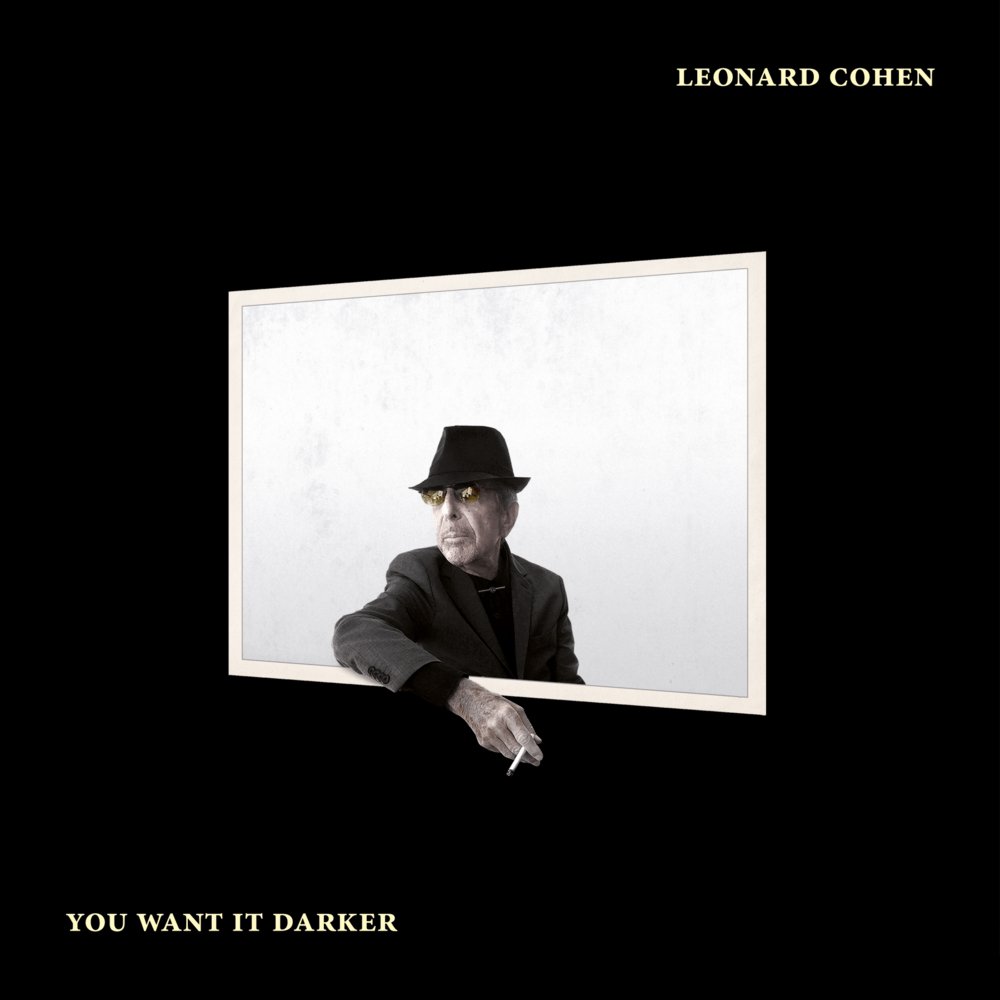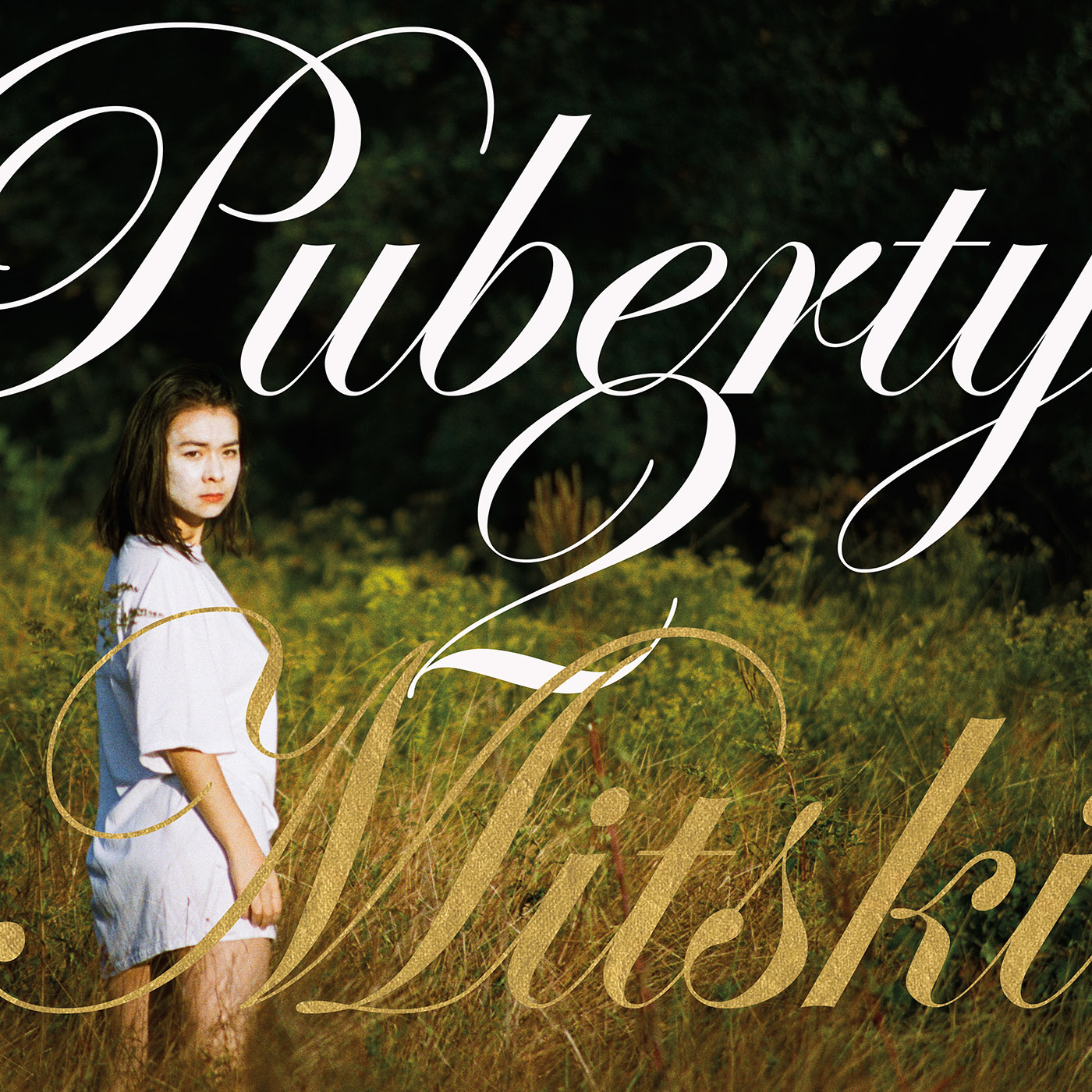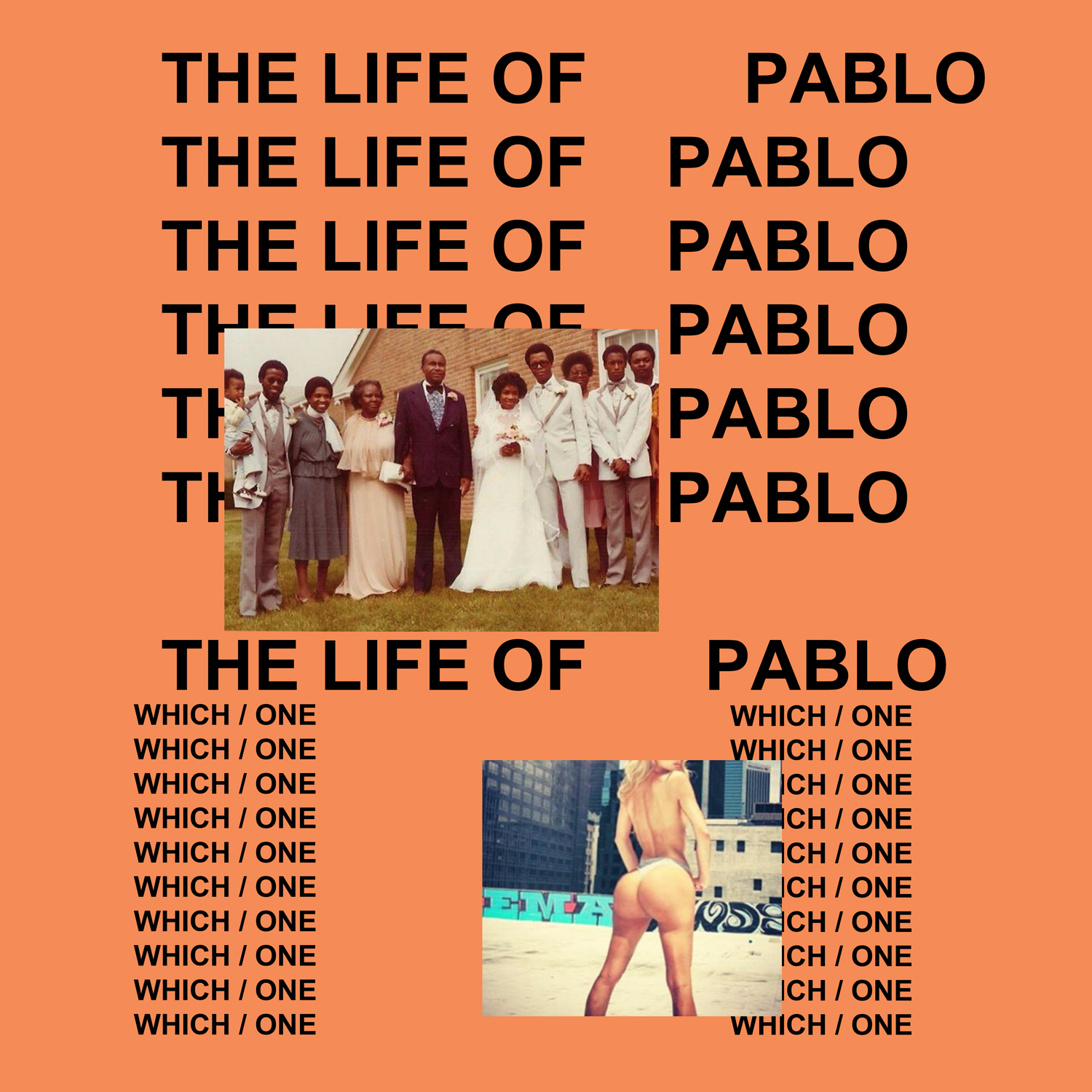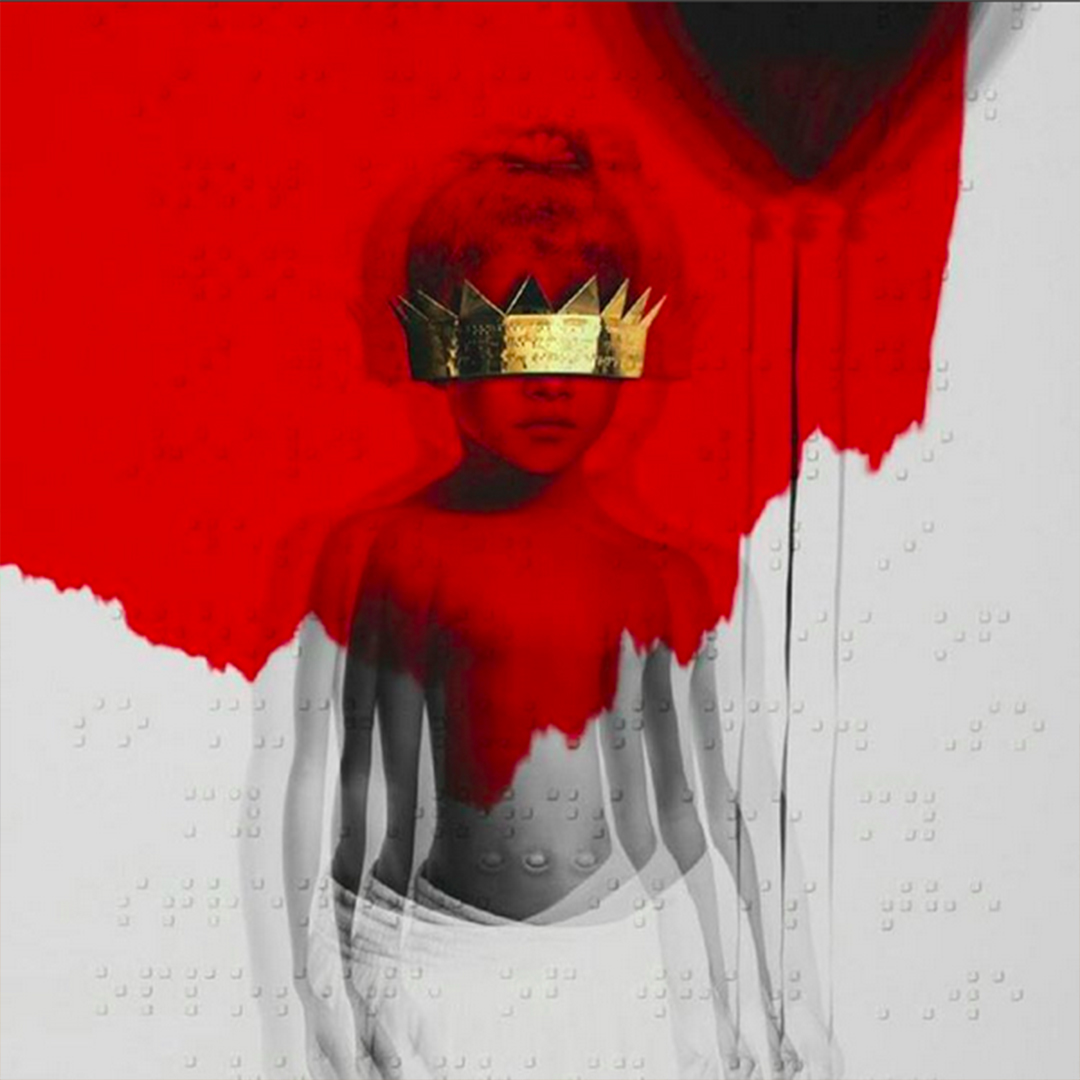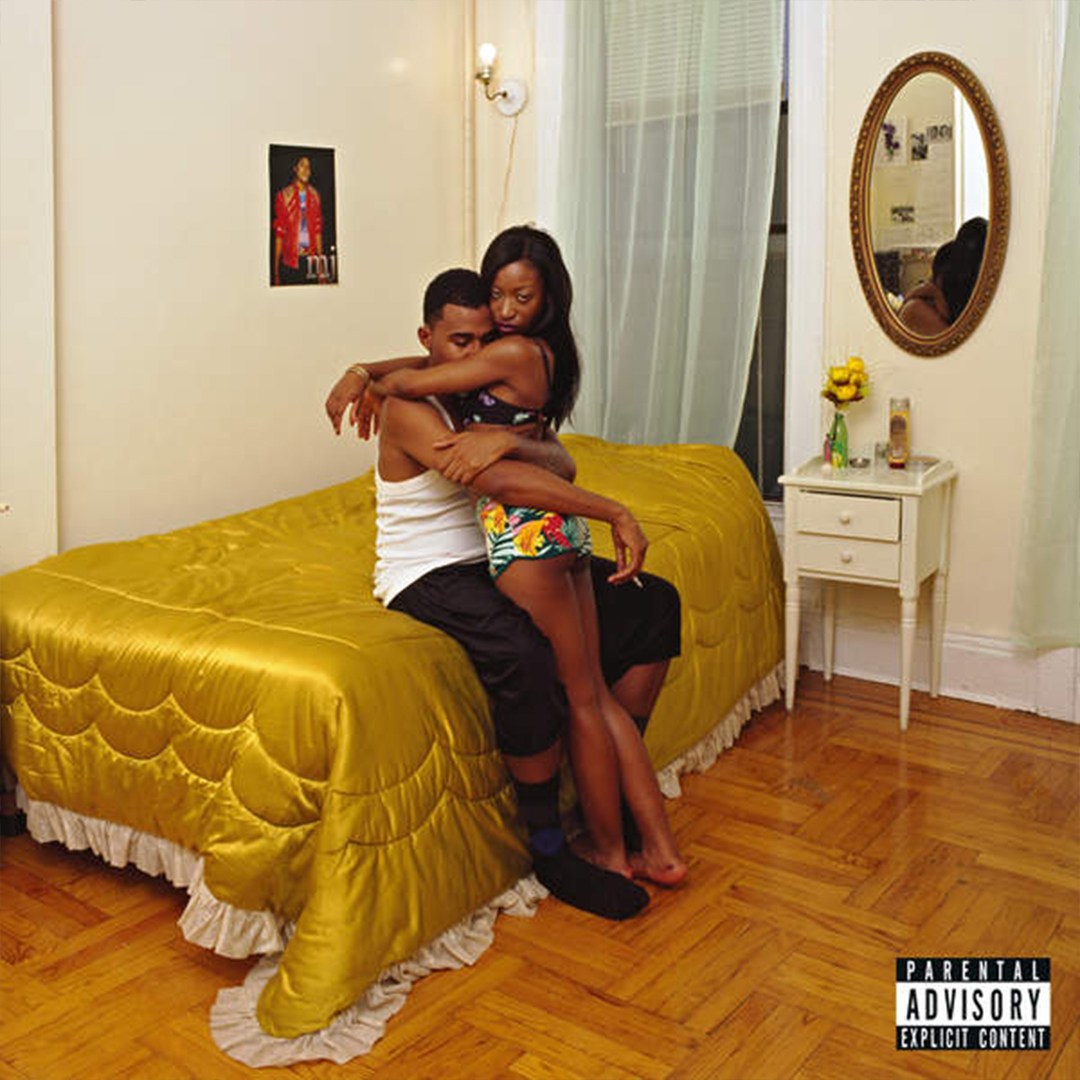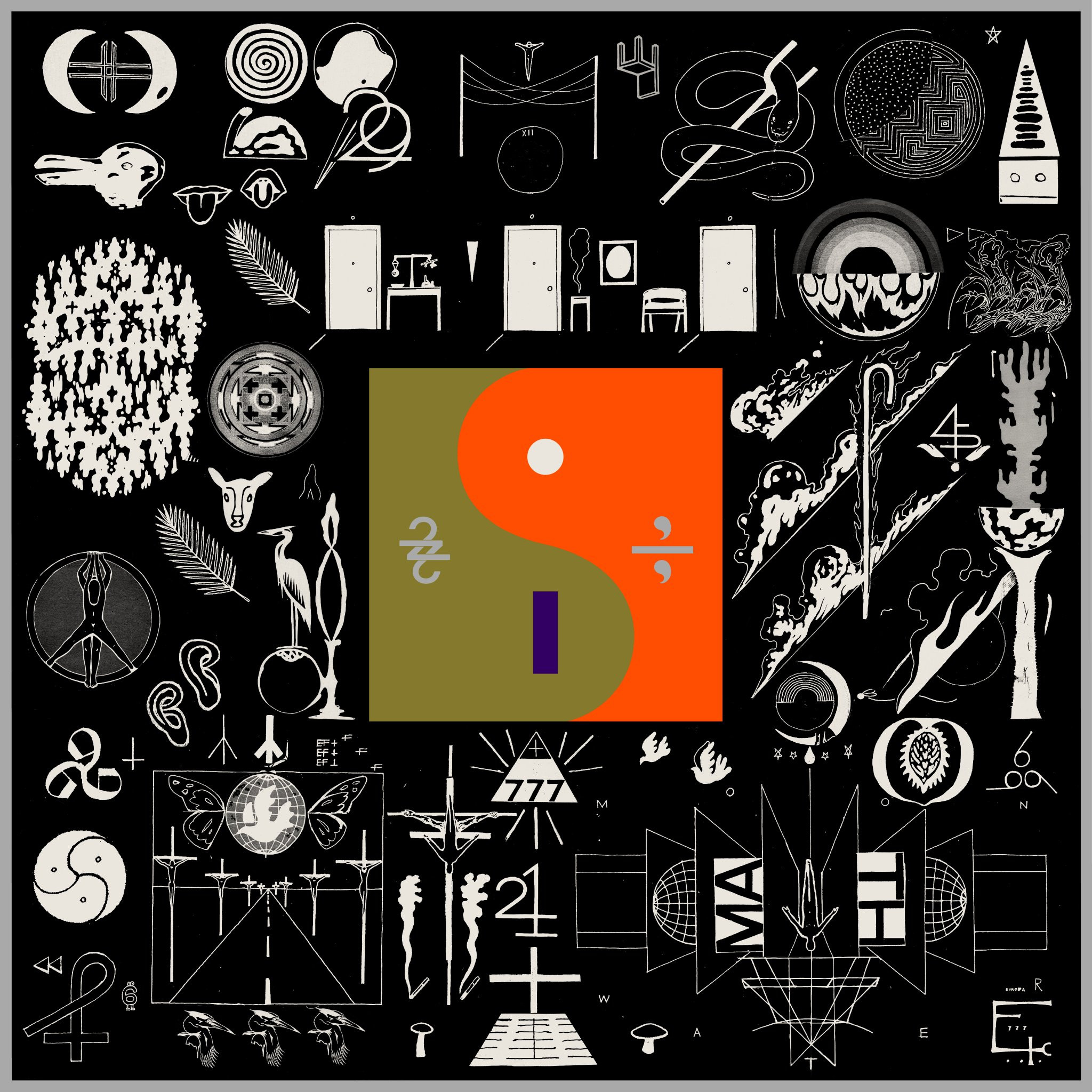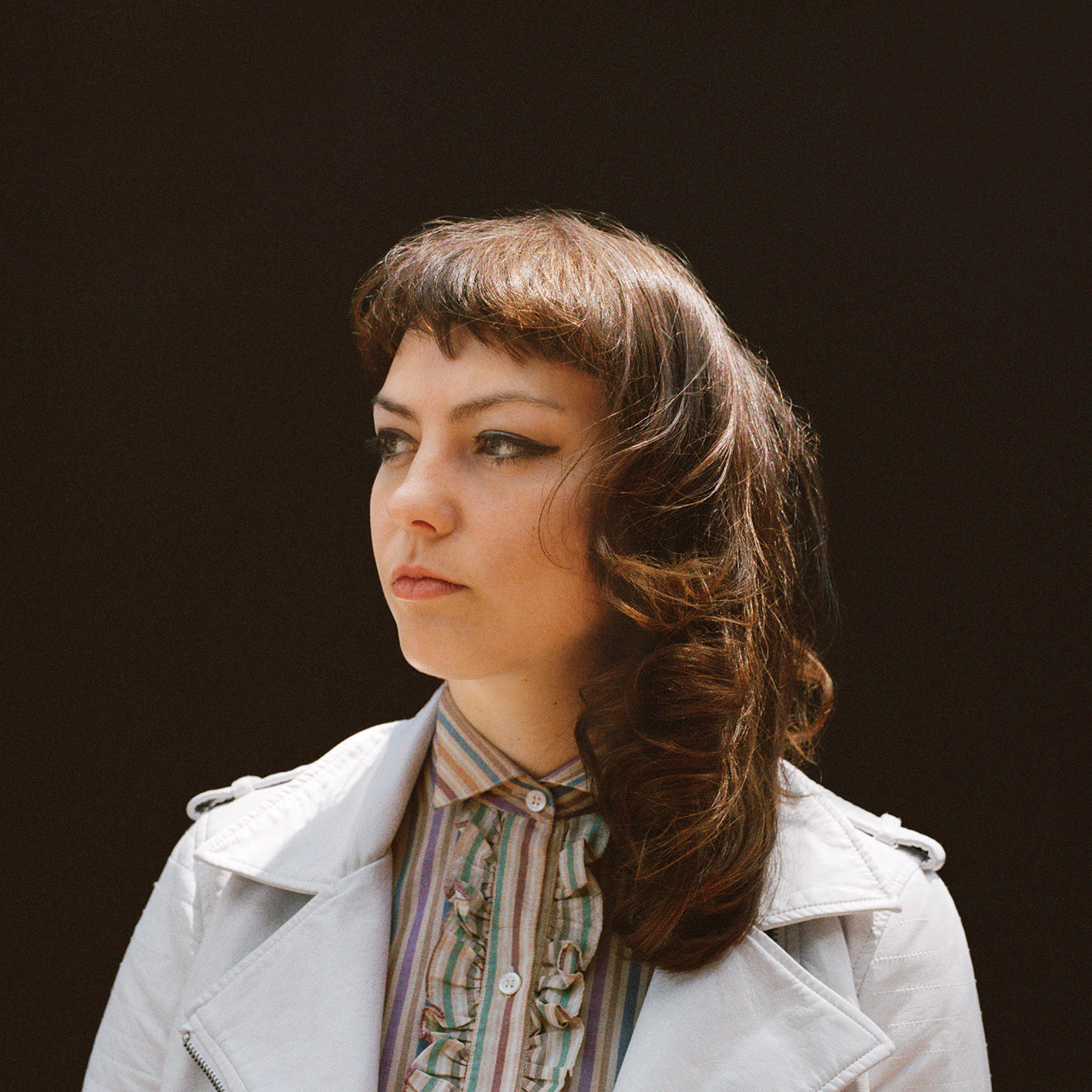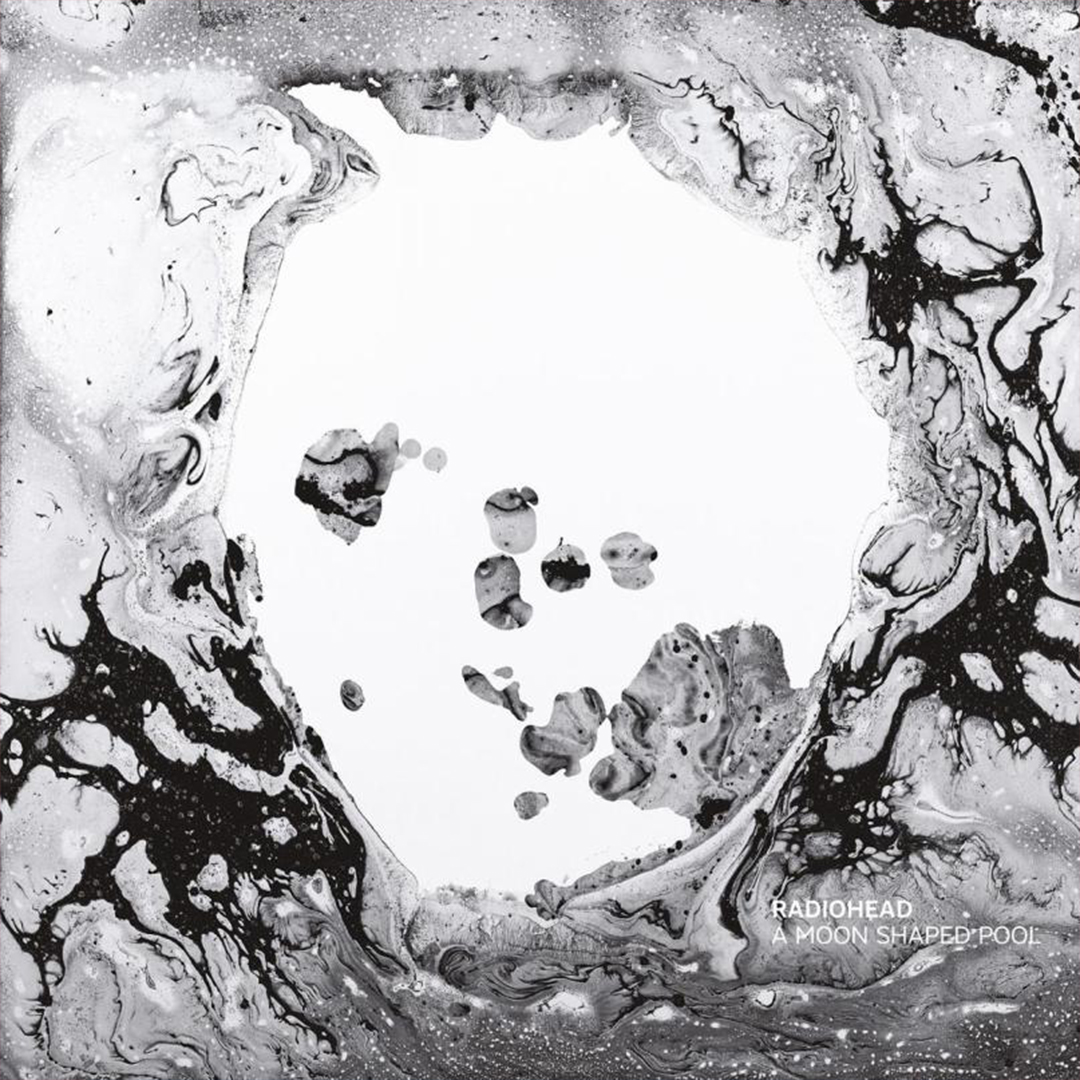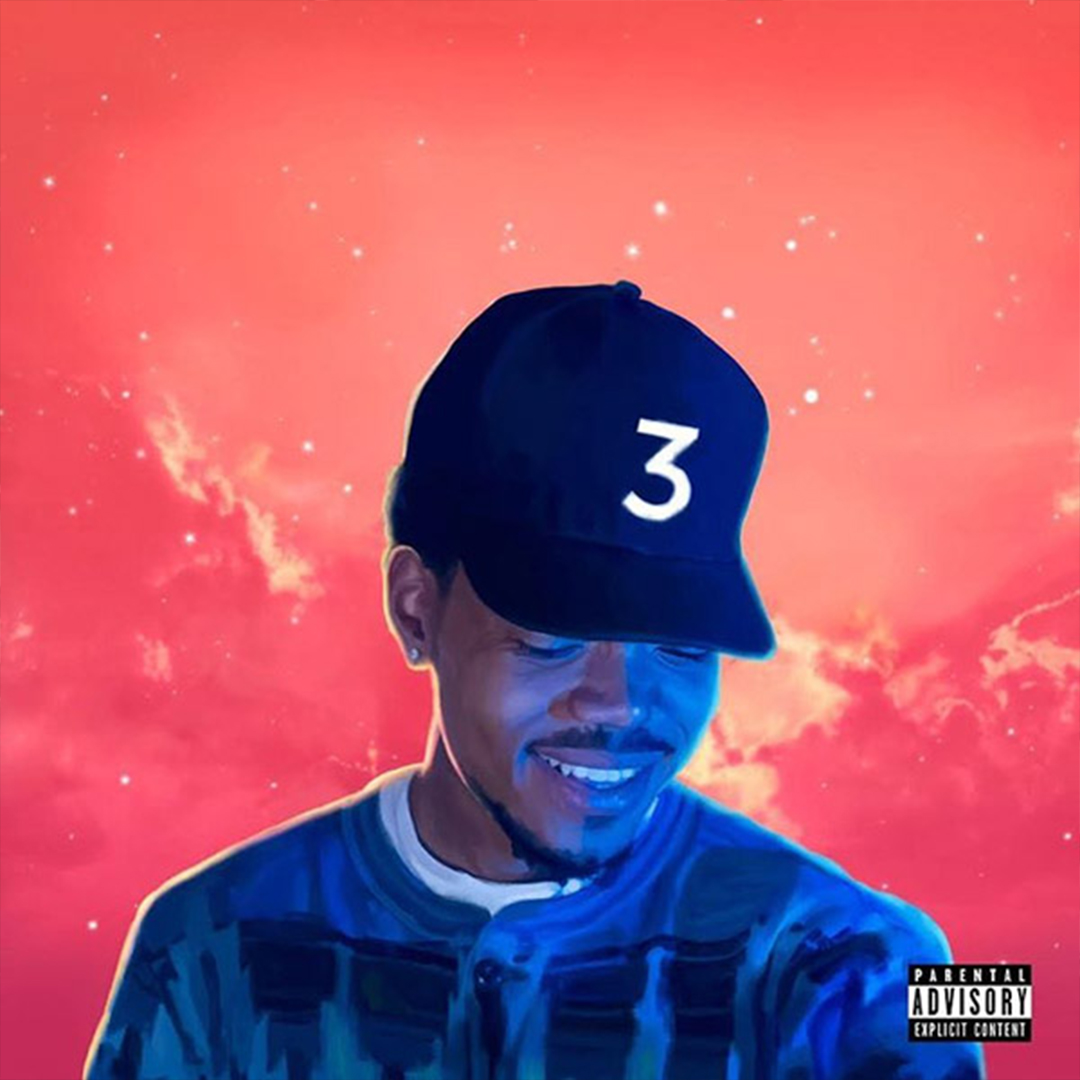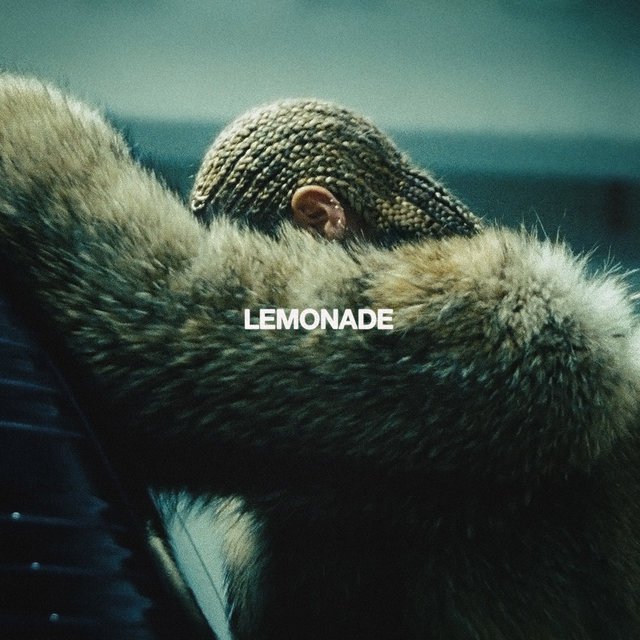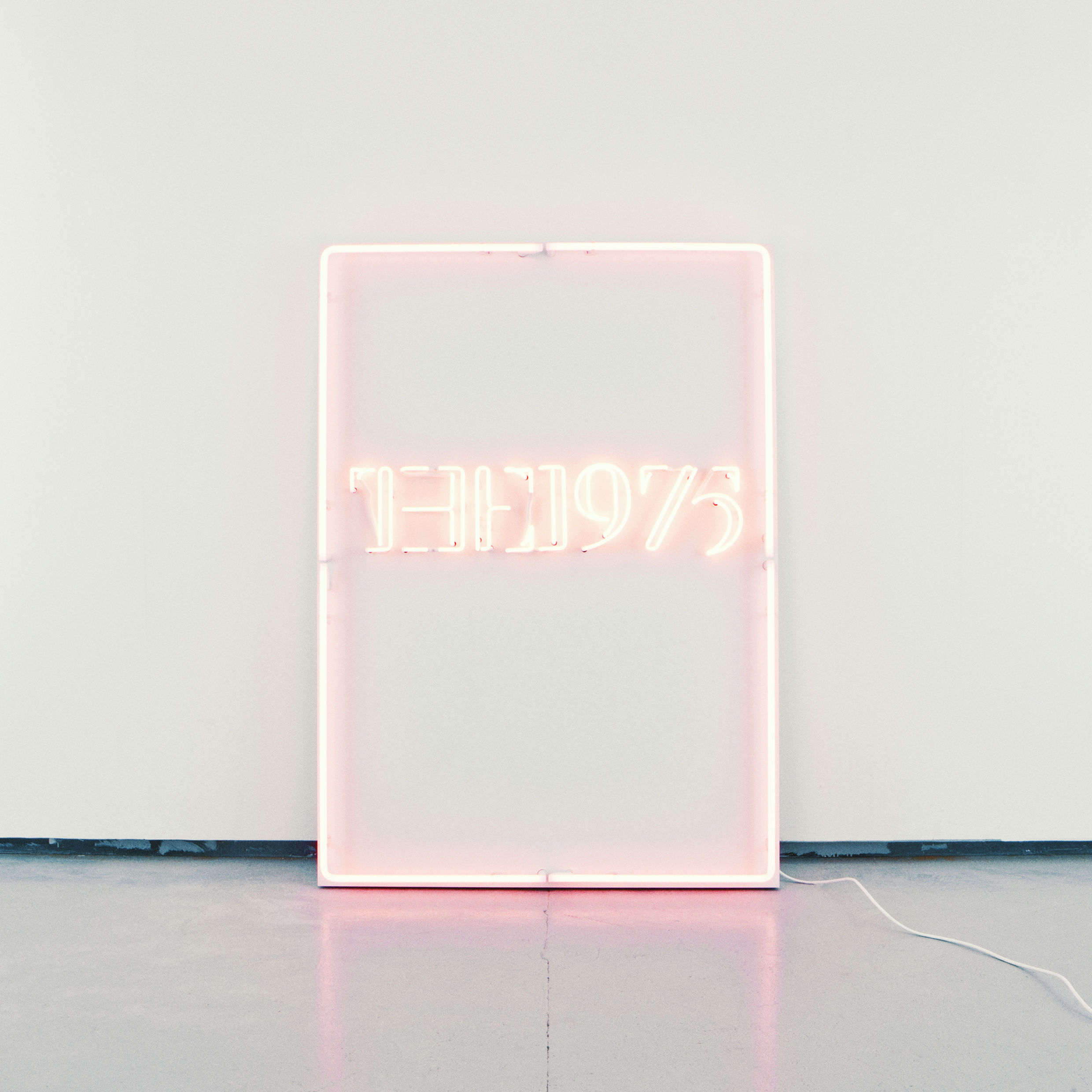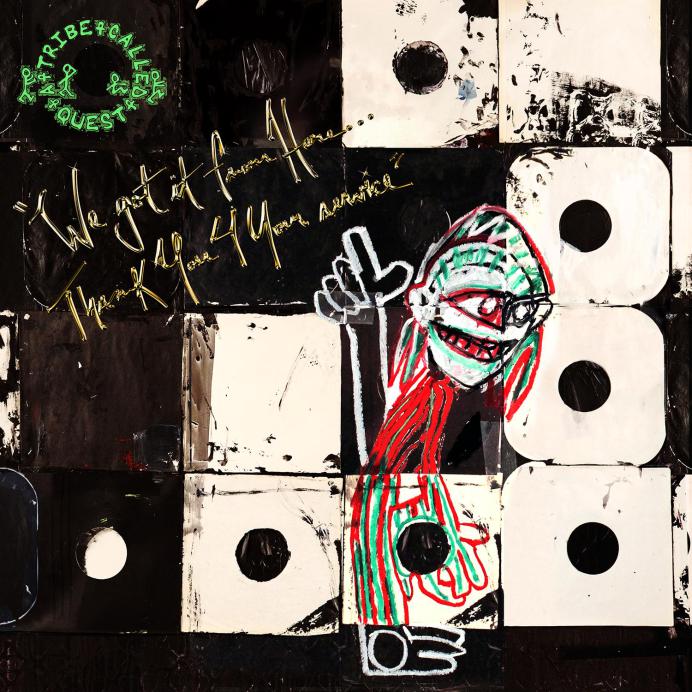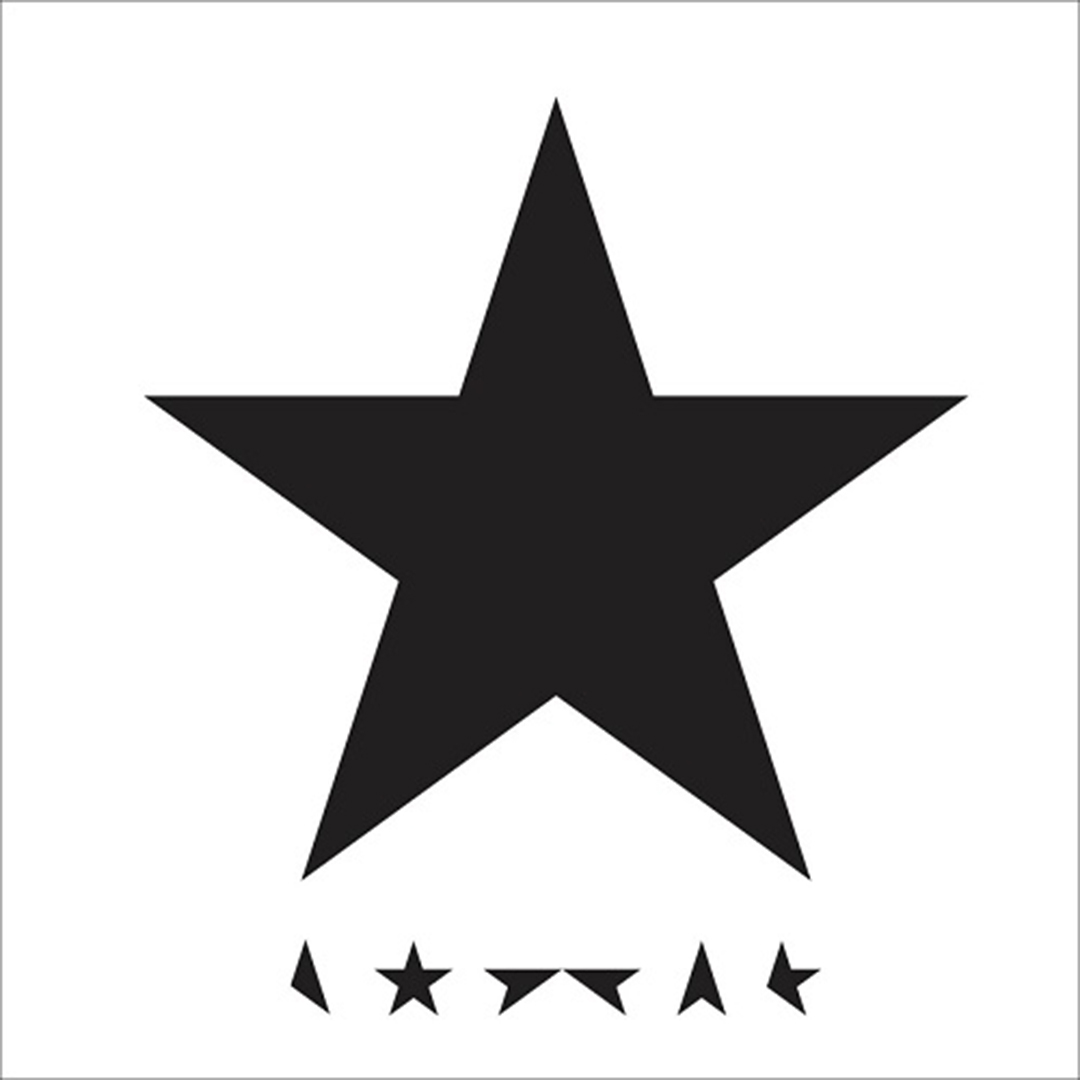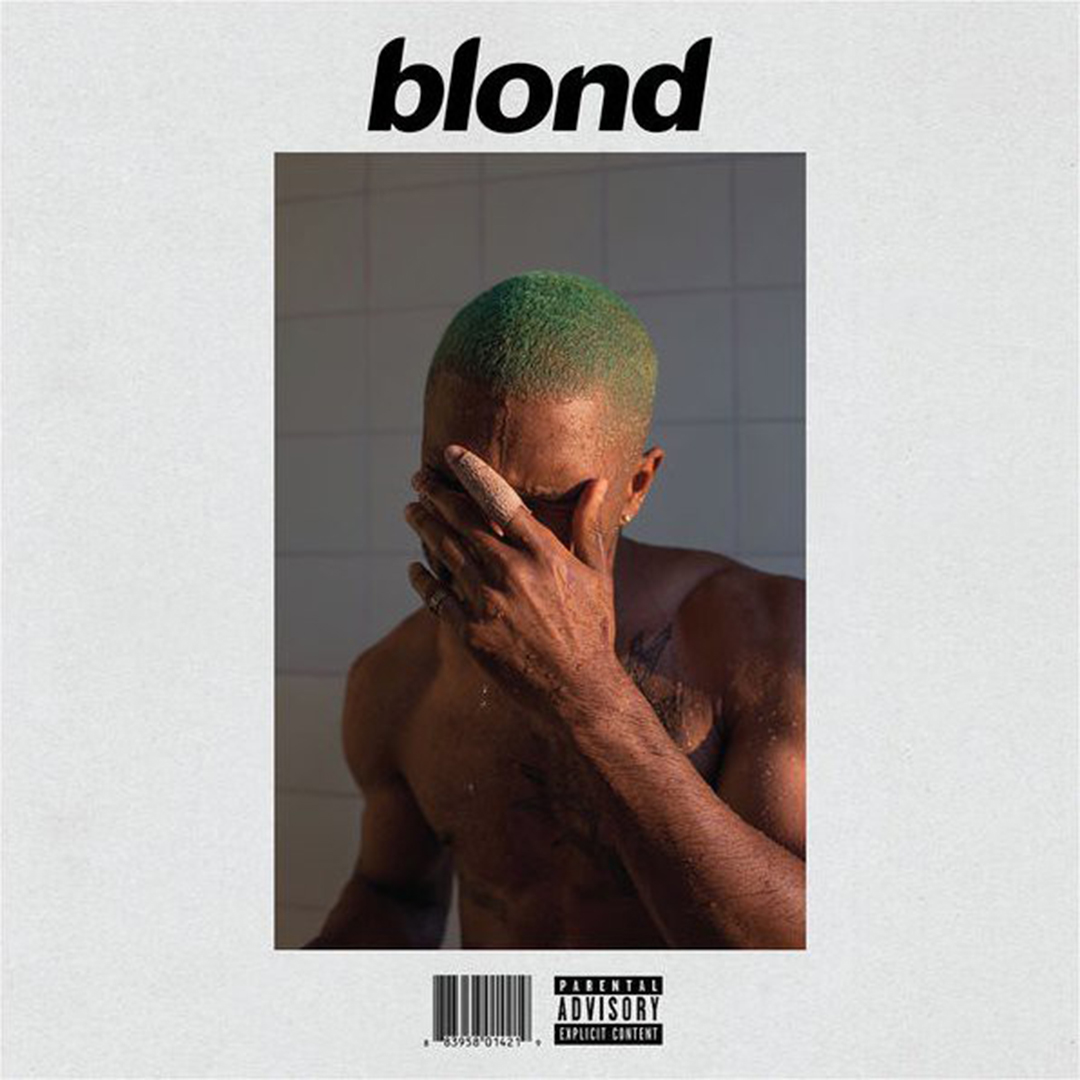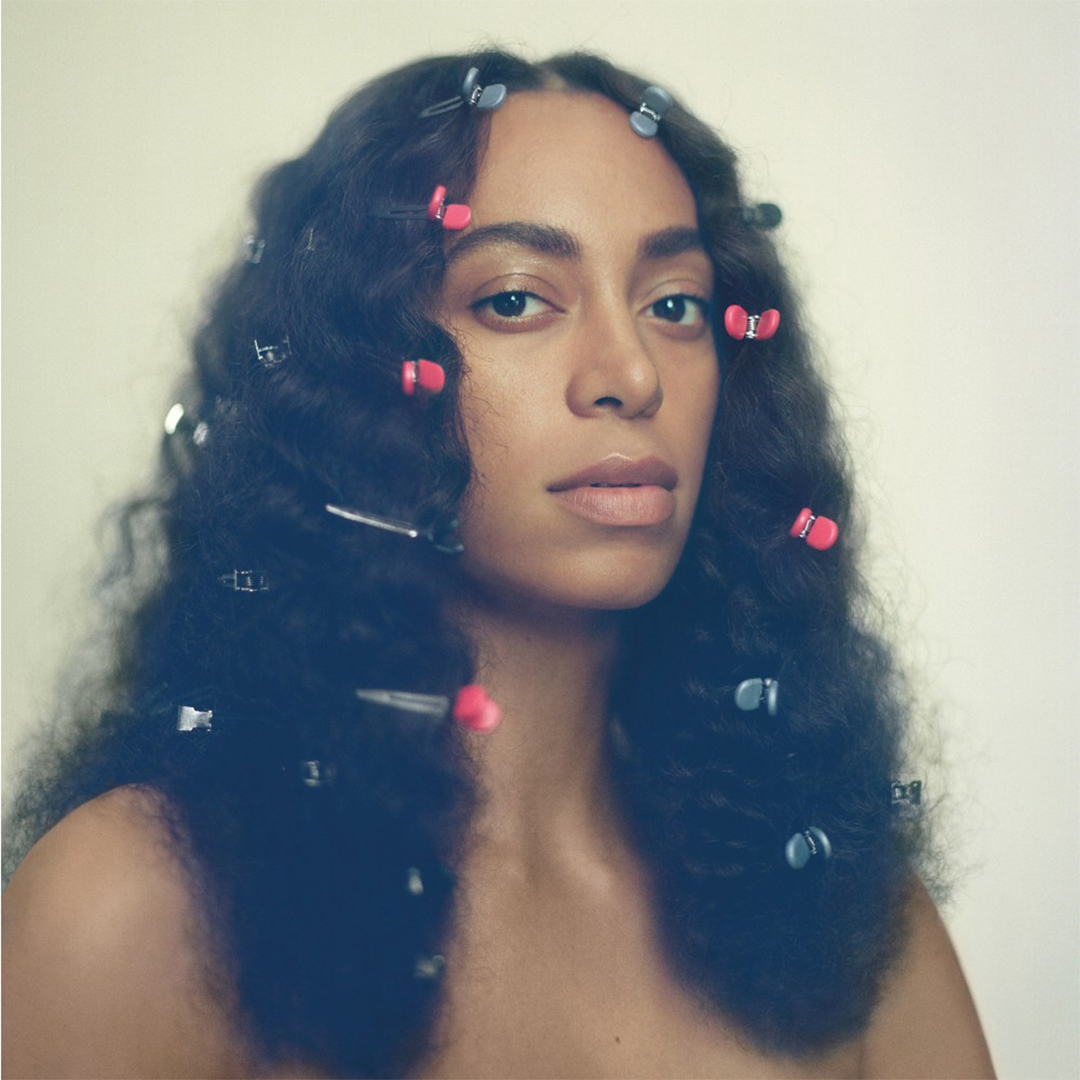There’s been no shortage of pessimism about 2016—a year that was plagued with fear, hatred, and confusion. In music, that ugliness was often confronted head-on, whether it was Beyoncé calling for a formation against rising tides, or YG offering Democrats an alternate slogan against Donald Trump. There was plenty to mourn over within music itself, as we said farewell to David Bowie, Prince, Leonard Cohen, Phife Dawg, Sharon Jones, and too many others. But nevertheless, we found comfort in song: Solange’s meditations, Chance the Rapper’s spirituality, Bruno Mars’s throwback levity. Frank Ocean resurfaced, and the Avalanches finally returned. For the most part, music in 2016 remained good.
Here are our favorite albums of the year—the ones that helped us get through it all.
50. Sturgill Simpson
A Sailor’s Guide to Earth
There’s no greater sense of awe and mortality in a man than witnessing the birth of his first child. The old conception of the self is obliterated from that very first cry, to make way for that new life. It’s a terrifying moment, to gaze into your child’s eyes and know in the root of your being Wordsworth’s adage: “The Child is the father of the Man.” That tumult of fear, mystery, and time lies at the heart of Sturgill Simpson’s adventurous third album, A Sailor’s Guide to Earth.
Sure, the 38-year-old Kentuckian might have made his name by tripping out on the likes of Jesus, Buddha, and “reptile aliens made of light” on 2014’s cosmically infused Metamodern Sounds in Country Music, but becoming a parent brought a new level of sobriety to Simpson and his plainspoken songwriting. A Sailor’s Guide to Earth offers no-nonsense advice and down-home imagery, yet still takes more sonic chances than the entire bro-country contingency put together. Southern rock, Stax-styled soul, proggy synths, even a 25-year-old Nirvana song—they’re all woven into this ambitious but rooted song cycle. In Simpson’s callused hands, any pick-up truck could become a spaceship. — ANDY BETA
LISTEN: Spotify | Apple Music
49. Moodymann
DJ-Kicks
After simmering nicely during its first half, bobbing in and out of hip-hop, jazz, R&B, and whatever it is that Little Dragon makes, the first officially released DJ mix by legendary Detroit producer/DJ Moodymann hits a stunning transition. Andrés and Lady’s percolating, broken-beat “El Ritmo De Mi Gente” gives way to the full-on disco house of “Uptown Tricks (Rodney Hunter Remix)” by Fort Knox Five, featuring Mustafa Akbar. Night becomes day, the sea becomes the sky, sepia turns Technicolor. These are the moments that make mixes what they are, that remind you of the worth in human intellect and soul over the algorithms that assemble our playlists. In Moodymann’s brilliant, 30-track mix, groove trumps genre and sonic cohesion is more likely to be found in claps, cymbals, and hi-hats, than it is in booming four-on-the-floor (though there’s plenty of that in the latter half). His DJ-Kicks is both an extended journey and a feast for short-attention spans, timeless and wholly modern in its multiplicity. — RICH JUZWIAK
LISTEN: Spotify | Apple Music
48. Pinegrove
Cardinal
Cardinal is an easygoing, modest album littered with intimidating words: “solipsistic,” “aphasia,” “Caravaggio.” Such is the charm of songwriter Evan Hall that all of these instances feel like acts of generosity—he wrangles complex concepts and lets you know, “Hey, there’s a word for that.” His band’s proper debut works on a similar level—in the grand tradition of Oh, Inverted World or Fleet Foxes, Pinegrove are almost radically likable, soft-spoken in a year of grandiose statements, filling a void that only existed in retrospect. Verbose and unhinged enough to honor their emo roots, warm and shambling enough to be called “alt-country” without the authenticity hang-ups, devastating and casual at the same time—it’s a complicated set of qualities and no one could figure out exactly what to label the new sound of indie-rock centrism. Fortunately, there’s a word for that now: Cardinal. — IAN COHEN
LISTEN: Spotify | Apple Music
47. Maren Morris
Hero
On one of Hero’s hit singles, Maren Morris sings, “I’m a ’90s baby / In my ‘80s Mercedes”—a quick clue that, despite the old-fashioned Southern revival feel of “My Church,” she’s very much a modern child. She kneels in prayer at the temple of FM, imagines herself rolling with Diddy, sings to cut-and-paste hip-hop rhythms—and, apart from offhand references to Hank Williams and Johnny Cash on the ode to highway radio, not one of these signify as country, which Morris nominally is. Morris never pretends to be a honky-tonk angel—she’s not a throwback like neo-traditionalist Margo Price—but she seems unmistakably country on Hero. Her major-label debut is littered with songs about class and heartbreak, the vulgarity is intertwined with wit and, most of all, it acknowledges that many Southern ’90s babies spent as much time listening to pop and hip-hop as they did country. Hero doesn’t sound like any one genre, but that is why it feels thoroughly contemporary: It illustrates how the old cultural musical lines are being redrawn. — STEPHEN THOMAS ERLEWINE
LISTEN: Spotify | Apple Music
46. Bat for Lashes
The Bride
“Through this veil they can’t see / The fog of death envelop me,” Natasha Khan sings on “In God’s House,” the emotional core of The Bride, her fourth album as Bat for Lashes. It’s a loose concept record about a bride-to-be whose fiancé dies in a car crash en route to the wedding, and all of the misery and healing that follows. Overcome by nightmarish images of the incident, our heroine decides to go on their honeymoon alone, slowly scaling the stages of grief in the process. It’s an achingly beautiful record about lost love, the ways we deal with trauma, learning to open up again, and chasing hope.
Rich with rolling keyboard chords and timely, jarring synth arrangements, the album’s songs hang together as stills and memory fragments, reminders of the departed; the Bride frames specific images and feelings—a ghostly encounter with her late partner, a premonition he had foreshadowing his untimely demise, the warmth of his bed, his car’s flaming wreckage. The plot rises and crashes on Khan’s pristine, often spectral voice, which navigates the ins and outs of heartache and tragedy with a disquieting serenity, as if she’s still waiting at the crash site in her wedding dress, long after her love has gone, embittered and alone. — SHELDON PEARCE
LISTEN: Spotify | Apple Music
45. Oranssi Pazuzu
Värähtelijä
On their fourth full-length, Finland’s Oranssi Pazuzu consolidate their claim on the figurative space between atmospheric black metal’s thin air and blackgaze’s celestial strain. Theirs is the sound of crafts disintegrating in high orbit, dead stars crumbling into gravitational fields, and the hypoxia of cosmic irrelevance. Even more than 2013’s Valonielu, Värähtelijä jettisons the immediate anguish of blast beats and frantic howls for extended hypnotic passages: the combo of vibraphone and toms that girds “Lahja,” the crotchet organ that grants doomy closer “Valveavaruus” its escape velocity. The band’s unerring sense of inertia neatly balances these proggier touches with a steely compositional sense. Explosions taper into radio silence; distress-mode pedals are answered by unholy choirs; bodies both human and stellar are examined on a molecular level. Presumably they’ll keep exploring until they can’t return a signal. — BRAD SHOUP
LISTEN: Spotify | Apple Music
44. Vijay Iyer / Wadada Leo Smith
A Cosmic Rhythm With Each Stroke
A Cosmic Rhythm With Each Stroke is a moving collaboration between a confirmed free-improv legend and a comparatively youthful polyglot with a wide variety of jazz, contemporary classical, and pop music bonafides. The two unlikely compatriots are actually old associates: 74-year-old Wadada Leo Smith, active since the late 1960s, allowed 45-year-old Vijay Iyer to play in a quartet with him. They are excellent foils for each other.
While Smith lingers on just a few crucial notes within each piece—rendering them either as murmurs or guttural attacks—Iyer relishes the boundless, genre-defying freedom of the duet format. He creates sweeping contrasts with creeper vines of bunched-up piano clusters, muted Rhodes splats, and electroacoustic tremors. The ECM label has traditionally specialized in gentle, tonal jazz with New Age and crossover-classical predilections: Keith Jarrett, Pat Metheny, Gary Burton. This album, like the label’s best music, resists settling into familiar modes or moods at every turn, lending itself to endless reinterpretation by the receptive, patient listener. It’s lively as often as it is plaintive and foreboding, recreating itself with each new tenuous chord. — WINSTON COOK-WILSON
43. Marissa Nadler
Strangers
Marissa Nadler’s gloomy sixth album, Strangers, is filled with a rare type of solitary songs, honing in on the nuanced relationship we can have with our past lives. “All the colors of the dark / Of all the colors of the heart / You had left your mark,” the Boston singer remembers on “All the Colors of the Dark,” with the piercing chill of a desolate New England winter. “Change, change, I got married on a Sunday afternoon,” she continues. Indeed, she did, and this record—which finds her reflecting on the ends of relationships as well as the end of the world—was written around the time of her wedding.
“It was an interesting dichotomy of going and picking out wedding flowers and going home and writing that the waves are gonna pull the city into the water,” Nadler told SPIN earlier this year. It helped her gain a level-headed perspective on her preferred themes of loneliness and longing. “People feel lonely when they’re in crowds of people or even when they’re in a happy relationship,” she said. “There are just certain things that don’t go away.” Strangers brims with gothic story songs over slow dissonant marches of strings, drums, and beds of buried synths. Within the wide depths of darkness there is a sense of purity, a specific strain of isolation, ruminating on the strangers who walk in and out of your life, and how maybe sometimes you’ve become one too. — LIZ PELLY
LISTEN: Spotify | Apple Music
42. Bruno Mars
24K Magic
A recent Rolling Stone cover story on Bruno Mars did not find the singer enjoying the carefree life of a superstar. Though the front of the magazine depicted Mars lounging on a diving board with a pristine pool and grand mansion at his back, the story detailing the making of his third album, 24K Magic, was headlined “Bruno Mars: The Private Anxiety of a Pop Perfectionist.” It looked at the belabored process that was crafting his first album post-“Uptown Funk,” a song from someone else’s record that nonetheless became the one hit Mars will never be able to outrun.
Thankfully, you hear none of this creative angst in the finished product, a nine-song, 34-minute platter of slick homages. Michael Jackson will always loom heavy for Mars, but here he dives further into the R&B from his youth. Highlights like “That’s What I Like” and “Versace on the Floor” drip with the gloss of classic New Edition singles, while “Straight Up & Down”—a co-write with T-Pain—samples the 1993 hit “Baby I’m Yours” by the group Shai. Mars is able to transcend his influences by stuffing his songs with little quirks like funny lyrics or instrumental squiggles—such as the popping sound that punctuates “Finesse”—that both prove his attention to detail and let his personality permeate the performances. Most artists might get swallowed by the task, but this one did grow up impersonating Elvis, after all. — JORDAN SARGENT
LISTEN: Spotify | Apple Music
41. Whitney
Light Upon the Lake
Light Upon the Lake opens as gracefully as an iris-in shot, our narrator hopping a train equipped with nothing but a bottle of booze and, before the opening credits can even roll, blacking out and waking up in Los Angeles. Whitney, led by drummer Julien Ehrlich and guitarist Max Kakacek (ex-Unknown Mortal Orchestra and Smith Westerns, between the two of them), earn their living in this dreamy, cinematic realm, where some of the year’s saddest, most deeply felt songs were masked by Ehrlich’s reptilian croak and Kakacek’s wispy guitar playing.
Whitney write songs that sound timeless and pristine from the first time you hear them, endowing them with a found-artifact feel, like you’re looking at a stranger’s Polaroids. This was the soundtrack to drinking too much, feeling too much, taking the long way home; made up of the intermittent regrets and revelations you have after the drunkenness gives way to sobriety, but before the hangover sinks in. These songs resonated via Whitney’s self-described “country-soul” sound, blending their themes beautifully and suggesting that heartbreak, disappointment, alienation, and yearning don’t resolve; they merely settle, like, well, light upon a lake. — MATTHEW RAMIREZ
LISTEN: Spotify | Apple Music
40. Miranda Lambert
The Weight of These Wings
Conventional wisdom dictates that any celebrity needs to fashion their first album after a divorce as an explicit confessional, a notion Miranda Lambert discards on The Weight Of These Wings, a double album whose central conceit is motion. The first of its 24 songs is called “Runnin’ Just In Case” and the last is called “I’ve Got Wheels,” and between those bookends, she celebrates covered wagons and getaway drivers, envisioning herself as a highway vagabond—anything that gets her away from reality, basically. What’s brilliant about Wings is how the country maverick buries her heartache in a murky, muddy production. Hidden in its 90 minutes is the occasional emotional outburst—”Things That Break” is tucked away on the start of the second disc—but Miranda largely diverts attention from her loss by surrounding it with wry come-ons and off-color jokes, songs that tap into her rebellious nature but can’t help but seem slightly sad due to the execution and context. Maybe she doesn’t dish about Blake, but the mess and melancholy of this record show how deeply the divorce cut her, even if she never says so outright. — STEPHEN THOMAS ERLEWINE
LISTEN: Spotify | Apple Music
39. YG
Still Brazy
Still Brazy, YG’s followup to his splashy 2014 debut album, suffers from a few typical sequel tropes: It’s bolder, louder, and wears its aspirations on its sleeve more obviously than its predecessor. The primary cast also went through a shakeup: Due to a brief personal beef, DJ Mustard, YG’s most frequent and notable compatriot, is nowhere to be found on the record. So instead of sparse, quick, black-and-white ratchet beats, we have booming, red-drenched, G-funk bops that take their time to unfurl like Broadway tunes. That extra room allows YG to stretch.
Now that the origin story is out of the way, the Compton rapper’s more concerned with the wherefore of being shot in the studio (“Who Shot Me?”), dealing with hangers-on (“Gimmie Got Shot”), and living a street life as a famous rapper (“Twist My Fingaz”)—then he gets down and dirty by ending the album with a trio of political songs promoting solidarity, condemning police violence, and proclaiming “Fuck Donald Trump.” There are some scattered ideas, ill-conceived song concepts (the regrettable “She Wish She Was”), and, due to a wider pool of producers and collaborators, fewer of the aesthetic restrictions that made My Krazy Life so potent. But don’t get it twisted: YG is serious about crafting AOR (Album-Oriented Rap), and he’s done it for two records in a row. This is a sequel worthy of the original. — MATTHEW RAMIREZ
LISTEN: Spotify | Apple Music
38. Maxwell
black SUMMERS’ night
A piano run here and a hi-hat there are all Maxwell needs to evoke desire, both ungratified and achieved. On his first album since 2009, the neo-soul avatar proves himself master of a terse R&B that has finally caught up to ambitions that his first couple of albums couldn’t support melodically. Shimmering pleas like “Gods” and “Lake by the Ocean” limn their title metaphors with precision and punch. Yet with Maxwell there’s a sense in which the beloved matters less than the valentines he writes: “You are the object I get lost in,” he coos on “Hostage,” admitting that concentration has made him moony. Celebrating his own prowess while pledging his troth on one knee, he’s a classic love man after all. — ALFRED SOTO
LISTEN: Spotify | Apple Music
37. White Lung
Paradise
Blood, milk, sewage, liquid gold: So forms the basis of White Lung’s grotesque alchemy on Paradise, a masterwork in paradox. Clocking in at 10 tracks and 28 minutes of martial bass-drum taps, sawtoothed bass lines, and snarling guitar leads, the LP’s as ephemeral and aggressive as any hardcore-punk album. And yet, between HEALTH board-whiz Lars Stalfors’s seamless production and the relentless onslaught of contagious choruses, it’s hard to deny the pop appeal of Mish Barber-Way & Co. White Lung’s sharp melodic instincts lead them to circle-pit bliss on Paradise, but it’s their illustrations of true love’s carnal, dirty reality—rich girls having babies with trailer trash on “Kiss Me When I Bleed,” newlyweds copulating like animals in the middle of the wilderness on the title track—that provides the greatest rush of all. — ZOE CAMP
LISTEN: Spotify | Apple Music
36. The Avalanches
Wildflower
One of this year’s coolest uses of digital media was an illustrated New York article about a single piece of equipment at one NYC subway station and the ponderous pace of change at the MTA. If that article had a soundtrack, it might be the Avalanches’ “Subways,” a song about the sound of the ground moving beneath you, of gears turning and circuits firing. It’s fitting subject matter for a crew of collagists in nonstop motion, spinning a retro-futurist swirl of soul samples and psychedelic curiosities. The long-awaited Wildflower is full of moments of surprise and discovery—the off-kilter calypso stomp of “Frankie Sinatra,” an advertisement for “ethereal cereal” on “The Noisy Eater”—capable of making a mundane underground commute feel like an elaborate, sunbathed experiment. (The group even shot the charming video for “Because I’m Me” in New York’s subway system.) At just over an hour, Wildflower is a cross-town trip, but after a 16-year delay, we’re lucky to have it at all. — ANNA GACA
LISTEN: Spotify | Apple Music
35. Car Seat Headrest
Teens of Denial
Will Toledo isn’t as tortured as he sounds. A 24-year-old who doesn’t look like he’s of drinking age (the McLovin vibes are strong), he’s simply racing through his emotions, trying to figure shit out along the way. At least that’s how he sounds on Teens of Denial, his 13th(!!) album as Car Seat Headrest, and first in a real studio since signing to Matador Records. For his latest far-reaching indie-rock set, Toledo eschewed the DIY bedroom ethos of his previous material, going pro and recording Denial with a full band.
Sprawling and agitated, the record is built on typical sad-boy narratives—full of distressed self-loathing, alcohol-drenched rants, and slow-rising panic attacks. In years past, Toledo would’ve hidden his voice beneath layers of reverb, but here, the singer openly outlines his hysteria. Whether he’s lamenting his lost backpack or pondering that next glass of beer, Toledo makes the mundane sound brainy and cool. You wonder if he’s gonna make it to the next week (or, hell, even the next day), and just what type of shape he’ll be in if he does. A 70-minute epic, this record’s a beautiful mess from which you can’t look away, because the drama never really lets up. “I’m so sick of … fill in the blank,” Toledo declares at the top of Denial. Okay, maybe he is a little tortured. — MARCUS J. MOORE
LISTEN: Spotify | Apple Music
34. dvsn
Sept. 5th
This slow-jam renaissance that finds line blurring—between rapping and singing, between the avant and commercial, between tempos even (depending on how you count)—seems almost totally lost on OVO R&B duo dvsn. Their particular stamp on the form comes via minor eccentricities—a gospel choir here, an Elliott Smith interpolation there—that require close attention to properly appreciate. Producer Nineteen85’s approach is modern, but the focused sonic palette and unwavering devotion to making music to make babies to is classicist. Lest you find vocalist Daniel Daley’s perpetually lovesick ways old-fashioned, he has a knack for purely contemporary bluntness: “I can’t shake the feeling that I could make it better,” he sings of the state of his relationship on the title track, “if I could have sex with you.” His message is pragmatic, their sex music is utilitarian: R&B at its most efficient. — RICH JUZWIAK
LISTEN: Spotify | Apple Music
33. Kamaiyah
A Good Night in the Ghetto
On her debut mixtape, Kamaiyah is part scrappy comic relief—she falls asleep all wasted at the wheel like Layne from River’s Edge and fucks like Elaine from Seinfeld—and part rugged individual MC—she bemoans cancer like Young Thug, and obliquely speaks up for the 99 percent like Boots Riley. “How does it feel to be rich?” she wonders more than once, offering herself up as a proud heroine of the regular-ass. And this is all while handling the curves of counterfeit Cash Money 808 skitters like she’s B.G. and jumping up and down around “Axel F”-ish sounds like she’s Crazy Frog.
The 24-year-old boutique nostalgist also pines for the era of hip-hop that thrived when she was just a kid (like we all do), courting the cold characteristic throb of the West Coast in all its permutations, from Egyptian Lover on through to, say, Iamsu!, and then provides plainspoken feminism in response when it’s needed, which is often. See: “Niggas,” a tribute and corrective to Too $hort’s “Freaky Tales” that’s as unabashedly pro-fucking and funny as the original but also unravels rap’s slut-shaming double standards. Dogging the whole thing is closer “For My Dawg,” a quick dose of too-real talk about friends eaten up by disease and shot dead and all the little things that sit with you when somebody’s six feet under too soon. And it’s always too soon, isn’t it? — BRANDON SODERBERG
LISTEN: Spotify | Apple Music
32. Parquet Courts
Human Performance
With Parquet Courts, much like the HBO series High Maintenance, it’s less about what’s in the joints than why people spark them. Human Performance takes the late-night rooftop philosophy and emotional subtext of Andrew Savage and Austin Brown’s songwriting and brings it to the fore in all its tangled and self-reflexive glory. In maintaining a firm command of their sawdust post-punk vibe, the band charts a careful path through the warrens of love, homicide, and loneliness while living in the uncaring and very stupid borough of Brooklyn. (It’s almost like it’s a character in the movie!) Savage repeats the line, “I still remain: One man solitary and no city” as a bitter indictment on their way to figuring out what it means to be a human in 2016. — JEREMY D. LARSON
LISTEN: Spotify | Apple Music
31. The Hotelier
Goodness
Many of us are used to thinking of emo as a reactionary art form sourced from teenage heartbreak and ill-contained spite: Boy meets girl; girl breaks boy’s heart; boy gets back at girl by scribbling down an über-referential account of the relationship atop twinkling guitars. Painting a damaging portrait of one’s ex by way of screams and sniffles may hit the cathartic sweet spot—but glancing at all those burned bridges several years down the line, was the revenge really worth it?
To the Hotelier, the answer is no; and so, guided by the sonic playbook of angsty forebears like the Promise Ring and American Football, the Massachusetts band channels the turbulent spirit of their genre, that rejection-fueled rage—only to turn their backs on the bitterness and propose a world where breakups need not mark love’s end, but rather the beginning of a different phase in lifelong partnership, devoid of sex but no less lacking in concern or respect. Just like the nudists on the Goodness cover, the #posivibes mentality inherent in standouts like “Piano Player” and “You In This Light” implies an innocence as alien as it is unattainable, but in the Hotelier’s hands, infinite love—and uplifting emo—go from mythic concepts to vivid realities. — ZOE CAMP
LISTEN: Spotify | Apple Music
30. Jenny Hval
Blood Bitch
“We live with a constant vaudeville of contradictory stories that makes it impossible for any real opposition to emerge,” the documentarian Adam Curtis said in a 2014 interview about propaganda. “Because they can’t counter it with a coherent narrative of their own.” Jenny Hval excerpts that clip as the intro to her song “Untamed Region,” and while it’s jarring to hear a male voice interrupt her menstruation-themed album, no actual lyric sums up 2016 quite as neatly.
In the context of the track—which eventually returns to Hval’s bloody fantasies—Curtis’s speech feels like an oblique reference to the way patriarchy gaslights women. But its inclusion is ambiguous enough to illuminate all of the Norwegian avant-artist’s sixth album, Blood Bitch, situating our obsession with our own imperiled bodies within a wider world that’s going to shit. The anxiety that Hval taps into is a side effect of the terror and confusion of living with a dominant narrative that erases your experience. In two-and-a-half minutes that consists of pretty much nothing but heavy breathing, “In the Red” dares us to wonder whether we’re overhearing sex or violence. Writing about the disarmingly sweet, vulnerable single “Conceptual Romance,” Hval noted that “the strength of a song is its fragility.” Like the year we just survived, Blood Bitch is about female fear as much as female power. — JUDY BERMAN
LISTEN: Spotify | Apple Music
29. Cymbals Eat Guitars
Pretty Years
Four albums in, Cymbals Eat Guitars whittled their knotty guitar theatrics into straightforward beer rock, giving millennials raised on Springsteen something to fist pump along with. Jersey boy Joe D’Agostino always cited Titus Andronicus’s Patrick Stickles as an inspiration, and he similarly weaves sweeping mythology out of the minutiae of his life—getting snowed in during the blizzard of 2016, hanging out with indie-rock boy wonder Alex G. But Pretty Years isn’t just the working artist’s lament. These songs are suffused with cosmic beauty, the wild nothing of D’Agostino’s emotive guitar tone spiriting the band toward a higher plane. You hear it in the twinkling twilight of “Have a Heart,” the corrugated soloing on “Wish,” grandiosity revealed within the quotidian. “If this is infinite,” he sings, “the center is everything.” Jersey never sounded so close, and yet so far away. — JEREMY GORDON
LISTEN: Spotify | Apple Music
28. Kaytranada
99.9%
The gestation of new artists is such that it’s no longer remarkable for a debut album to arrive fully formed—after years of EPs and live sets and SoundCloud previews, why shouldn’t it? What is noteworthy is a debut, like Kaytranada’s 99.9%, that already sounds familiar. At times it might be too familiar; the sole flaw here—the 0.1%, as the Montreal producer would put it—is that 99.9% slips a bit too cleanly into the interzone of hip-hop, house, and R&B. But it’s never obvious. For every buzzy act you’d expect (like Anderson .Paak or Syd tha Kyd), or beloved comeback beneficiary (like Craig David), there’s a comparative newcomer like Phonte (on the Pharrell-ish “One Too Many”) or Shay Lia (on the late-night cut “Leave Me Alone”).
The outro of “Weight Off” is about one chord change away from bedroom-production cliché—in this case, an “Aquatic Ambience” remix—but doesn’t get there until after unfurling a couple of minutes of limber jazz, a showcase for BADBADNOTGOOD‘s drummers. The album’s as suited to clubs as solo listens, and either will reveal little moments: a sprawling synth-guitar solo following an already standout Vic Mensa track, the interlude in “Vivid Dreams” suspended beneath one high house synth. And unlike lesser producers’ LPs, the guests don’t steal it. The feature-less joints—the raucous “Breakdance Lesson N. 1” and jam-like “Lite Spots”—are among the highlights. That there’s room for growth here shouldn’t surprise; what’s impressive is that, judging by 99.9%‘s variety, that growth could potentially come from anywhere. — KATHERINE ST. ASAPH
LISTEN: Spotify | Apple Music
27. Nick Cave & the Bad Seeds
Skeleton Tree
“I spun on my wheel like a laboratory rat,” Nick Cave sings early into Skeleton Tree, the apocalyptic 16th studio album with his longtime band, the Bad Seeds. If the record’s sound and mood are any indication, it was slow going. Aside from Cave’s familiar voice, the music is sparse, barely there. The only time the tempo quickens past a crawl, on the fitful “Anthrocene,” you wonder whether it’s being played for ironic effect: a looped, sprightly clave pattern is filtered to sound like it’s coming from an old radio, then quickly fades out, replaced by wandering drumming.
On that song, Cave seems to be mourning the gradual loss of Earth itself; its title comes from a proposed name for our current geological epoch, characterized by the deteriorative effect of human life and industry on global ecology. Elsewhere, it’s hard not to hear the reverberations from the loss of Cave’s son Arthur, who fell from a cliff and died at age 15 during early Skeleton Tree sessions. For Cave, it must have felt something like the end of the world. At times, as on “Rings of Saturn,” he is a fountain of vivid and beautiful imagery: “Her eyes that look at me through her rainy hair / Two round holes where the air buckles and rushes in.” On “I Need You,” he’s the lab rat on the wheel, cycling through a set of fixed fragments: a red dress, a supermarket aisle, the cold realization that “nothing really matters when the one you love is gone.” — ANDY CUSH
LISTEN: Spotify | Apple Music
26. ScHoolboy Q
Blank Face LP
The 72-minute Blank Face LP is woven with the same dense, blues-coated fabric that distinguished To Pimp a Butterfly. But ScHoolboy Q doesn’t concern himself with matching Kendrick Lamar’s historical scope. Blank Face‘s strength lies in how it fuses its ambitions to compelling gangland narratives, proving once again that Q is one of hip-hop’s most underrated griots.
Blank Face highlights a charismatic street survivor and boasts production that’s easily among the year’s best—the doomsday brass on the Vince Staples-assisted “Ride Out” and the stardusted catharsis of “Black THougHts,” for starters. Q’s signature mix of everyman black comedy and felt trauma is delivered with the acidity that was missing from his radio-chasing third effort, 2014’s Oxymoron. The pew-pew’ing character sketch of “Groovy Tony / Eddie Kang” balances maudlin taunts (“Young Groovy turn your hood into a movie”) with an undeniable swagger. “JoHn Muir” is soul music fit for breaking jaws. These multiplicities are given proper context in the album-closing “Tookie Knows II,” a bleak look at the hood-to-prison pipeline that’s marked Q’s existence. “We might die for this shit,” the Top Dawg soldier claims in his nasally growl. It’s a reminder that Blank Face’s fatalism is based off of real stakes. — BRIAN JOSEPHS
LISTEN: Spotify | Apple Music
25. Nicolas Jaar
Sirens
Nicolas Jaar has been the reluctant young king of American electronic music ever since his 2011 debut elevated him from Wolf+Lamb loft parties to festival stages. Rather than follow it up directly, he went off the grid, beatwise. There was the noir-rock of his Darkside duo with guitarist Dave Harrington, the amorphous Nymphs singles, an imaginary soundtrack for the 1969 Soviet film Pomegranates, and a real soundtrack for Jacques Audiard’s Palme d’Or-winning 2015 film, Dheepan.
But for every new direction he struck out on, his sound matured. His long-awaited second solo album, Sirens, found him focusing his vision while also taking every detour available. So there’s eerie ambience, doo-wop, Alice Coltrane’s constant elevation, Suicide’s monolithic throb, bits of childhood dialogues with his father, and even a slinking reggaeton beat. Yet Jaar makes it all coherent. Part of Sirens’ blare is the history of protest, both in the Chile of his childhood, under the shadow of the junta, and in the present moment in his adopted home of America. Facing a similarly totalitarian future, Sirens has become eerily more prescient. — ANDY BETA
LISTEN: Spotify | Apple Music
24. Anderson .Paak
Malibu
For many, Dr. Dre’s Compton served as a passing introduction to promising singer-songwriter, producer, and rapper Anderson .Paak. Weaving through Dre’s verses on “All in a Day’s Work” and offering potent hooks on “Animals,” .Paak brought apt, no-bullshit responses to the rampant police brutality and violence in southern California. He doesn’t shy away from these topics on his uplifting sophomore LP, but backed by silvery synths, plinking piano chords, and glassy group vocals, his lyrics are far more personal.
The 30-year-old Oxnard, California native is a dextrous protagonist, nimbly painting scenes from his troublesome past with surprisingly warm colors. His upbringing wasn’t easy—both parents spent time in prison and his father was abusive—but he chooses optimism over bitterness, adopting bright musicality over moody blues. Across Malibu‘s landscape, he bounces between pillowy jazz flourishes, gospel-choir harmonies, and contemporary, club-ready rhythms. Dre’s inexhaustible protege can summon the spirit of classic soul and R&B—see the lush, swooshing tones of “Put Me Thru”—but he speaks to modern romance as well, lamenting trivial social media anxiety on “Without You.” Malibu offers Anderson .Paak the sort of spotlight he really deserves—it’s his proper introduction. — TESS DUNCAN
LISTEN: Spotify | Apple Music
23. Joyce Manor
Cody
Joyce Manor found a map triangulating teenage angst and quarter-life crises, then followed it to the X under the smokers’ huddle outside the local dive. Their “Fake I.D.” tells you everything you need to know about these scrappy sad-sacks: There’s a sarcastic introduction to a main character; a Kanye West joke worthy of its own cultural analysis; the strangely evocative appeal of the phrase “breaking my heart going window shopping”; a quick pivot to honor a dead friend. As for the rest of Cody, the riffs are tight but not brittle, and the production’s just grubby enough—almost every track kicks off with pent-up “in case of emergency, break glass” energy. It’s an emotional boilermaker served with a shot of bleak-as-hell: Even these California boys’ funniest lines (“I’m 26 and I still live with my parents / Oh, I can’t do laundry / Christ, I can’t do dishes”) are born from all-consuming self-deprecation and existential terror. And in a year when a lot of the best albums were too long, Joyce Manor tear it all down in 24 minutes to boot. — ANNA GACA
LISTEN: Spotify | Apple Music
22. Kevin Gates
Islah
Kevin Gates‘s Islah was a long time coming, from an artist who first bubbled up from Baton Rouge in the late ‘00s. A prison stay sidelined his career briefly, and upon release he signed to Atlantic Records and began a long, steady process of building up a national following with a series of cross-country tours, and a traditional industry dose of artist development. The result: Islah is a platinum-selling rap album in an era when you can count those on one hand. Of course, this process-oriented explanation understates the artistic reasons he connected with so many fans.
Songs like “2 Phones,” “Really Really,” and “Time For That” were massive victories of songwriting craftsmanship. On cuts like “Jam” and “Pride,” as he has throughout his career, Gates showed an interest in speaking to his female fans without condescending, a rare approach for male artists in any genre. His willingness to bare his soul suggests a blues lineage, but an ear for poetic turns of phrase balances that raw expressiveness with an artful unpredictability. He’s an undeniably divisive personality, one whose flaws are scattered across TMZ headlines and in his music alike—but thus far it appears to only draw his expanding fanbase further in. His willingness to go out on a ledge—the country sound and unexpected chorus found on “Hard For” are most notable—proves that despite the mainstreaming process, Islah was built on the foundation of Kevin Gates’s genius. — DAVID DRAKE
LISTEN: Spotify | Apple Music
21. KING
We Are KING
For those who remembered (for five years) to wait with bated breath, this year’s We are KING was everything fans of the R&B trio’s 2011 EP had hoped it might be. Its songs are anchored by detailed, shimmering future-funk grooves—logical, considering that the Los Angeles-based Strother twins were reared in Minneapolis, born in the era of their future mentor and cheerleader, Prince. Every number is odd, but inevitably magnetic; forget those stale “bedroom” identifiers, KING prefer “LSD R&B.” The group, rounded out by third member Anita Bias, layers their disparate reference points on top of one another: They dial in serrated synths that sound more suited to the Knife than Sade, and their tricky chording feels repurposed from old jazz-fusion charts, pivoting gracefully away from easy resolution.
Breathy vocal harmonies in every refrain crescendo like waves cresting slowly near the shore, paired with satisfying platitudes: “We plan our escape,” “Close to mine,” “Till I have your heart,” and so on. This is corporeally effective, hairs-on-the-back-of-the-neck type of stuff: stylish but deeply rooted in full-bodied soul music. Most importantly—and without drawing too much attention to the fact—it is truly singular. Like their fallen idol Ali, to whom they pay tribute on “The Greatest,” KING made a bold play for consideration among the best and most innovative in their genre this year, crafting a formidable debut album that is worthy of their name. — WINSTON COOK-WILSON
LISTEN: Spotify | Apple Music
20. Kendrick Lamar
untitled unmastered.
It’s easy to forget that Kendrick Lamar dropped a surprise collection of ambitious but unfinished thoughts this year, and that it came a month after LeBron James informally requested said tracks via Twitter. Looking back, the eight-track album—released with virtually no hype in early March—made so little noise. But in the context of Kanye West’s perfected-to-oblivion The Life of Pablo and Frank Ocean’s stair-building experiment, Kendrick’s untitled unmastered. stands out as a well-executed blueprint for controlled chaos.
For a little while now, musicians have embraced the freedom to disown traditional album formats and rollouts as part of a mass undoing of industry standards; but 2016 was a banner year for top black artists who, even when beholden to labels and streaming platforms, were able to create unfettered. Untitled unmastered.—scraps from the To Pimp a Butterfly sessions that catch Kendrick tinkering with the spillage from his overstuffed brain and indulging lax jazz arrangements—proves that an unconventional release doesn’t need expensive visuals or endless reams of social media speculation to impress. It just needs a soul. — CLOVER HOPE
LISTEN: Spotify | Apple Music
19. ANOHNI
Hopelessness
Hopelessness was released before the presidential election, when the most powerful country in the world elected as its leaders a political party that treats climate change as made-up mumbo jumbo, designed to take profits out of the pockets of good, God-fearing corporations. Well, God won’t save citizens from the rising seas, the melting ice, the boiling temperatures that surely spell doom for the human race—or will at least force hard-headed developers to stop building in Miami. ANOHNI’s latest record chronicles these anthropocentric anxieties that are available to anyone with a newspaper subscription: despair pop executive produced by Glenn Greenwald.
Her inimitable voice, soft yet incantatory, wails about the life force being sucked out of the planet, the animals dying from the trees, the whistling death apparatuses killing people from halfway around the world, over spooky production (via Oneohtrix Point Never and Hudson Mohawke) that pulses and chirps like circuitry decaying inside the machine. “How did I become a virus?” she sings, resigned and horrified. But this is not exclusively nihilistic music. It’s alive, her vocals and the sounds full with passion, communicating what humanity is losing in a world cracking apart because of humanity. Hopelessness may be the natural state going forth, but it’s not a reason to give up. — JEREMY GORDON
LISTEN: Spotify | Apple Music
18. Esperanza Spalding
Emily’s D+Evolution
Esperanza Spalding‘s journey from jazz prodigy to reluctant, memed-on Grammy winner to colossally deserving Grammy winner has been quiet but utterly rewarding. (And hopefully enough of a breakthrough that said Grammys will henceforth not be mentioned in every single write-up.) On Emily’s D+Evolution, there’s as much Joni and The Kick Inside to her voice as there is mentor Wayne Shorter, stated inspiration Cream, and an entire decade-plus of prog-funk to her arrangements.
Her first album in four years is ambitious and eclectic in its subject matter, taking on religious existentialism (“Earth to Heaven”), the canon (“Ebony and Ivy,” which, amid a rapid-fire intro, gives us the glorious “bastardized Darwinian logic”), physical love (the contented coital onomatopoeia of “Rest in Pleasure”), and Willy Wonka (a straight-faced cover of Veruca Salt’s “I Want It All”). The tracks are lush and the melodies, at times, would challenge the most trained of jazz vocalists, but when Spalding navigates them, they don’t feel like pieces to study; instead, they feel like luxuries to revel in. This is perhaps the most assured album of the year: an argument for steady confidence and slow, purposeful evolution. — KATHERINE ST. ASAPH
LISTEN: Spotify | Apple Music
17. Young Thug
JEFFERY
It seemed, for a moment at least, that Young Thug might be running out of mojo, that even the most idiosyncratic MC of our era could no longer contort into new and exciting shapes. The Slime Season series and his one-off mixtape, I’m Up, shared a similar sound and feel to his Lil Wayne homage-turned-progeny dissent, 2015’s Barter 6; they were dark and exhilarating but somewhat familiar, a minor setback for an artist who, up until then, was continuously growing into something more advanced.
Apparently, all he needed was a change in perspective. JEFFERY, his latest exhibition of complicated and stylish vocal acrobatics, is the first record written separate from his Thug moniker, a slight recalibration that produced an entirely new galaxy of dynamic flows and oral tics. Stretched across 10 eclectic songs, named for his “idols” (the most scintillating among them dubbed “Harambe”), this is a project that’s constantly shifting and adjusting, kaleidoscopic in vision. When Young Thug’s in peak form, exploding into choruses of yelps, squawks, and cackles, it’s pure and random with unquantifiable bursts of energy. This, perhaps, is the most unpredictable he’s ever been—it’s certainly the most ecstatic. — SHELDON PEARCE
LISTEN: Spotify | Apple Music
16. Danny Brown
Atrocity Exhibition
Danny Brown’s traumatized fourth full-length is thematically closest to dejected, still-down-in-it 2016 records like Kodak Black’s Lil B.I.G. Pac and Bon Iver’s 22, A Million—all fatalism and “Well, what now?” dread. We first meet Danny high as hell and trying to keep a threesome going (“Had a threesome last night, ain’t matter what it cost / Couldn’t it get hard, tried to stuff it in soft”) and what follows is a collection of crooked confessionals indebted to the ADHD avant-garde discord of another Detroit explorer of the inevitable, J. Dilla.
But Atrocity Exhibition is actually produced mostly by Paul White, whose every beat here tries to top his tangle of This Heat and Hawkwind samples that was XXX highlight “Adderall Admiral.” On “Ain’t It Funny,” a Justice-like horror honk that sounds like drugs, Brown quips, “Broke, serving fiends / Got rich became an addict / Ain’t it funny how it happens?” Occasional asides about mass incarceration, killer cops, and d-boy ethics (he scolds dealers for their fentanyl-laced dope) nod to the outside world but really, it’s a kind of thrilling 45 minutes or so holed up in a hotel, hopped-up and hollowed out. — BRANDON SODERBERG
LISTEN: Spotify | Apple Music
15. Leonard Cohen
You Want It Darker
Leonard Cohen gave the world the enduring image of his final year and final album in an interview with David Remnick, Editor-in-Chief of the New Yorker. “I’ve got some work to do. Take care of business,” the 82-year-old Cohen said. “I am ready to die. I hope it’s not too uncomfortable. That’s about it for me.” It’s pretty good as far as final missives go, and it echoes a recurring line from You Want It Darker’s gothic title track. “Hineni, hineni,” the master songwriter sings, Hebrew for Here I am. “I’m ready, my lord.” Cohen has long been preoccupied with death, and never more so than on the eve of his own passing.
But there was always another Leonard Cohen: the one who dropped acid in Greece in the ‘60s, who stared up from between two beautiful women on the cover of Death of a Ladies’ Man, who seemed to enjoy preferred access to the full richness of life, pleasure and pain both. That Cohen shows up a few times on Darker, too. “I used to play one mean guitar,” he boasts on “Traveling Light,” over Gypsy-jazz melodies and a swaggering trip-hop backbeat. On “On the Level,” he sings, “I was fighting with temptation, but I didn’t want to win / A man like me don’t want to see temptation caving in.” After Cohen’s death, his son Adam revealed that his father would occasionally smoke medical marijuana while making the album, dancing slowly in front of the monitors as the rough tracks played. Maybe we should remember Cohen instead by the sly clarification he issued about a week after the New Yorker interview was published: “I said I was ready to die recently, and I think I was exaggerating. I’ve always been into self-dramatization. I intend to live forever.” — ANDY CUSH
LISTEN: Spotify | Apple Music
14. Mitski
Puberty 2
Mitski Miyawaki is wrestling with stability. She’s growing up and reconciling with what it means to be happy while trying to live up to the standards in place for her—societal, emotional, and romantic. The 26-year-old New York singer-songwriter grappled with mental health on 2014’s Simpsons-referencing Bury Me at Makeout Creek, but here she’s staring the demons down directly. Puberty 2 has a haunting quality to it; melodic yet melancholy, it moves skillfully from somber rumination to stormy outbursts.
Even more admirably, Mitski manages that while subverting a genre dominated by white heterosexual males, reclaiming it as a space for her voice as a woman of color. “Your Best American Girl” employs guitar-rock bravado to underscore her helplessness in the face of a lover’s unrealistic expectations. She isn’t doing it to impress anyone—she’s wielding those electrifying riffs and undulating drum fills for her own self-realization. She also adopts the viewpoints of different characters throughout the record (see: “Dan the Dancer,” “Crack Baby,” “Happy”) to engage with the struggles of addiction and depression. But she can’t escape her own neuroses, putting on a brave face for “My Body’s Made of Crushed Little Stars,” frantically singing, “I better ace that interview / I should tell them that I’m not afraid to die.” In a year when scaremongering and close-mindedness appear to be winning out, Mitski’s fearlessness feels essential. — TESS DUNCAN
LISTEN: Spotify | Apple Music
13. Kanye West
The Life of Pablo
Yikes. For his full-length fashion-show soundtrack, Kanye West offers the most unsparing exploration of his psyche thus far, and that’s saying something. The Eyes Wide Shut fantasies and New Testament visions stack up quickly beside moments when he’s prowling Instagram comments for a self-esteem boost, and suffering episodes brought on by Lexapro withdrawal. “I just wanna feel liberated,” ‘Ye bleats on “Father Stretch My Hands Pt. 1,” before extending an apology: “If I ever instigated, I’m sorry.” A lot of the spectacle that is The Life of Pablo feels like this—damage control in the wake of a disaster.
Much has been made of the blown deadlines and post-release tweaks, but there’s redemption in the details—the finger-snapping percussion on “Highlights,” the ghostly keyboards from “Real Friends”—and in the collaborations. Indulging his more generous impulses, Kanye blessed Chance the Rapper with his first true crossover moment; Yeezy’s repurposing of “Panda” helped make Desiigner a star (one who’s likely destined to play corporate gigs, but still); even Chris Brown achieves transcendence, however briefly, thanks to his heavenly turn on “Waves.”
When examining the footprint The Life of Pablo left on 2016, it’s impossible not to mention Kanye’s November hospitalization for “exhaustion.” As frustrating as some of his recent behavior might be, the guy’s clearly working through something, and his seventh album reflects those anxieties. Listening now to Pablo’s fifth-quarter addition, “Saint Pablo,” it’s especially jarring to hear him rap, “The media said he’s way out of control / I just feel like I’m the only one not pretending / I’m not out of control, I’m just not in they control.” For his sake, I hope he’s right. — KYLE MCGOVERN
LISTEN: Spotify | Apple Music
12. Rihanna
ANTI
Badgal Riri never exactly clarified what she was rebelling against, but the long-anticipated album known informally as #R8—her eighth—makes it pretty clear. In an effort to progress as an artist, something she’s always sought to do and not often given credit for, ANTI is an almost wholesale rejection of pop trends and cliché retreads of basic moneymakers—though, in that sense, it is a part of a different 2016 trend in which black women pop stars were at their most self-generating and creative. Even “Work,” the Drake-assisted smash that surely motored along thanks to their dating narrative, was exactly the opposite of the softbatch quasi-dancehall-lite on pop radio: It was, simply, a song about a West Indian woman wining on a dude she knew was beneath her.
But more than any of that, ANTI was a showcase for the IRL work Rihanna had most certainly been doing with a vocal coach: This chick can sang—”Love on the Brain”!—as stops on the ANTI World Tour confirmed. It was a repudiation of every bit of slander she’d gotten since 2012’s Unapologetic, and a revalidation that she is on her own time, never offering what you what you expected by always giving you what you need; in this case, a stoner doing contemporary torch songs in the club. — JULIANNE ESCOBEDO SHEPHERD
LISTEN: Spotify | Apple Music
11. Blood Orange
Freetown Sound
One of the great ironies of America is that it’s a country built by people of color, yet they’re the ones who’re othered. As a black Brit living in the lonely expanse of New York, Dev Hynes is undoubtedly familiar with that fact. But on his third album as Blood Orange, Freetown Sound, the very same things that make him an outcast in the States are a consistent source of pride. On the lilting “Augustine,” Hynes proclaims, “My father was a young man / My mother, off the boat,” insisting on the value of his and other immigrants’ stories.
When he’s not in the foreground exposing societal wounds (anti-police brutality ballad “Hands Up” is sublime), Hynes’s voice spends most of the album floating in the background as other marginalized voices percolate. The result is an LP with an astounding sense of empathy. On “Desirée,” named after Hynes’s transgender friend, he stretches out the title’s last syllable, simultaneously embodying her beauty and pleading against the evils that constantly threaten it. Then there’s the sun-kissed “Best to You,” a showcase for collaborator Empress Of that’s focused on the allure and brutality of love (“Part of me is breaking / Breaking apart when you come”). Interspersed throughout the record’s 17 tracks are a few spoken-word clips that lay bare the anxieties of being a minority. In one snippet, Ta-Nehisi Coates rails off a list of fashion decisions—minor quibbles for white Americans, but things that could mean the difference between life and death for a black man. But Freetown Sound isn’t guided by fear; miraculously, this album—with all of its delicately produced synth-soul—dedicates itself to life. — BRIAN JOSEPHS
LISTEN: Spotify | Apple Music
10. Bon Iver
22, A Million
At his most serene, Justin Vernon is peerless in evoking solitude. At his most energetic, he could maybe soundtrack the hard part of a yoga class. But somewhere in between these two poles, 22, A Million changes the math of Bon Iver. Imagine a movie that starts with the end credits and just magically continues in a state of perpetual finale—off the film, off the reel, and off the grid. His music now evokes a world beyond the finish line. It’s in part due to Vernon’s love for cinematic gauze, a lens smeared with petroleum jelly through which he captures his songs. He distorts and corrodes his otherwise gorgeous voice to keep you at a distance from the panoramic emotions crowding the work. Maybe this is all an act of self-preservation to avoid the stigmas of precious, woodsy, sadman music. In words and music coated in visions and memories, the true identity of Vernon is more elusive. But there are lines that stay with you, like the wise mantra at the end of the album, which he gently sings, “If it’s harmed, it’s harmed me, it’ll harm me, I let it in.” Other lyrics you can clearly hear include but are not limited to: “fuck” and “Ace Hotel.”
Point is, all of these new forms give Bon Iver new function. No longer content to just kick rocks on a frozen lake, Vernon breaks into the spiritual, the metaphysical, the Great Beyond. Questions of God, a reverence for the mystical, a mind for numerology—all pretty arcane themes as far as pop music goes—thrive in this degraded world of agrarian space-folk. It’s the overdubbed sounds of Colin Stetson’s saxophone on “____45_____,” the blown-out percussion (like Arca by way of a wheat thresher) on “10 d E A T h b R E a s T ? ?,” even the bare and acoustic return to Earth on “8 (circle)” that carve out this new realm for Vernon in the past, present, and future tense. Simply put, 22, A Million is a hauntological masterpiece borne of extremely good weed. — JEREMY D. LARSON
LISTEN: Spotify | Apple Music
9. Angel Olsen
My Woman
“There is nothing new under the sun,” Angel Olsen sings in the middle of her latest album. Good thing My Woman comes to life in the moonlight. Intoxicating and best enjoyed with a starry backdrop, Olsen’s third full-length finds the Asheville-based singer-songwriter testing fresh possibilities: the sci-fi synths of “Intern,” the Spanish-inflected guitar sways on “Never Be Mine,” the scorching climax that powers “Shut Up Kiss Me.” On its latter half, My Woman expands upon the tattered and hollowed folk from 2014’s Burn Your Fire for No Witness, sprawling out with mesmerizing torch songs that carry the intimacy of a late-night walk.
Along that path, the 29-year-old Olsen can’t escape the feeling that she’s stuck in a loop. Some mixture of lovestruck and lonesome, she swears off romance but longs for it, knowing all the while that “heartache ends and begins again.” Her bliss and disappointment are intertwined: On the twinkling “Those Were the Days,” she savors a moment of happiness—when she and her lover had “nothing to lose and nothing to find”—but it’s already just a memory, fading further into the shadows. Burn Your Fire may have been her breakout, but this album is her actual breakthrough: more ambitious, confident, and better sequenced than its predecessor. Even when she’s spiraling, she’s always in control. — KYLE MCGOVERN
LISTEN: Spotify | Apple Music
8. Radiohead
A Moon Shaped Pool
It was particularly easy to clown Radiohead this year. There were the overwrought Westworld covers; Thom Yorke tweeting “truth is now .. an opinion,” a move that felt like a Clickhole gag come to life; the creepy promotional mail to fans reading, “We know where you live”; and chiffon scarves with their new album cover on it. The Oxford titans’ ninth album, luckily, was nowhere near as on-the-nose. It was, instead, startlingly inspired and just restrained enough, their best work in 15 years; they may be, historically, the ultimate “Dude, do you get it yet?” band in rock history, but they are also one of its greatest, period.
After 2011’s modest King of Limbs, a couple of functional solo projects from Yorke, and rumors of an indefinite hiatus, it looked like the end of Radiohead’s decades-long hot streak was at hand. But the band’s secret weapon saved the day, playing new angles. Over the past five years, Jonny Greenwood proved that writing unholy cacophonies for strings and exploding oil wells was more than just a hobby; he became an experienced, professional-grade composer of modern orchestral music. His arrangements for A Moon Shaped Pool—the string orchestra strumming on “Burn the Witch,” the spiritual-jazz overlay on “The Numbers”—demonstrate his sophisticated sense of how to play a chamber ensemble like one big instrument, finding impeccable, uncanny textures. Some of the detailing he contributed to Pool is elaborate enough to make Amnesiac’s “Pyramid Song” feel like warm-up material.
These 11 songs pit very different sensibilities against one another: Yorke’s emotionally bare vocals and cyclical, murmuring melodies; Johnny’s queasy orchestral figure-eights; Colin’s asymmetrical bass glyphs; and Ed’s swinging backbeats. Even the more muted tracks culminate in a mass of swirling, difficult-to-parse activity, whether with dueling detuned synths and pianos (“Daydreaming,” “True Love Waits”) or just the axes they rode in on 25 years ago (the acoustic guitar arabesques of “Desert Island Disk,” the interlaced fingerpicking of “Present Tense”). In 2016, Radiohead refused, as ever, to either stagnate or awkwardly chase contemporary trends; A Moon Shaped Pool feels as much like a new beginning as a clever continuation of past triumphs. — WINSTON COOK-WILSON
LISTEN: Spotify | Apple Music
7. Chance the Rapper
Coloring Book
Well before the American people elected a xenophobic authoritarian as leader of the free world, 2016 was shaping up to be a bleak year. The deaths of black men at the hands of police officers continued unabated. The campaign season was toxic and interminable. Prince died. Against this backdrop, Chance the Rapper offered up a simple and radical proposition on Coloring Book: joy. From the giddy squeak with which he opened his third mixtape to the the soft hands and daffodils that populate its final song, Chance made happier music than anyone else this year. More than that, his unbridled optimism isn’t cloying, doesn’t give you residual embarrassment for his naïveté. It makes you want to join in and start dancing.
Chance’s worldview on Coloring Book is best summed up by a remarkable quatrain from “Blessings,” the fifth song, and the one that makes it clear that the record will be drawing as much from church music as it does from rap: “Jesus’s black life ain’t matter / I know, I talked to his daddy / [He] said, ‘You the man of the house now / Look out for your family.’” The first line stakes out political territory: Jesus was black, and the world didn’t treat him any better than it did Walter Scott or Philando Castile. The second is religious: Chance is talking to God, and listening. The third and fourth synthesize these ideas and brings them into the realm of Chance’s own life: His duty as a man and a Christian is to take care of those close to him, to protect his new daughter from a world that is all too eager to swallow up black children.
Coloring Book is largely produced by Chance’s band, the Social Experiment. They give it an easygoing warmth that feels happily divorced from the rest of the pop music conversation, with ecstatic gospel harmonies and organic instrumentation in lush arrangements, peppered by graceful fills from the bandleader formerly known as Donnie Trumpet. (Born Nico Segal, he stopped using his stage name last month, thanks to the whole electing-a-xenophobic-authoritarian thing). In “All We Got,” “No Problems,” and “Summer Friends,” it boasts what might be the strongest opening stretch of any record this year, one that contains blaring triumphalism, somber reflection, and, against all odds in 2016, an honest-to-God great Lil Wayne verse. It’s enough to make even those of us who don’t share Chance’s devout faith wonder whether there really is someone up there looking after him. — ANDY CUSH
LISTEN: Spotify | Apple Music
6. Beyoncé
Lemonade
Be suspicious of those who claim Lemonade and its predecessor were the points where Beyoncé suddenly developed artistic merit. This album breaks ground, but it’s the same ground Beyoncé‘s been staking out her entire career. Like her self-titled behemoth, Lemonade is a heavily stylized “visual album,” but so, with comparatively little ado, was 4. It’s full of unexpected, playful interpolations, but that goes back to Destiny’s Child. Per the title, Bey makes lemonade—Jay’s grammy’s recipe—out of the messy, semi-planned churn of the gossipsphere. But like any pop star worth her zillions, she’s done that for years. After all, she dreamed and planned for this ever since that Star Search stint, since that camera-ready tiara shot of “Bow Down.”
It’s a testament to Beyoncé‘s vision that Lemonade is both more scattershot than its predecessor, yet still a coherent statement, with beginning, middle, and end. She curates collaborators with the best, but aside from a typically impassioned Kendrick Lamar, she treats the men and women differently. She starts a blues firestorm with Jack White on “Don’t Hurt Yourself,” but rearranges the pecking order: She samples Led Zeppelin’s “When the Levee Breaks,” a song with a debt to blues (and specifically black female blues artists), but the sheer force of her presence upstages both the sample and White, who might as well be a session musician. Later, looking for new love or at least a little excitement, Bey casts herself in one of the Weeknd’s strip-club noirs. That story, too, needs some alterations: She excises all of the contempt (for that, see Starboy), leaving a woman to either admire, pursue, or identify with—maybe all three. She gives James Blake an interlude’s worth of space; she enlists Ezra Koenig for a tweet and Diplo for an airhorn. She teases a guy in “Formation” that maybe, just maybe, she might like him enough to get his song played on the radio station. (Yet another power move; radio hasn’t known what to do with Beyoncé for years now, yet her star rises unaffected.)
Elsewhere she decides, quite reasonably, that a Houston artist might want to make a country song, and she puts together one better than half the tailgate swill coming out of Nashville. For good measure, she tosses in a half-trolling-half-deadly earnest line about the red states’ favorite amendment, and gives the unjustly disgraced Dixie Chicks—first on the remix, then triumphantly at the CMAs—their best platform in over a decade. Other boosts are granted to songwriters like Diana (formerly Wynter) Gordon and childhood neighbor Ingrid, and to Somali poet Warsan Shire, who lends the album’s visual component the proper gravitas. The whole thing arcs toward reconciliation, so the album doesn’t end with the crowd-pleasing scorching of earth and ex—there are probably too many business and contractual entanglements for even Beyoncé to consider that. But—crucially—Lemonade never comes off as anything but a story told on Beyoncé‘s own terms. — KATHERINE ST. ASAPH
LISTEN: TIDAL
5. The 1975
I like it when you sleep, for you are so beautiful yet so unaware of it
The utility of the 1975’s sophomore album is in its tactlessness, and there’s joy in submitting happily and wholly to that. This Manchester band has tried and failed at a few things since their conception—a stint as a screaming emo outfit, any sense of humility—but abandoning ideals of what a sneering guitar-boy group should be ultimately made them the only pop-aspiring rock band worth a damn this year. Singer Matt Healy is the album’s fitting narrator, a brat torn between exaggerated self-deprecation and extreme clarity. Backlit by an unforgivingly effusive neon glow, Healy benefits from the indifferent post-punk cool passed down by fellow club kid Brits like New Young Pony Club and their new-wave predecessors. Really, he’s more of a synth-pop cutout of Chris Carrabba.
For all that’s reverential about the band, they excel in committing to none of it—the album features songs where grand, cinematic synths set Hughesian scenes of angsty romance; the title track is a gorgeous, gurgling ambient stretch that could easily be mixed into an acid-house banger at its height; bright singalong camp shines through elsewhere. There’s a song about Healy’s grandmother, one about the vapidity of fame, and several about the aftermath of falling in love.
The unifying element here is nonchalance, the glowing-jello encasing for deadpan delivery of lines both gutting and deeply hilarious. I like it’s hits rely on apathetic sentiment delivered with urgency. “Change of Heart,” one of the record’s best songs, has an ex concerned that Healy “looks like shit and smells a bit” after they’ve cut things off. (Oh, to know a love so honest and pure!) “The Sound” is the biggest song, and finds Healy whining about being a “sycophantic, prophetic, Socratic junkie wannabe,” knowing very well that it’s one of the most charming things about him.
Yes, this album, like its title, could probably be a little shorter. But for a band that so idolizes self-absorbed indulgence, what else could we hope for? Nevertheless, the 78 minutes allow room for romantic affectation to burrow in as deeply mired angst, and give levity to what may be truly sincere. It also lets us come full circle to the laugh-out-loud lines about self-important ways we romanticize the relatively inconsequential. “I’ll quote On the Road like a twat / And wind my way out of the city,” is an unfortunately easy thing to imagine this guy doing. Whether they’re geniuses or not, at least they’ve got a sense of humor. — PUJA PATEL
LISTEN: Spotify | Apple Music
4. A Tribe Called Quest
We got it from Here… Thank You 4 Your service
We needed a miracle after the election. The nation was divided along demographic lines, still raw from more than a year’s worth of nasty campaign rhetoric. At least half the population was in mourning—many threatened to leave the country altogether, others sat in stunned silence, refusing to accept the outcome. Thankfully, we received a lifeline from an unlikely source: A Tribe Called Quest, the legendary Native Tongues rap crew, which broke up in the late ‘90s after years of creative differences between its two anchors, Abstract Poetic mastermind Q-Tip and down-to-Earth Five-Foot Assassin Phife Dawg. Given their tense history—which was explored in Michael Rapaport’s definitive 2011 documentary, Beats, Rhymes & Life: The Travels of A Tribe Called Quest—a new album from the group seemed unlikely. For all we knew, Q-Tip and DJ/producer Ali Shaheed Muhammed were content with their respective solo paths. No one expected to hear from former member Jarobi White again, since he left Tribe after their 1990 debut album and became a chef. And, then, of course, Phife passed away in March 2016 from complications of diabetes.
But, in late October, Q-Tip announced that Tribe was returning for a sixth and final album, We got it from Here… Thank You 4 Your service, to be released November 11, three days after the election. The conscious trailblazers had been recording over the past year, following a thrilling reunion performance on The Tonight Show in November 2015. We got it from Here… sparks with the same renewed chemistry that distinguished that late-night gig, while also delivering a stump speech’s worth of politically charged lyrics—a bit of a change for Tribe, who often relied on subtler tactics than grandstanding. But it’s clear that these hip-hop vets needed to exorcise some demons, personal and otherwise. They—like many of us—had grown weary of the negativity and decided to counter the toxicity the only way they knew how: with mics in their hands. “CNN and all this shit,” Phife groans on “Conrad Tokyo,” “Trump and the SNL hilarity / Troublesome times, kid, no time for comedy.” Elsewhere, longtime Tribe satellites Busta Rhymes and Consequence sound especially motivated—the former recapturing the spirited flow of his name-making appearance on Tribe’s ‘91 classic, The Low End Theory, and the latter doing a great job of simply riding the pocket.
Other guests include Elton John, Jack White, Kendrick Lamar, André 3000, and Kanye West, all of whom are pulled into the distinctly analog orbit produced largely by Tip himself. Jarring guitar chords, obscure samples, and scene-setting vocal clips litter the landscape, one that feels in line with Tribe’s legacy but not too much of a throwback. At a time when the country’s living out a coast-to-coast existential crisis, A Tribe Called Quest know there’s no sense in looking backward. They’re moving forward, broadcasting a simple but effective rallying cry: “Let’s make something happen.” — MARCUS J. MOORE
LISTEN: Spotify | Apple Music
3. David Bowie
Blackstar
Because David Bowie died just two days after the release of Blackstar, it’s hard not to think of the album as something like a magic trick—that he designed his departure from this Earth as a sweeping artistic gesture. Such a sentiment feels perfectly aligned with Bowie, an artist who seemed to prize concept over confession, but Blackstar also confirms how he never camouflaged his emotions and intentions. Upon his passing, much of Blackstar felt prescient—he opened “Lazarus” with “Look up here / I’m in heaven,” and concluded the album with the admission that he couldn’t give everything away—and the net effect of such apparent autobiography was to underscore how The Rise and Fall of Ziggy Stardust & the Spiders From Mars, Station to Station, Low, “Heroes,” and Scary Monsters all contained moments of naked honesty beneath their grand vision. Conversely, by meditating on mortality, Blackstar carries a decidedly human weight that no other album by the Starman does: 1977’s Low may have been conceived at a moment of spiritual crisis, but its emotions weren’t laid quite as bare as the ones here.
That affecting immediacy separates Blackstar from the rest of Bowie’s catalog, much more so than the jazz undercurrent that bubbles toward the surface throughout the album’s 41 minutes. Individual improvisation isn’t the intent here: Bowie hired saxophonist Donny McCaslin and his combo for texture, and they lend these seven songs a sense of silken unrest, sometimes appearing confident and other times hinting at an impending descent into chaos. Blackstar simmers at this level of unease, creating a twilight of consciousness where dreamstate overtakes reason—witness “Girl Loves Me,” in which gibberish quickly floods the senses, a shift that suggests a loss of logic and language. In that respect, Blackstar gestures toward the transition between life and death, but this album isn’t about passage to another plane. Mortality certainly hangs over it, but what resonates is how Bowie found sustenance in art. He was aware that this might’ve been the last bit of music he ever finished, but he didn’t craft a final testament—he was busy exploring his artistic limits. That sense of adventure infuses Blackstar, turning it from a requiem into a celebration, a record that seizes all of the potential of life even as the light starts to fade. — STEPHEN THOMAS ERLEWINE
LISTEN: Spotify | Apple Music
2. Frank Ocean
Blonde
Through Instagram and Twitter and Snapchat and crappily shot concert footage, it’s natural to feel like you have an idea of who an artist is without knowing them at all. Rihanna could send you away with a withering look, or offer some good weed; Adele would say “fank you” a few times; Kanye might talk about Apple, or Balenciaga; Beyoncé would be Beyoncé; and so forth. But Frank Ocean slips out of my mind, when I try to picture him. Maybe he’d want to talk about cars or art, but I don’t know. It’s easier to see him slipping out of a room than sticking around for whatever it is people wanted.
In 2016, listeners wanted a lot from Frank Ocean. They wanted him to rewind the clock to July 2015, when the release of his second studio album—then called Boys Don’t Cry, we thought—was imminent, and actually follow through. They wanted him to drop the post-R&B, post-sexuality, post-everything conceptual smorgasbord to save us from the fuckboyism of Chris Brown. They wanted him to rescue print journalism, maybe. But as the months wore on with no word from Ocean, not even an excuse, they got mad. Who was Ocean to tease something extraordinary, then perform the ghost of the century? Who was this public artist to remain so private?
Like Bon Iver and Radiohead, Ocean chose to mostly disappear in a moment where modern media demands we chronicle everything, share all parts of ourselves. But there is radical tenderness in Blonde’s restrained R&B, unadorned emotion flowing freely through uncategorizable moods and stunning melodic landscapes. Drawing inspiration and samples from cross-generational music icons like David Bowie, the Beatles, Kanye West, and Kendrick Lamar, it laid him emotionally bare, yet shrouded in the same fog of mystery. There were denuded guitars aplenty and glimpses of biography—scant references to his early days as an Odd Future hanger-on, wandering around post-Katrina New Orleans, wistful remembrances of budding relationships, a chiding reprimand against using marijuana from his friend’s mother—but his perspective floated among the years, unmoored from the present. The songs unspooled multiple times before ending, meticulously constructed and breathtakingly casual within the same moment.
No album seemed so easy, despite how much Ocean seemed to tinker with the record to make it perfect, or how painful his experiences might’ve been. “I’m not brave,” he barks toward the beginning of “Seigfried,” a shocking disclosure considering how much he was revealing. You know the old cliché of artists saying their life is like a movie? This was Ocean’s world as Sans Soleil—an elusive, colorful collage of images and sounds, a spectrum of experiences to live within. Blonde allows us to dive into a life made purposefully obscure. “We’re not telling the stories to ourselves,” he told the New York Times of his approach to memory. “We know the story, we’re just seeing it in flashes overlaid.” I come back to the staircase he built in the audio-visual experiment Endless, completed over the course of many hours. Again, listeners wanted an explanation when Ocean would provide none. Ultimately, it didn’t seem that complicated. He had some tools, he did the work, and he constructed the path to get to where he wanted to go, even if it remained out of sight. — JEREMY GORDON
LISTEN: Spotify | Apple Music
1. Solange
A Seat at the Table
Pop’s principal black female artists released statement projects in 2016—Beyoncé, Rihanna, Alicia Keys—but it was Solange who quietly anchored the conversation, with an album that arrived as a gift. In a year when emotional stability seemed largely elusive and darkness persisted, dragging us with it, Solange offered a timeless salve in the form of group therapy. It’s a given that A Seat at the Table is the defining album of the year: a brilliant, simmering, restorative release that granted black women the liberty to scream and grieve and medicate before progressing with the knowledge that the future will scar us, just as the past has countless times before.
Anger and depression about black death throughout the year morphed into misery about national hate toward the end, making Solange’s intensely raw portrait of black women’s psyche all the more necessary. In an essay on her site titled “And Do You Belong?”—an unofficial preamble of sorts to A Seat At the Table that was published on September 11—Solange laid out a snippet of her black experience and wrote about being made to feel small at various points in her life: “You constantly see the media having a hard time contextualizing black women and men as victims every day,” she wrote, “even when it means losing their own lives.” Announced just three days before its release, the subsequent album collected and appraised those same fierce convictions at a time when a hopeful resolution to the election was supposedly still in sight.
At a purposeful pace, with Raphael Saadiq’s soft ear at work and eloquent writing that’s weighted with a heavy heart, Solange managed to process our catatonic state. She was weary herself but strong enough to conceive, uncertain if her cures would even work. Maybe the answer is to stay mad. Maybe it’s to crumble on the spot. Maybe it’s to embrace destruction. Maybe it’s to simply be proud and black. There were her parents’ reflections of struggle. There was Master P untangling the yarns of success. There was Lil Wayne being sentient. Solange knew she couldn’t come up with the answers and tried anyway—and, in doing so, she performed magic. She synthesized pain and made it feel good. No other work in 2016 quite captured the feeling of living through a year of numbness. No other work in 2016 was quite as comforting in the sense that, as helpless as we feel, we’re never really in this alone. — CLOVER HOPE
LISTEN: Spotify | Apple Music

